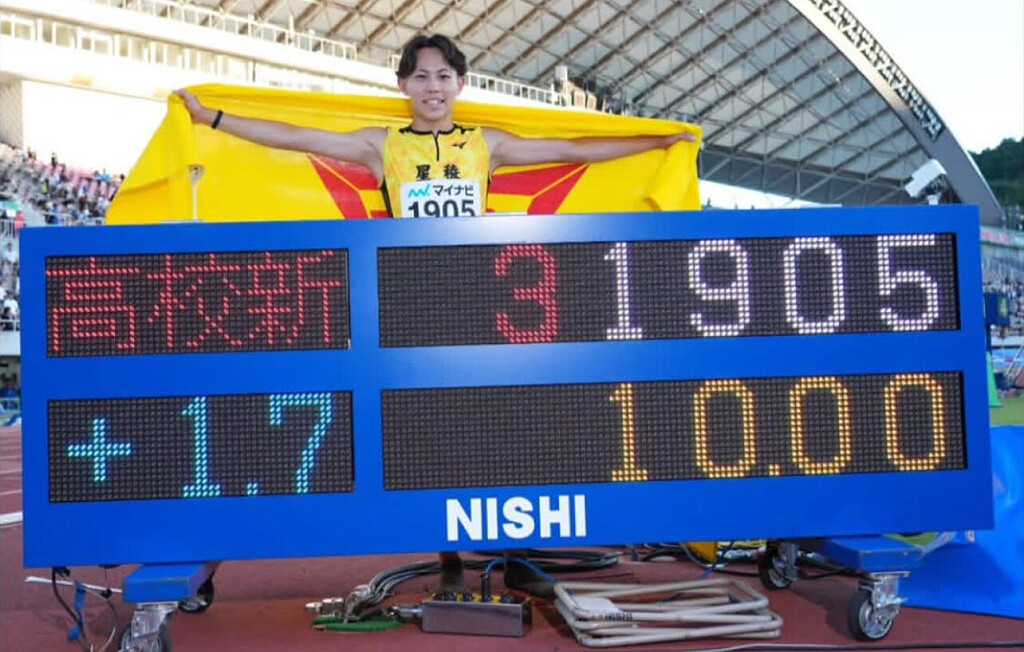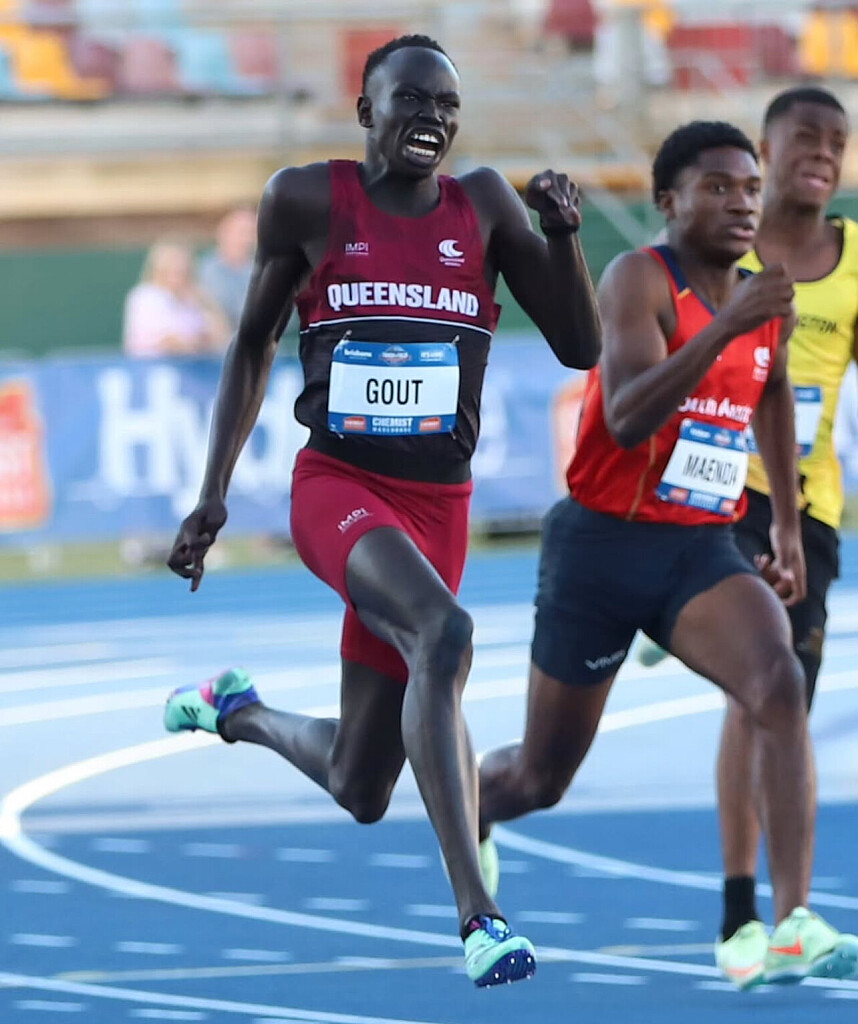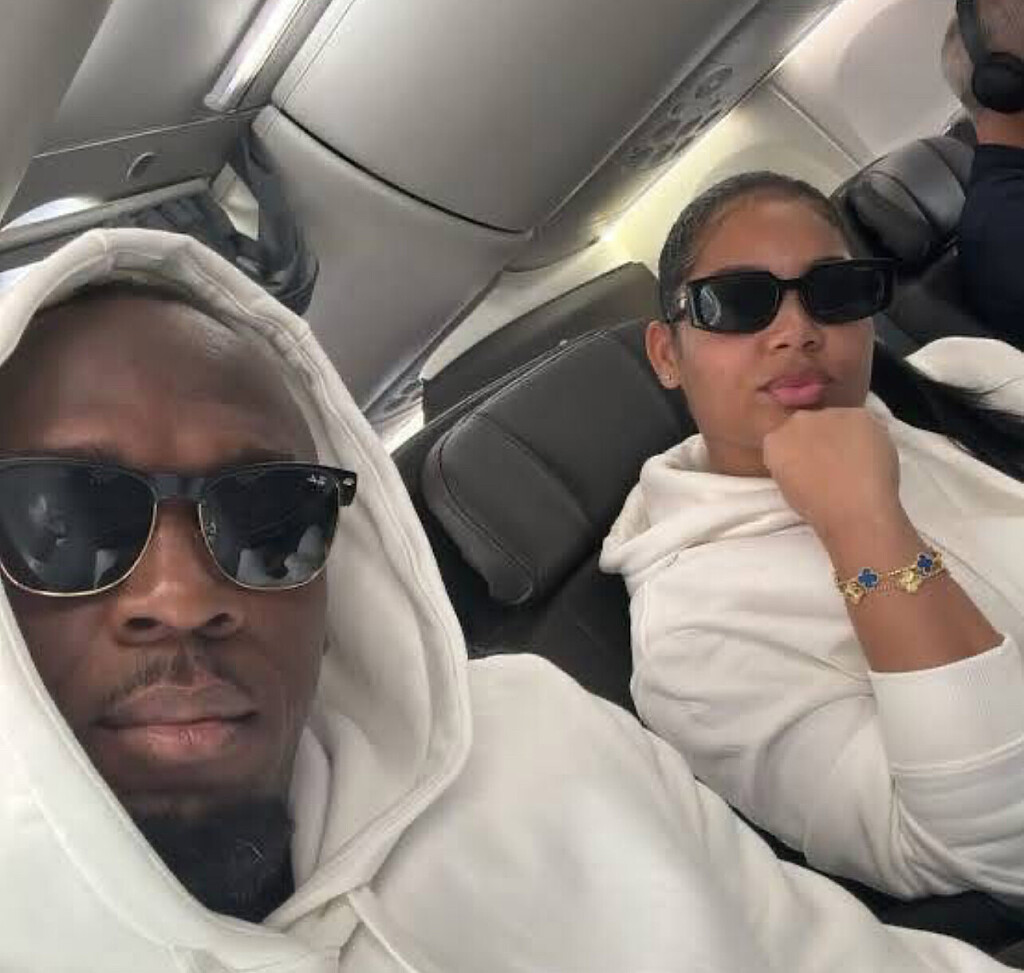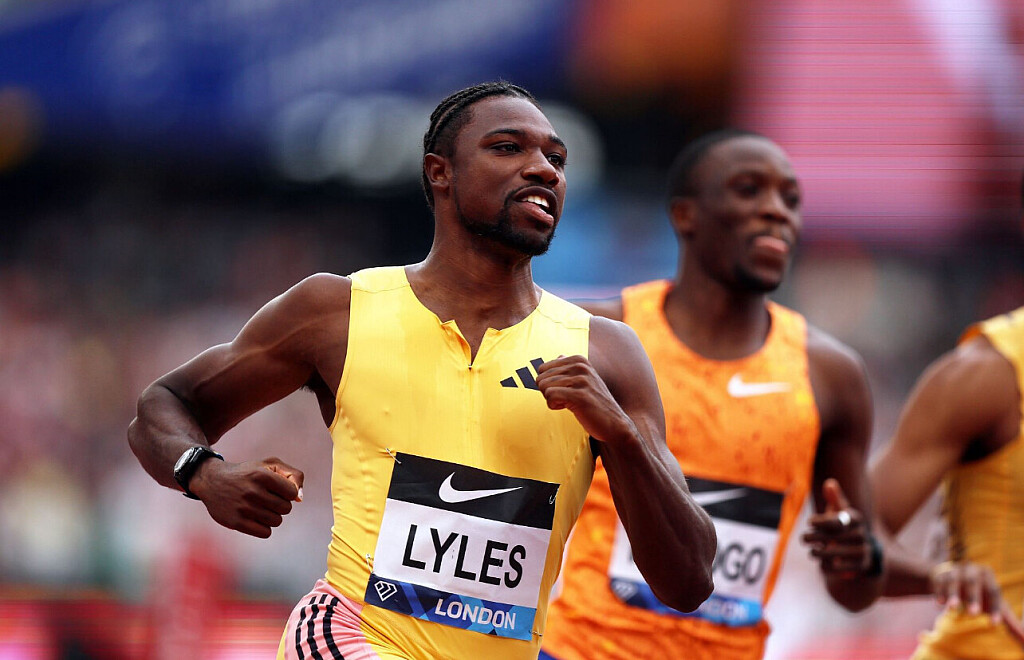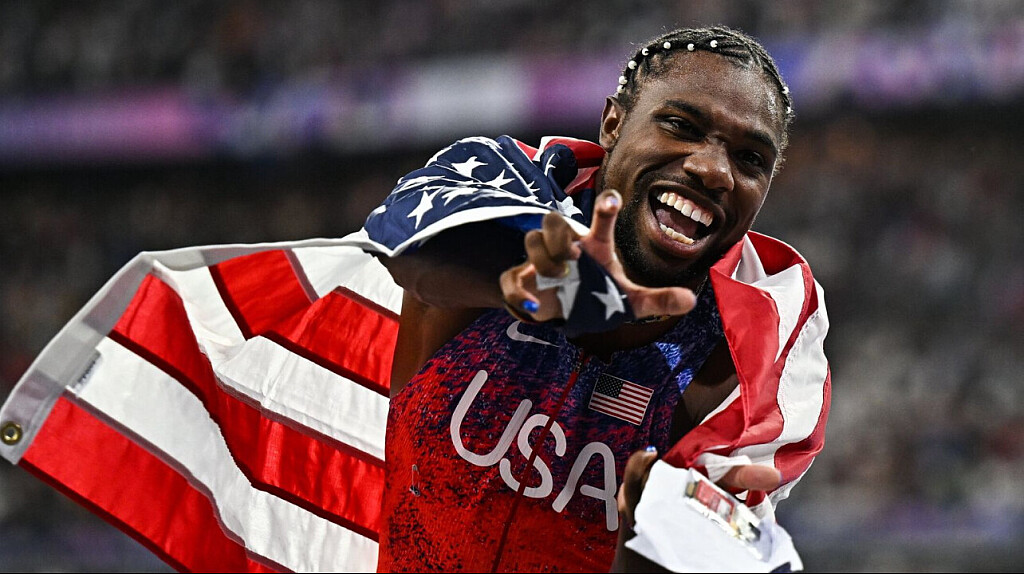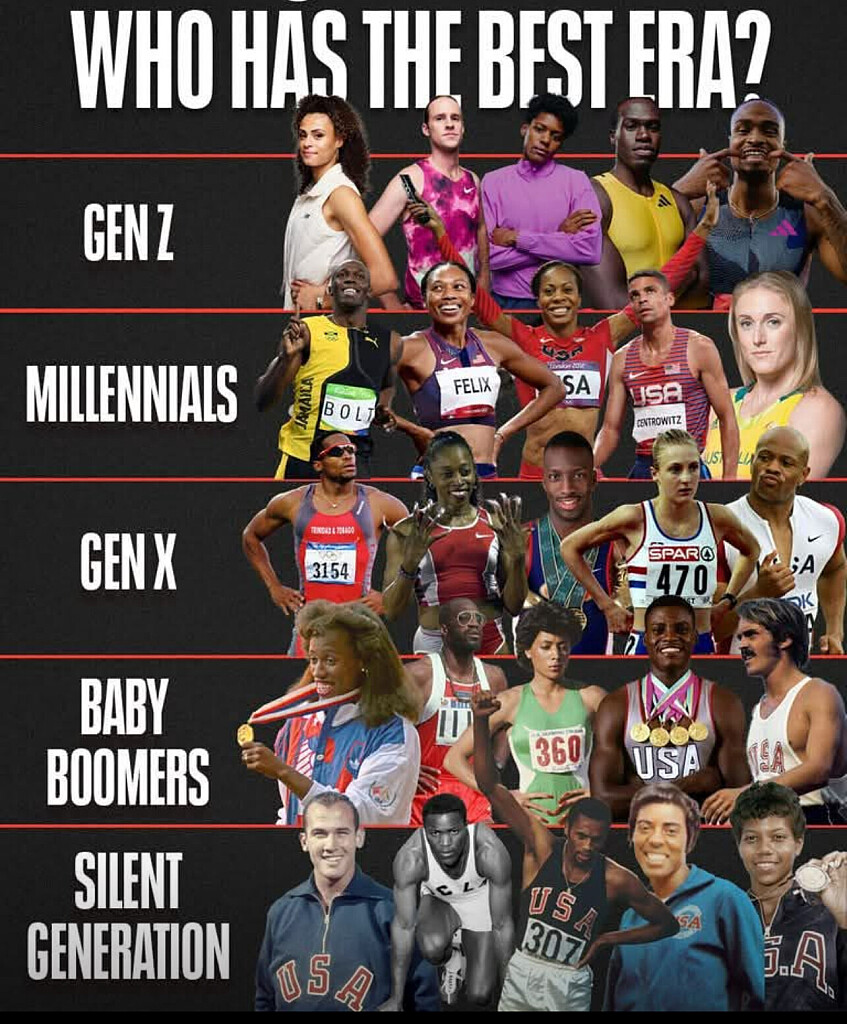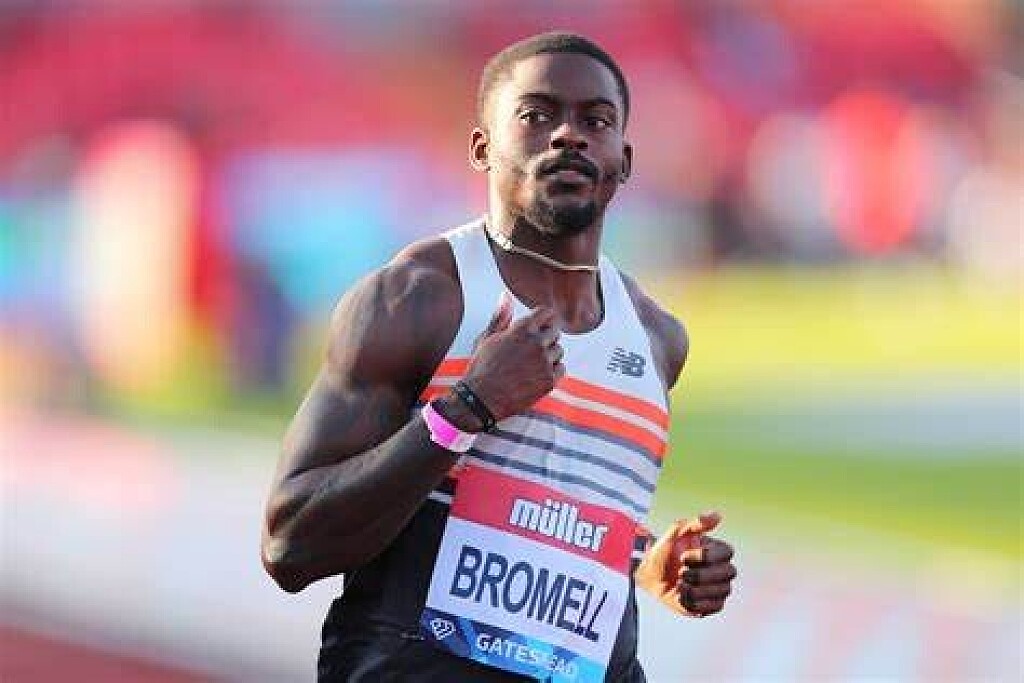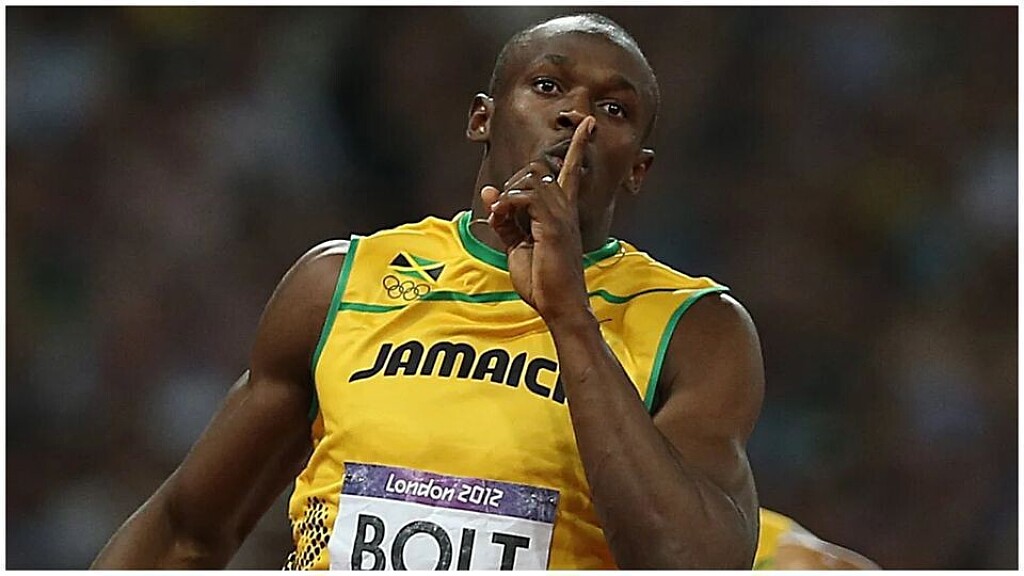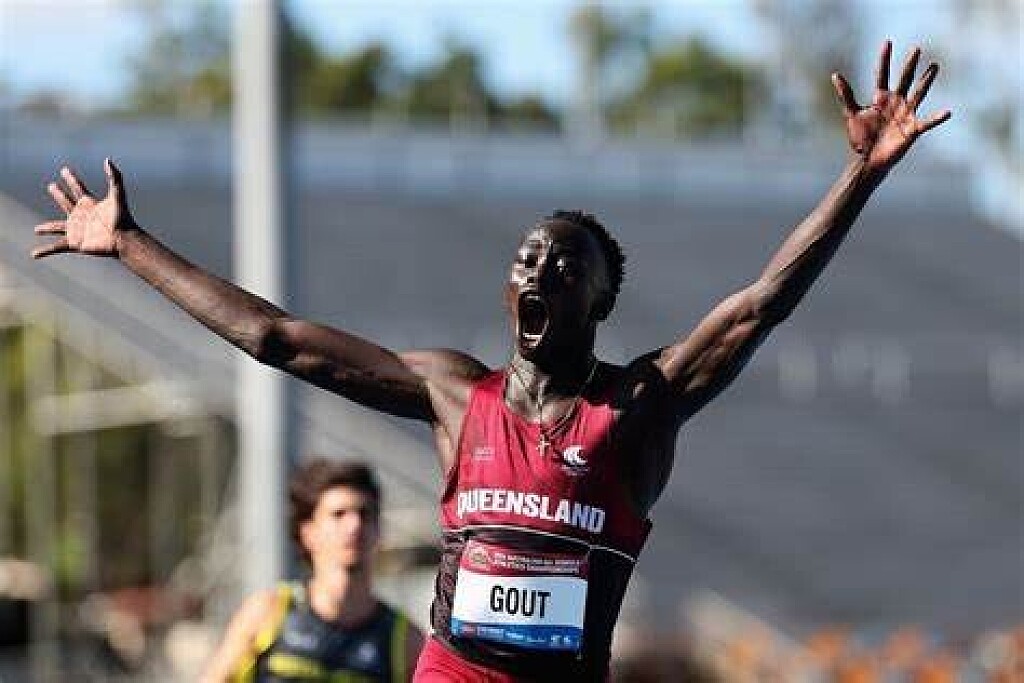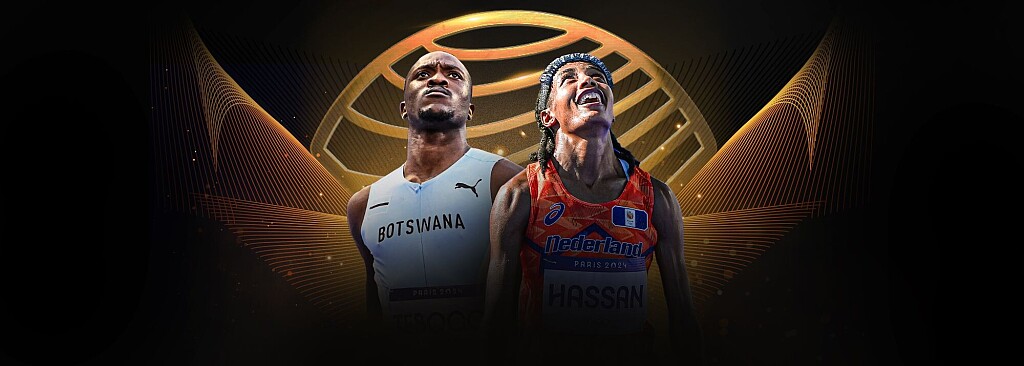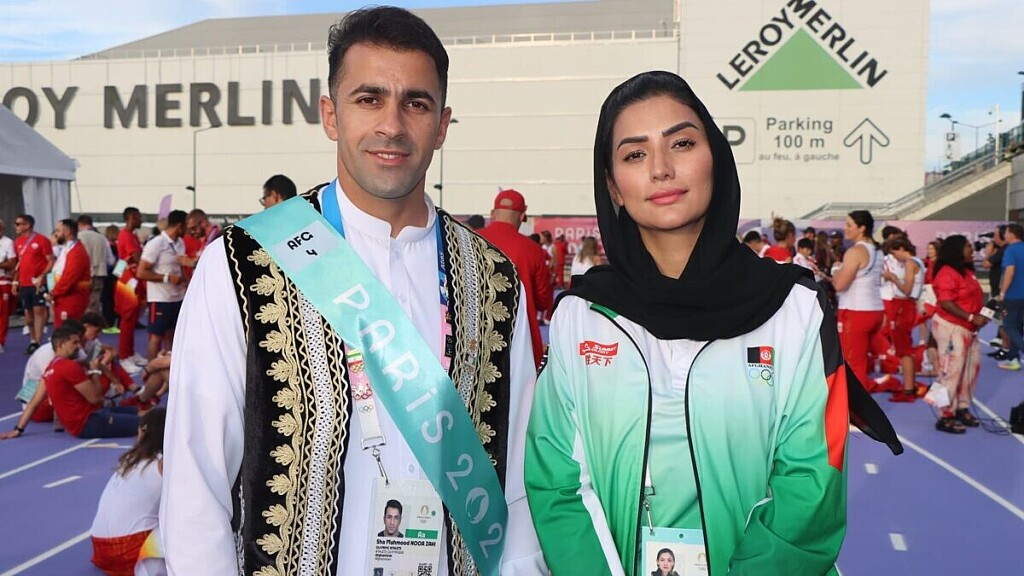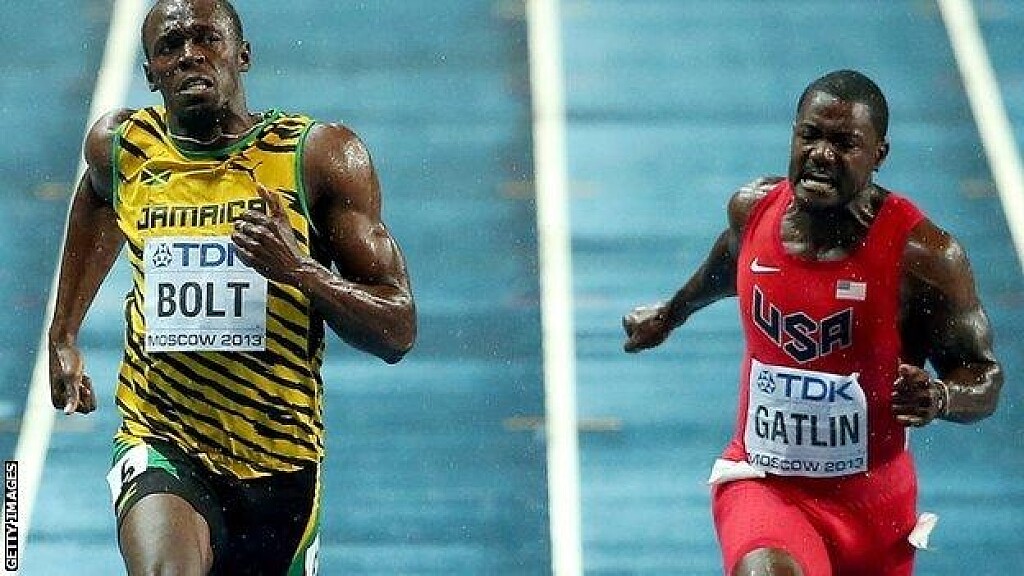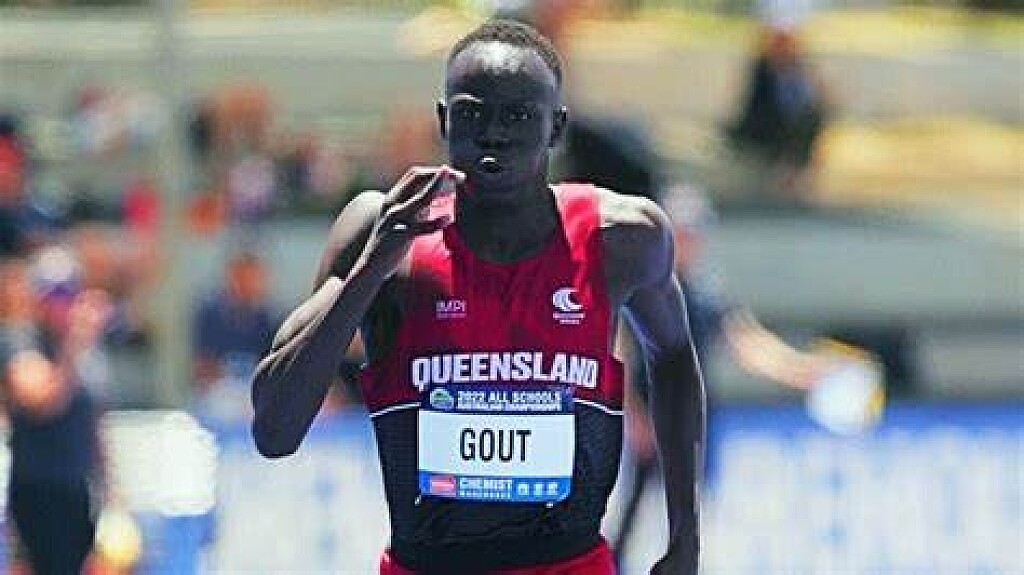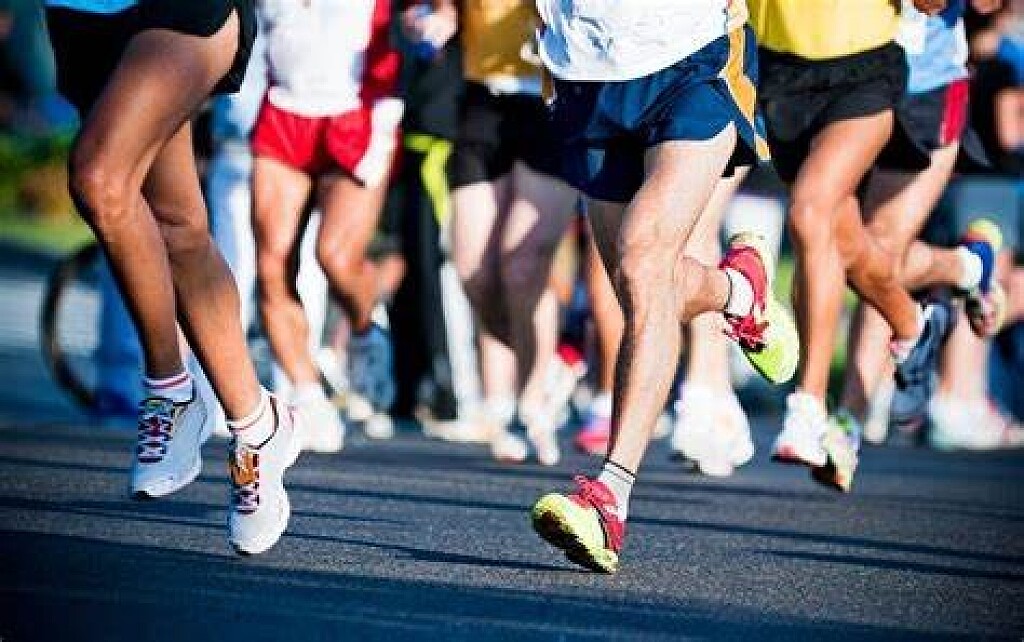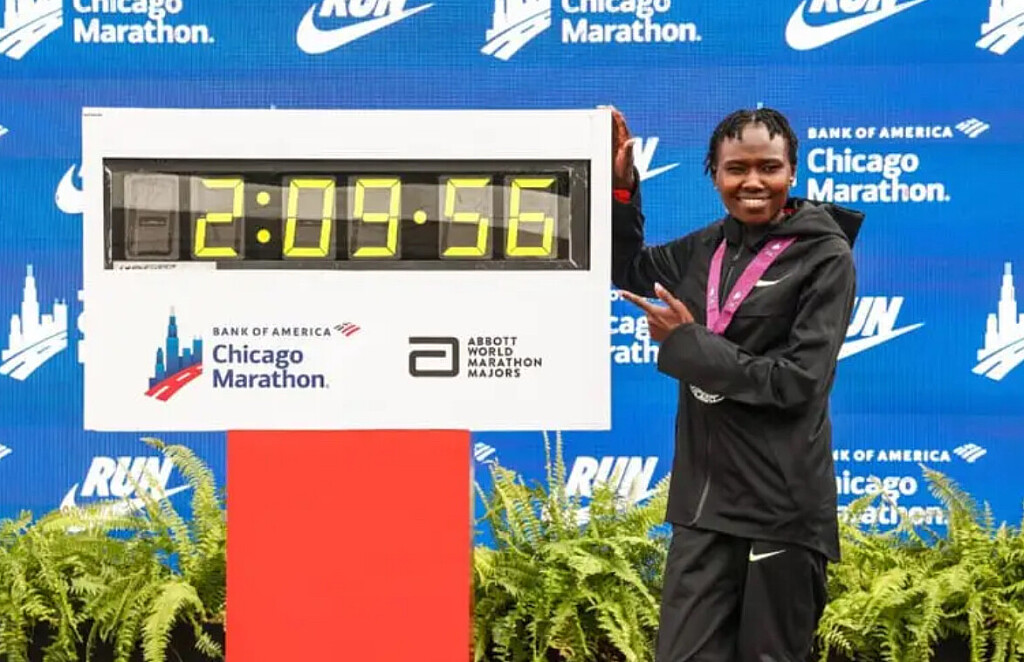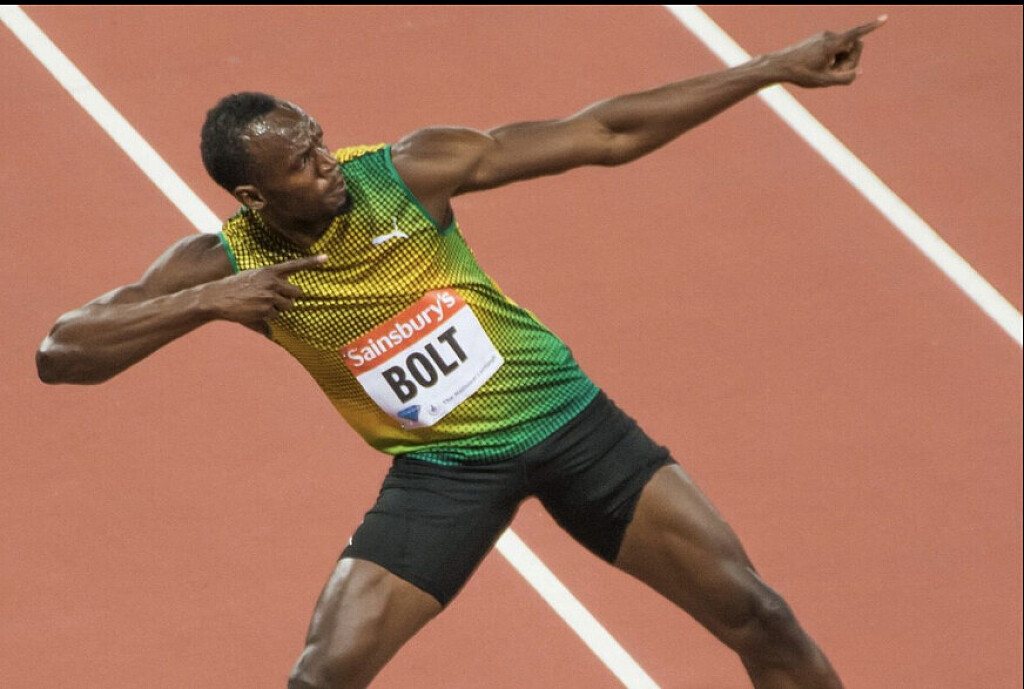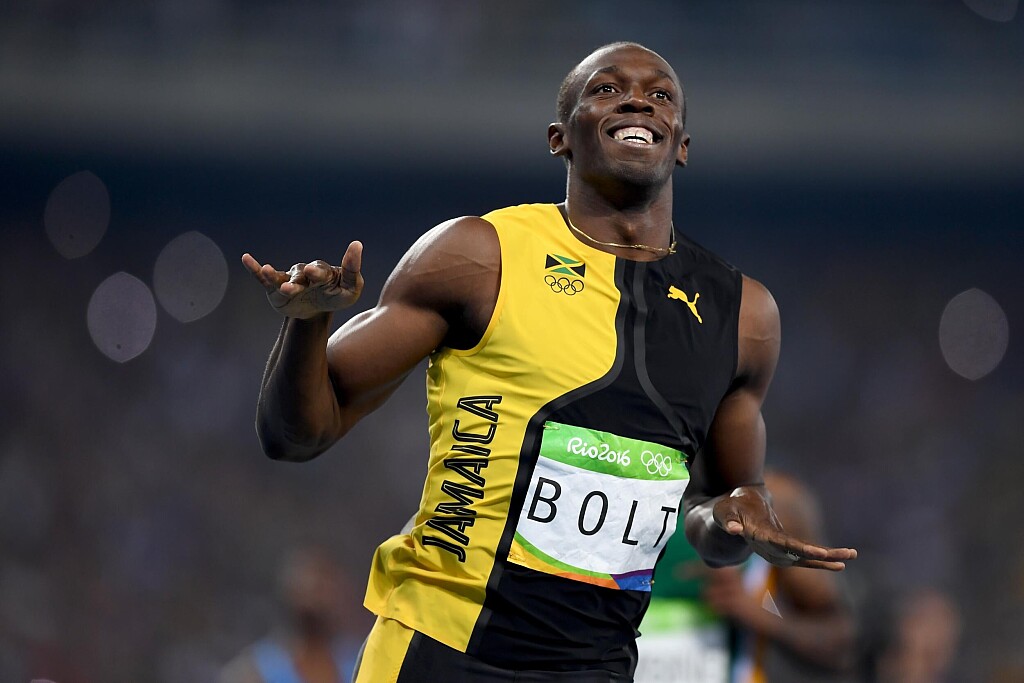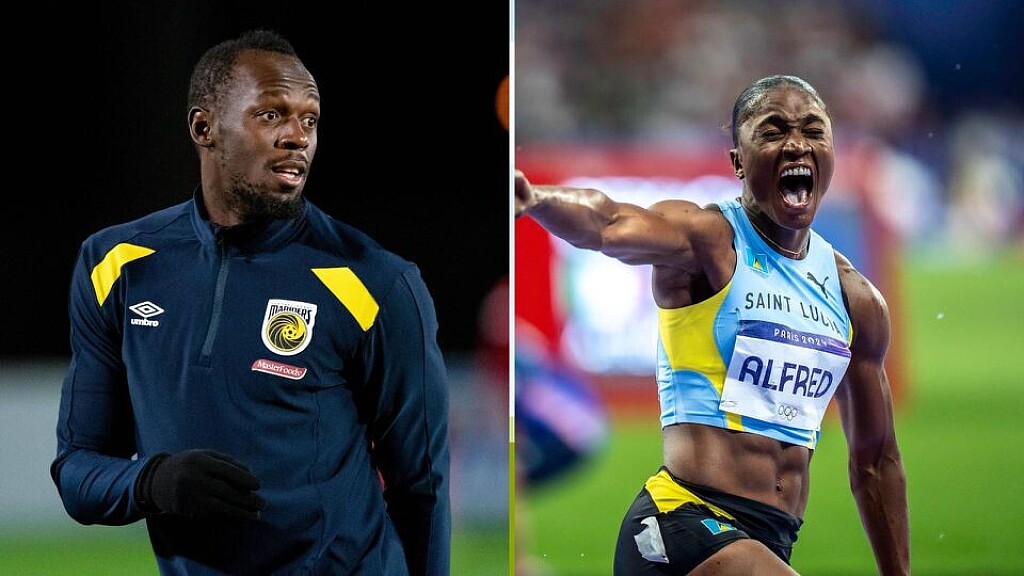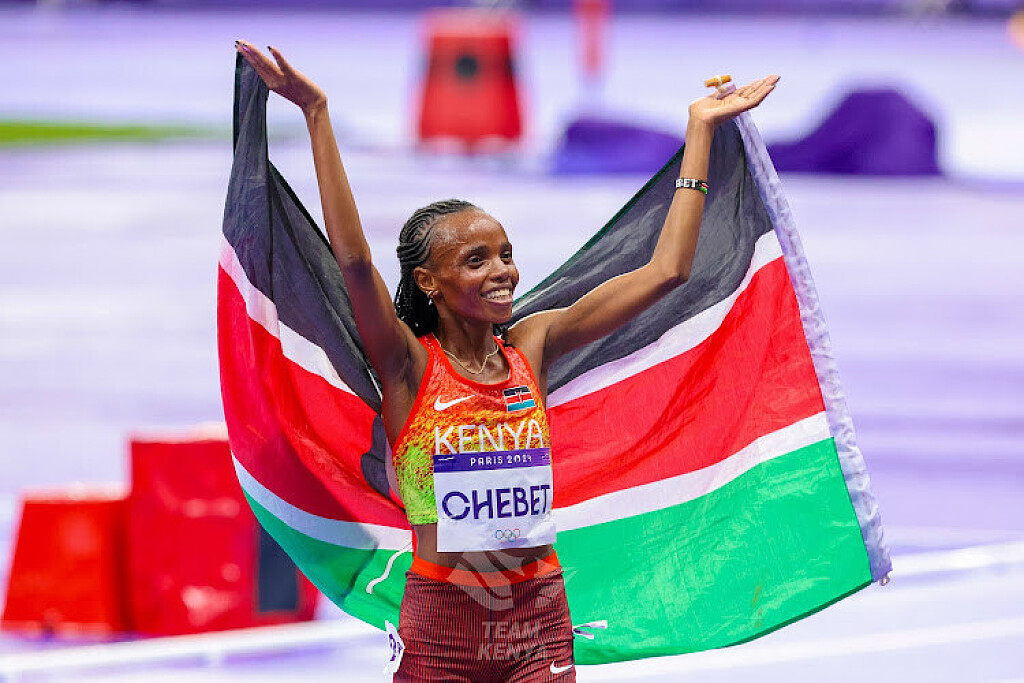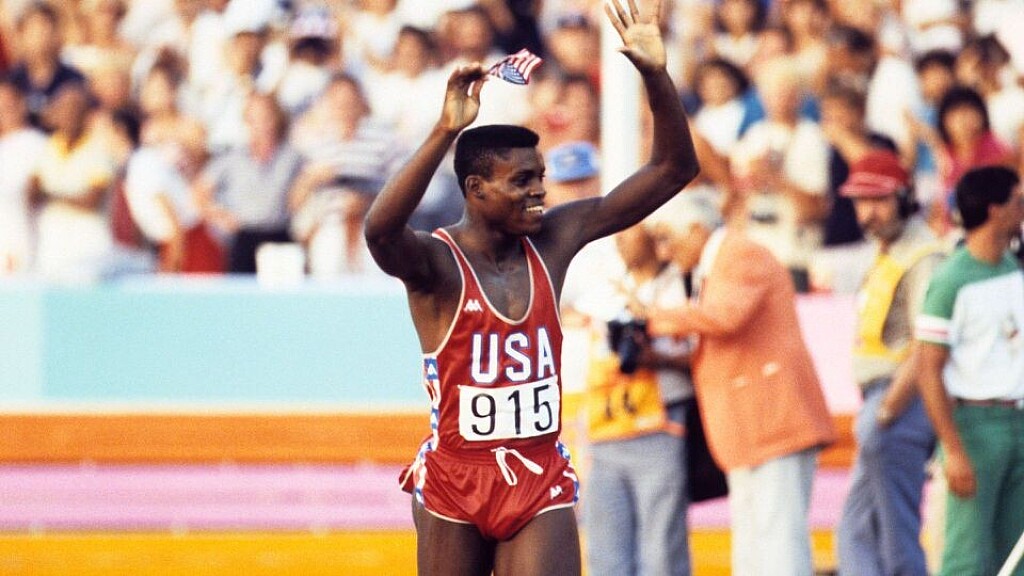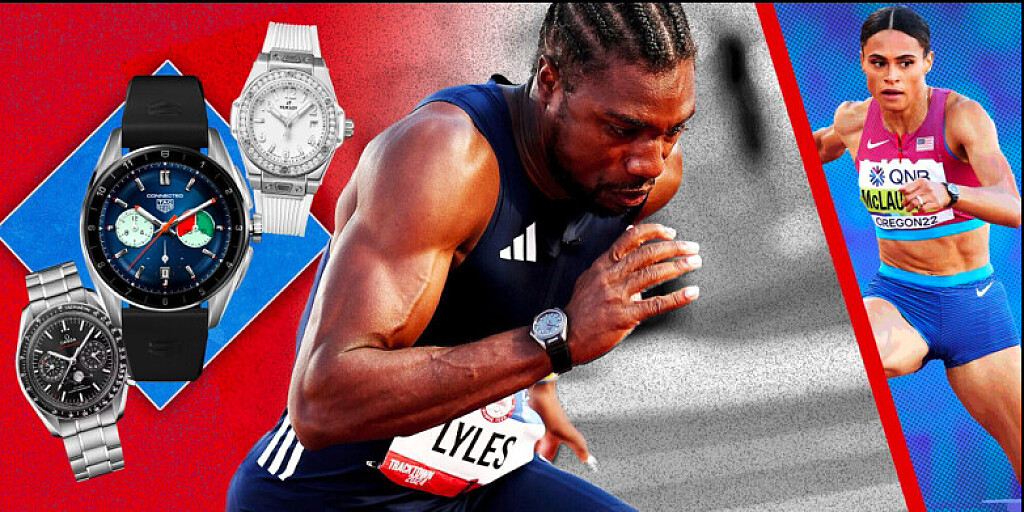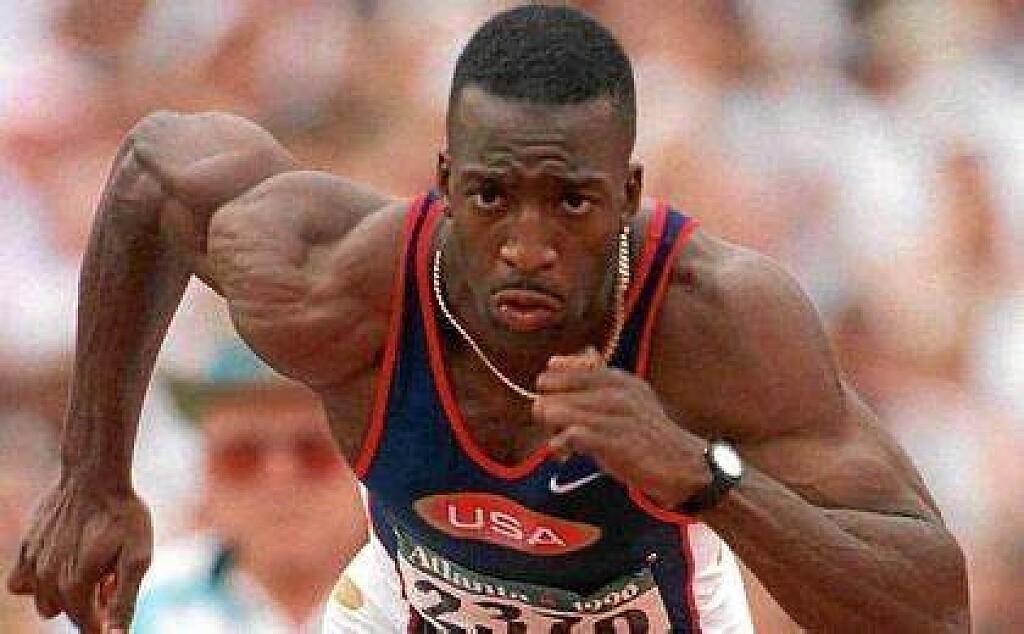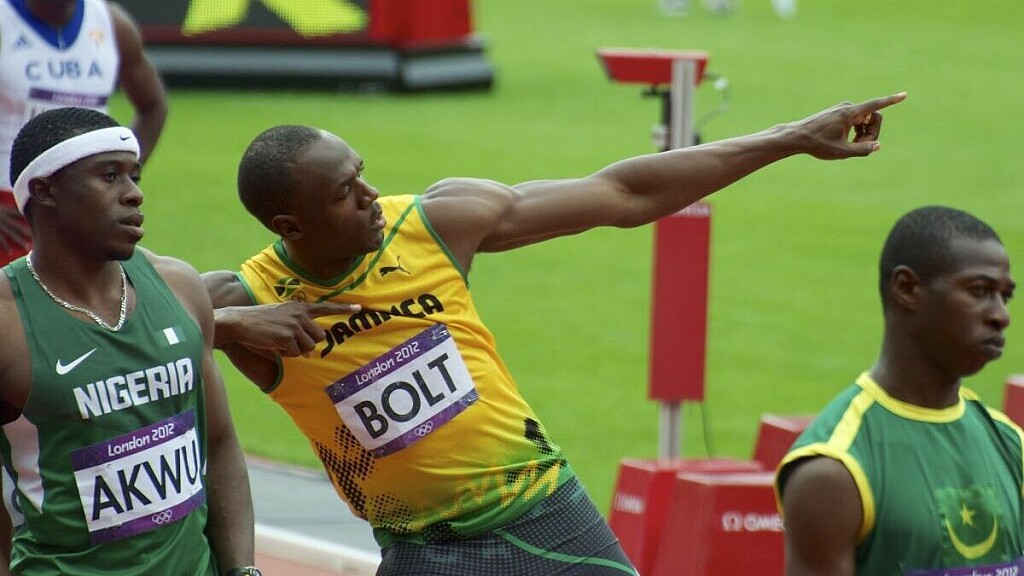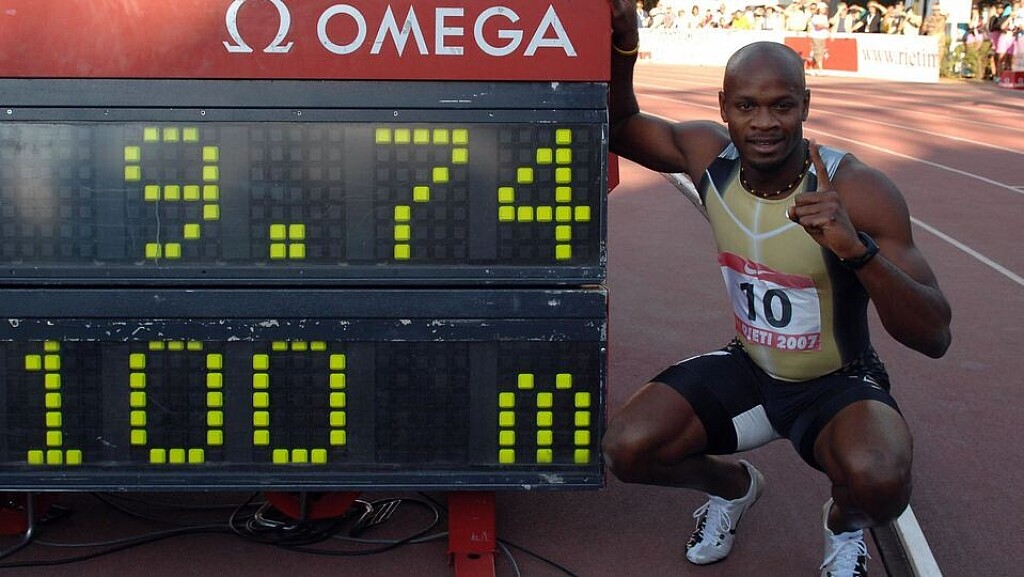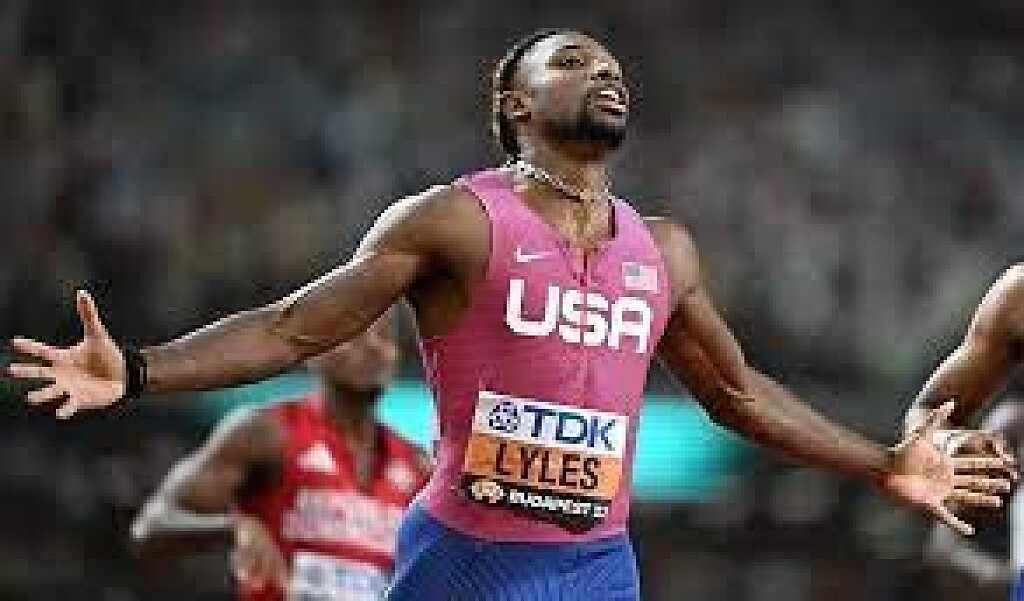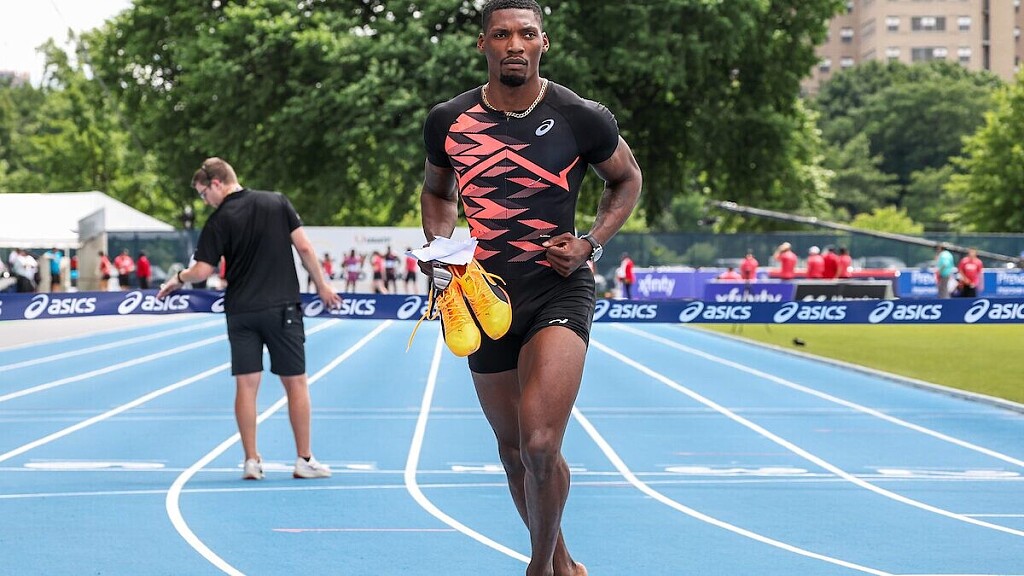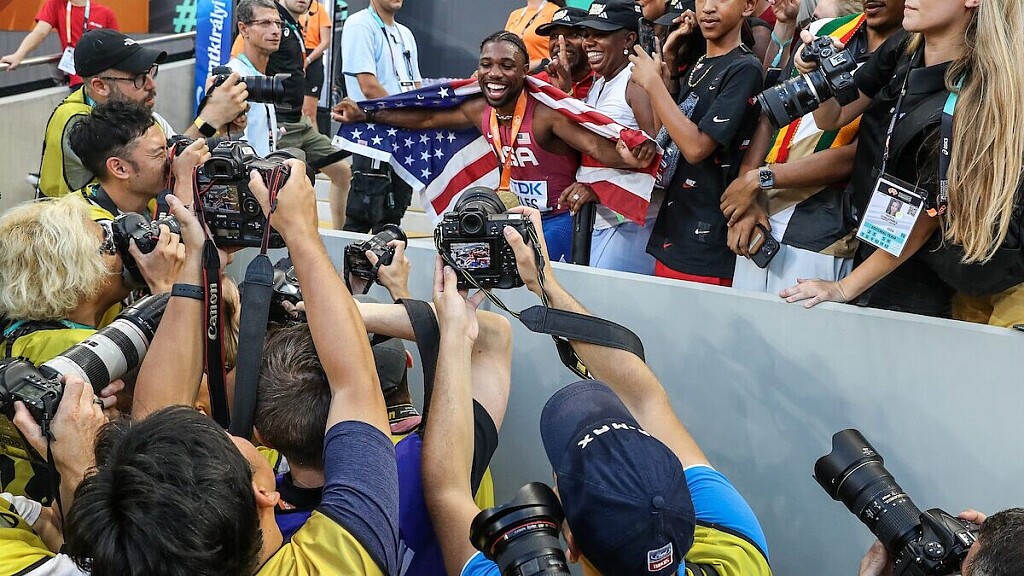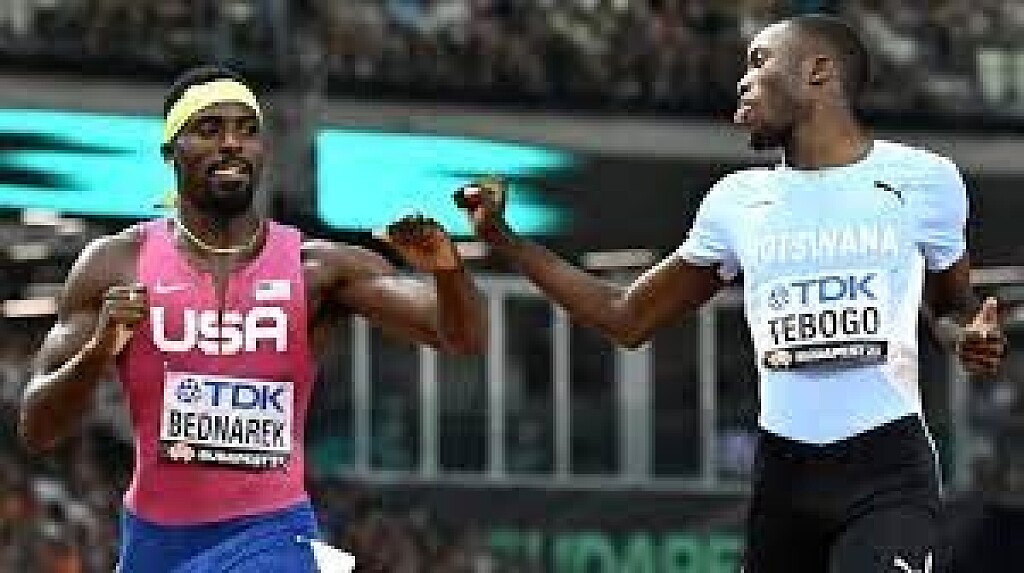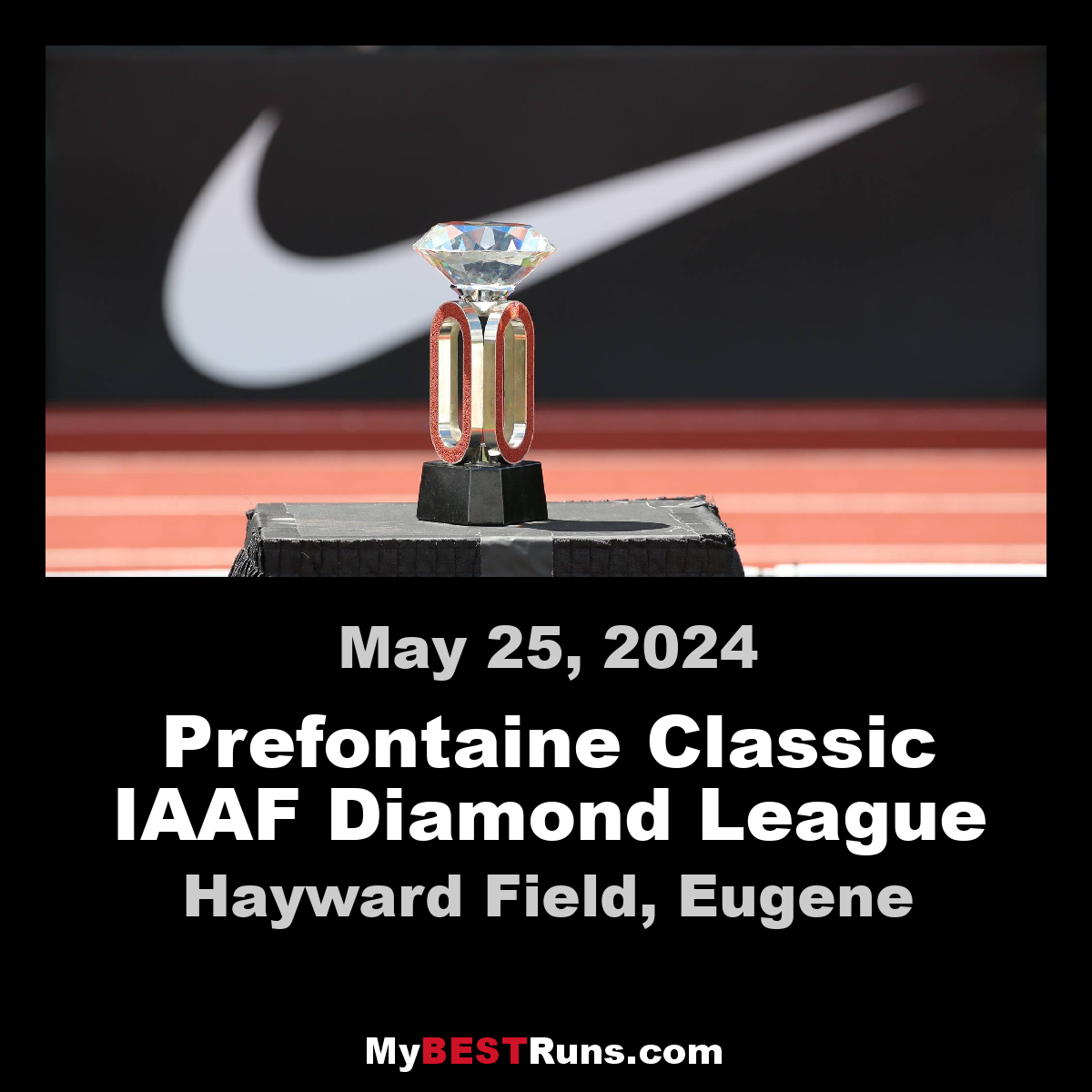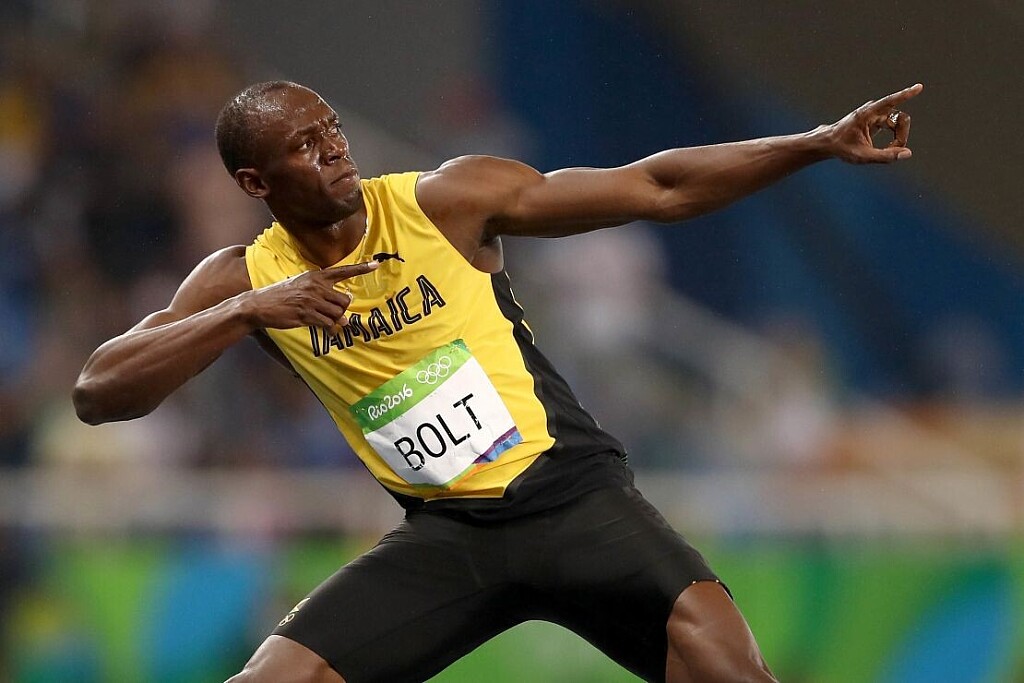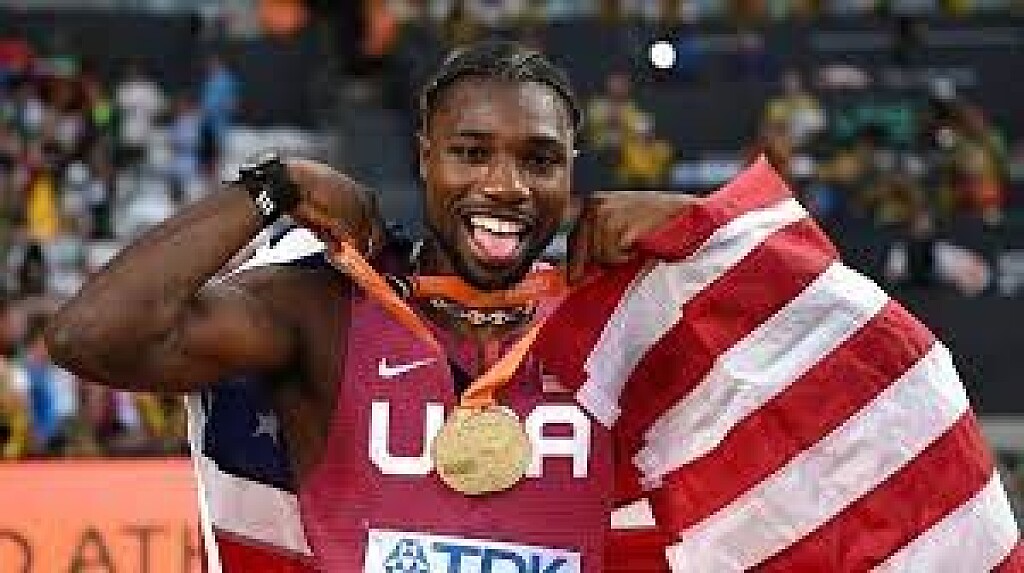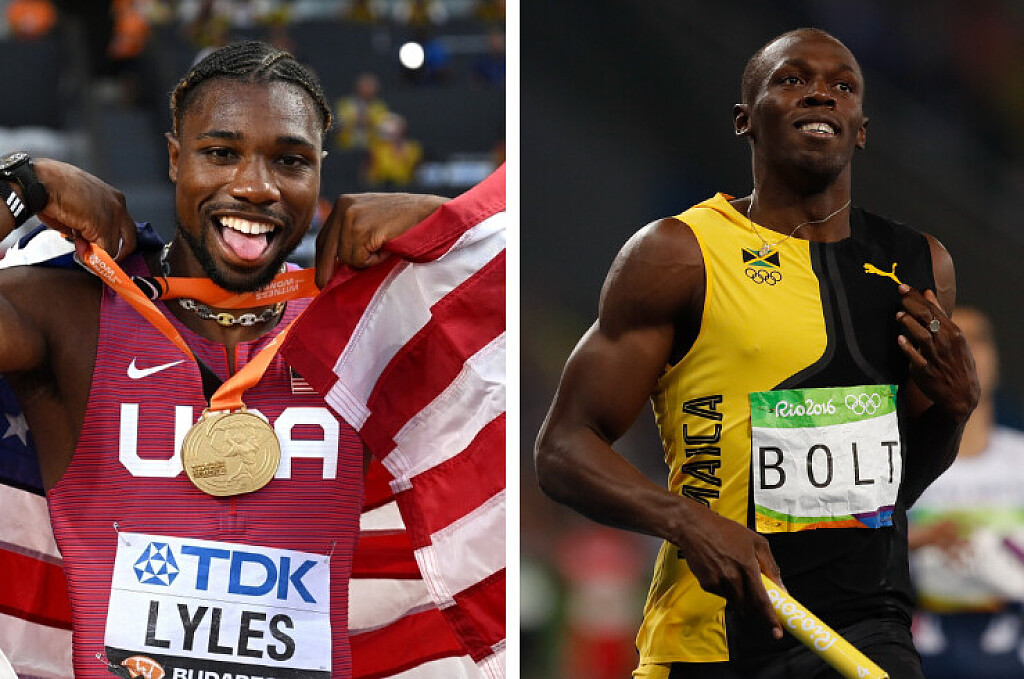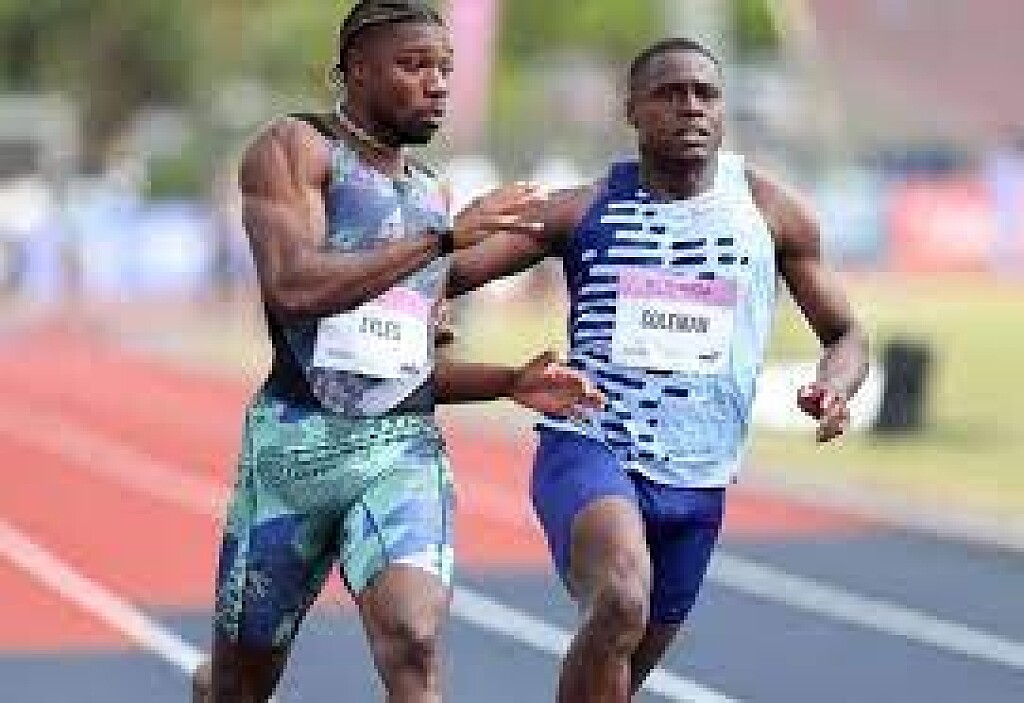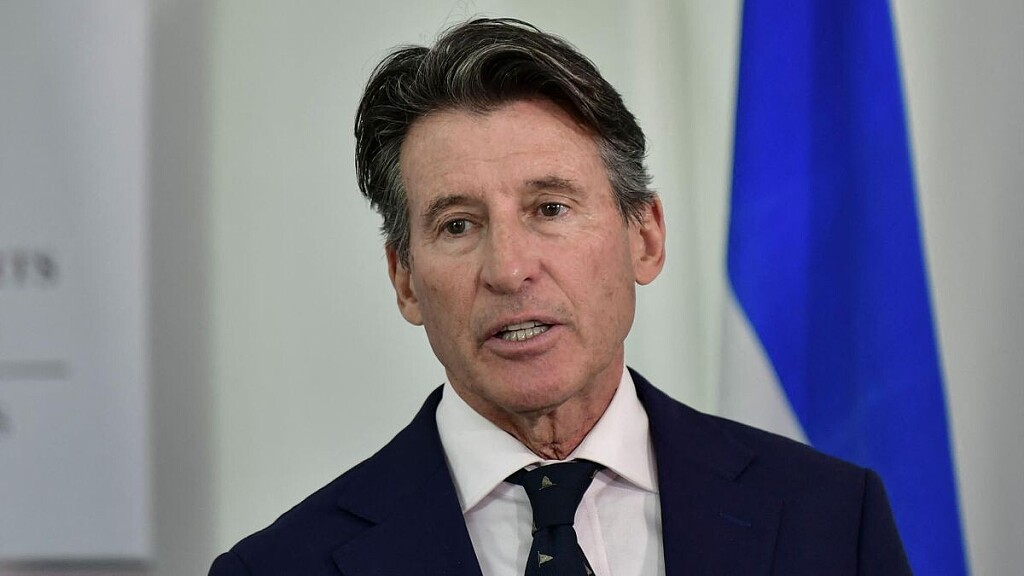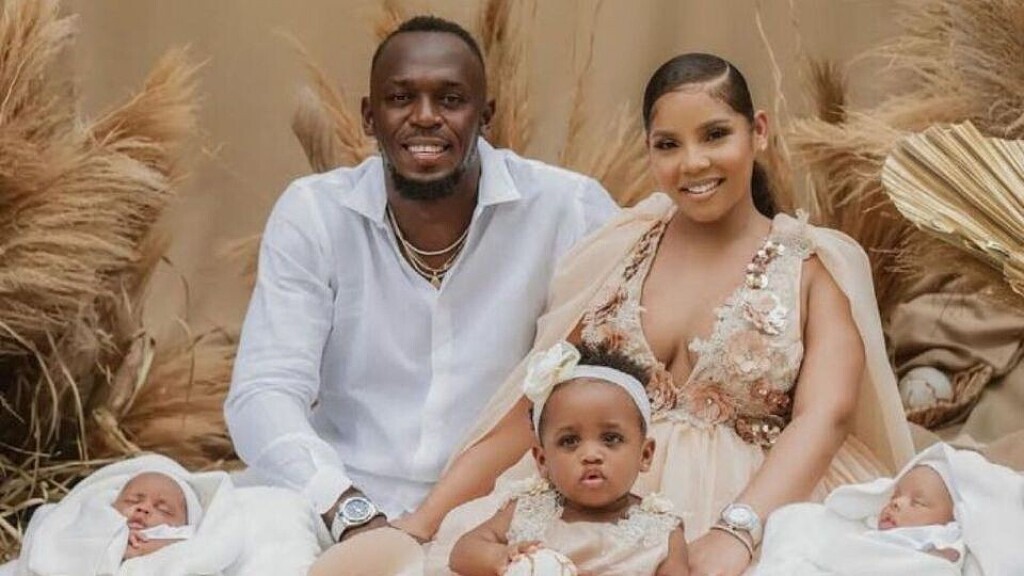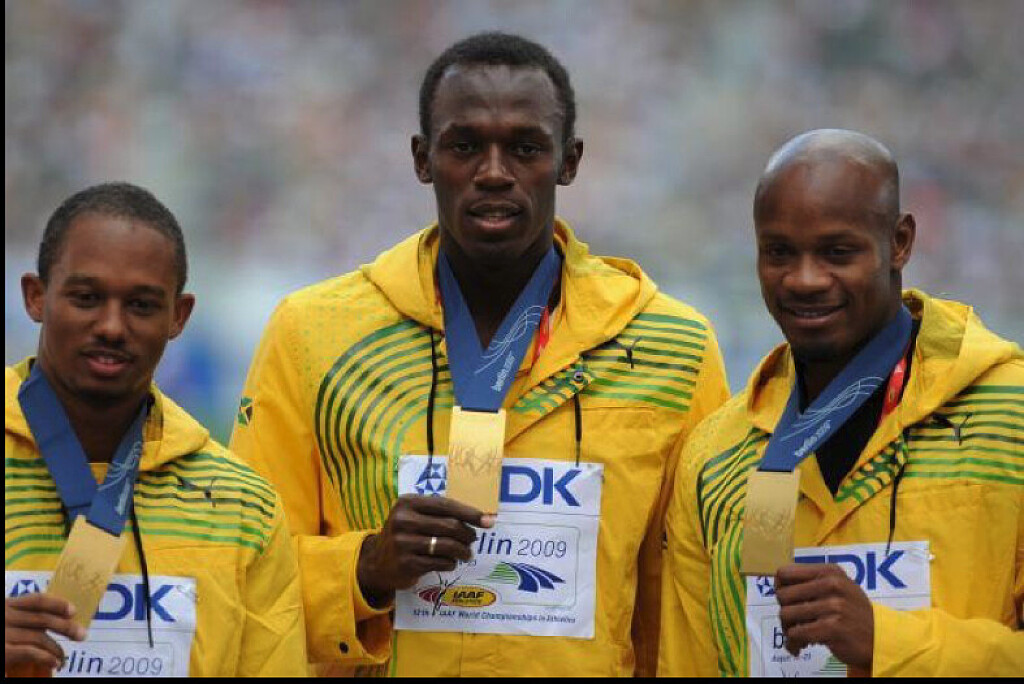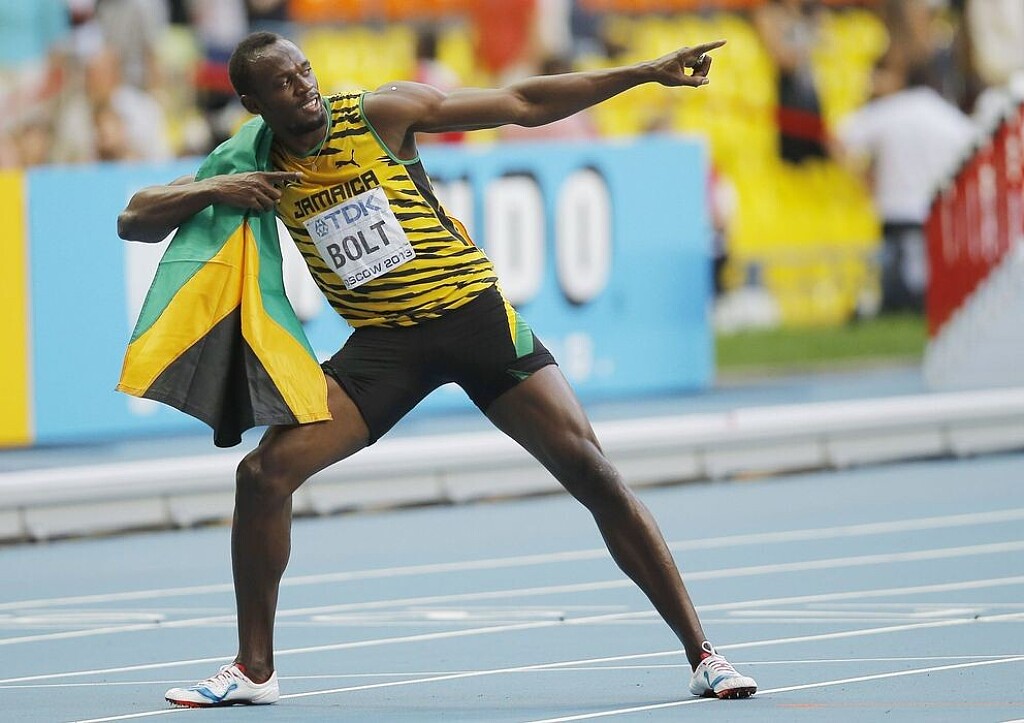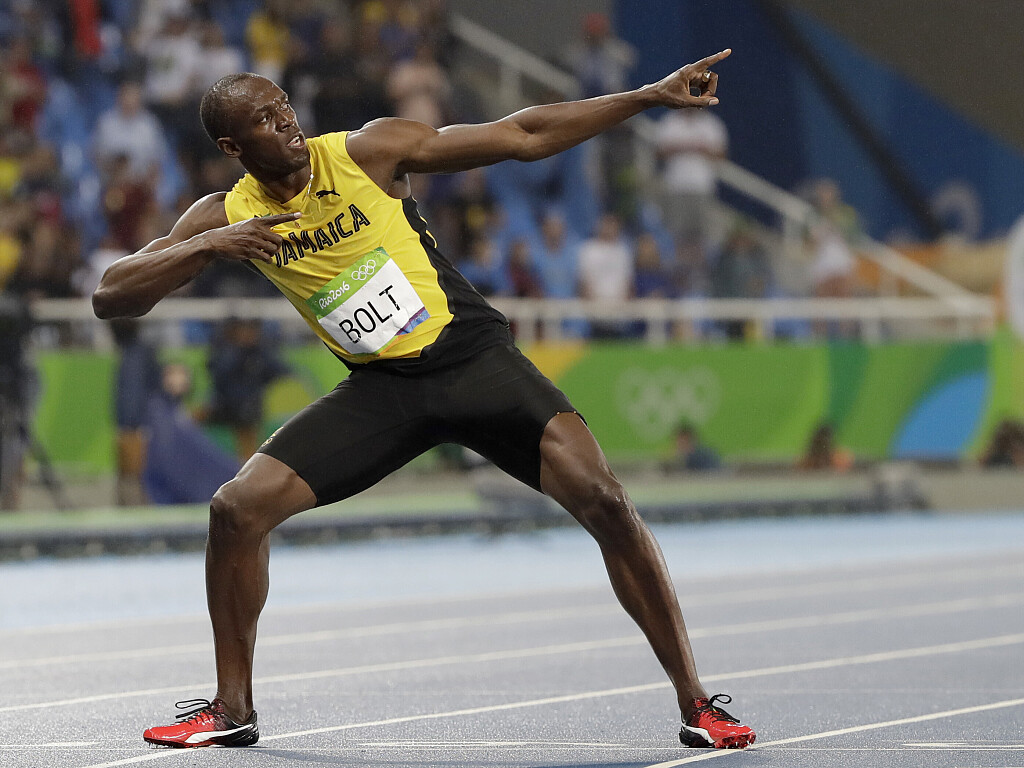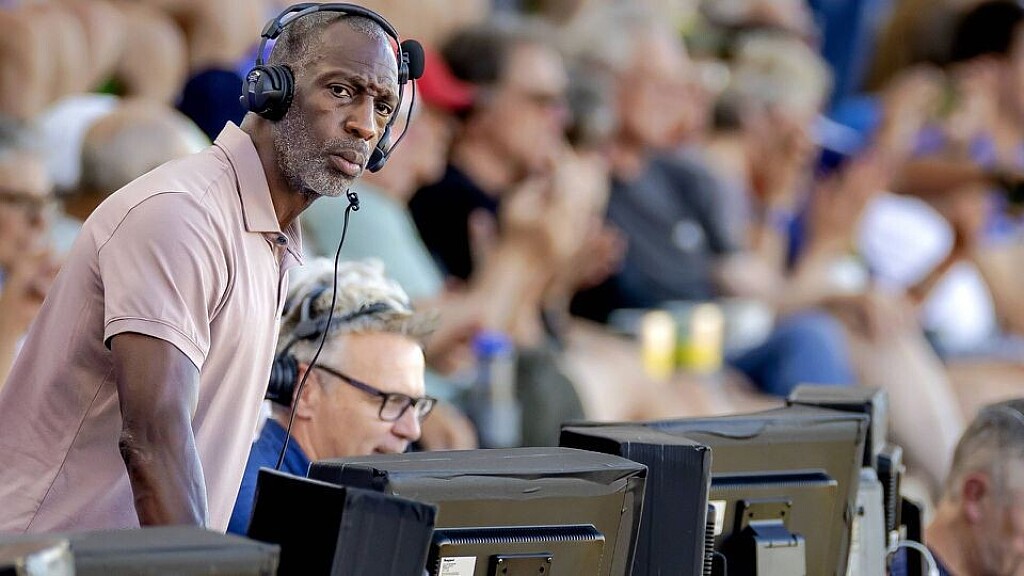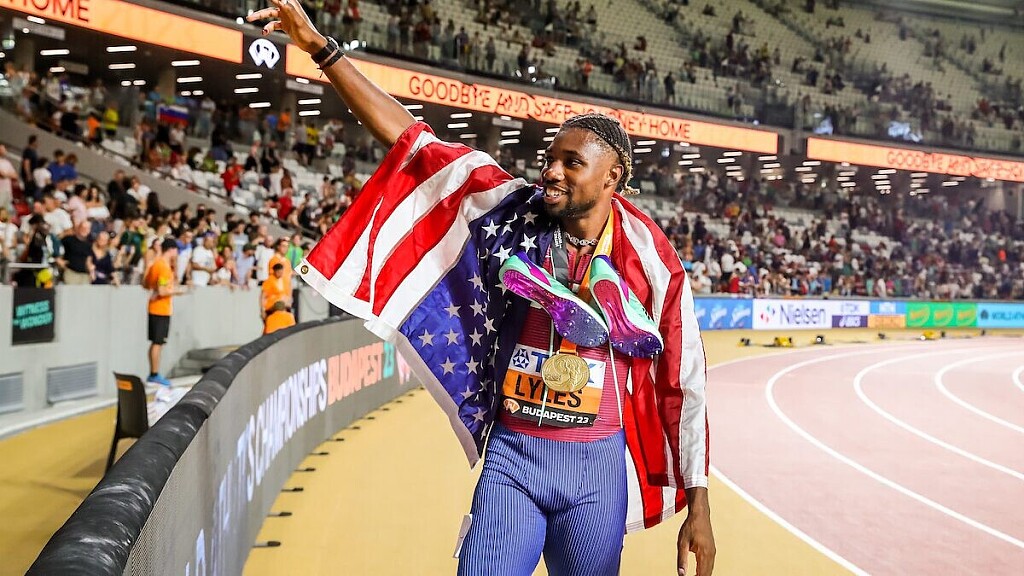Running News Daily
Running News Daily is edited by Bob Anderson. Send your news items to bob@mybestruns.com Advertising opportunities available. Train the Kenyan Way at KATA Kenya and Portugal owned and operated by Bob Anderson. Be sure to catch our movie A Long Run the movie KATA Running Camps and KATA Potato Farms - 31 now open in Kenya! https://kata.ke/
Index to Daily Posts · Sign Up For Updates · Run The World Feed
Articles tagged #Usain Bolt
Today's Running News
Sorato Shimizu Sprints Into History: 16-Year-Old Clocks 10.00s to Set World Age-16 Record
Japanese sprinting phenom Sorato Shimizu has etched his name into the history books with a jaw-dropping performance at the Japanese Inter-School Championships—blazing to a 10.00-secondfinish in the 100 meters. At just 16 years old, Shimizu now owns the fastest time ever recorded by a 16-year-old, breaking the previous world best of 10.09 held by Thailand’s Puripol Boonson.
The time, achieved with a legal wind assistance of +1.7 m/s, marks a stunning personal best for the young star and sets a new World Age-16 Record. The stadium erupted as Shimizu crossed the line and confirmed the time on the scoreboard, with fans and fellow athletes celebrating what could be the beginning of a generational sprinting career.

A Historic Milestone in Sprinting

Running 10.00 seconds in the 100m is a feat few athletes achieve—even at the elite senior level. That a 16-year-old high school student has accomplished it underscores Shimizu’s immense talent and the growing strength of sprinting development in Japan.
Shimizu’s run wasn’t just about raw speed—it showcased poise, explosive acceleration, and flawless execution from start to finish. His reaction time, drive phase, and transition into top-end speed were that of a seasoned pro. It was a performance that stunned not only spectators in Japan but sprint fans across the globe.
Breaking Boonson’s Mark
Before Shimizu’s 10.00, the world age-16 best was 10.09, set by Thailand’s Puripol Boonson in 2022. Boonson has since gone on to become one of Asia’s fastest men—and Shimizu is now poised to follow a similar path, if not exceed it.
With this performance, Shimizu moves into a rarefied tier of sprinting prospects, joining a list that includes the likes of Trayvon Bromell, Erriyon Knighton, and Usain Bolt—who all produced world-class times as teenagers.
The New Face of Japanese Sprinting
Japan has long produced disciplined and technically sound sprinters, with athletes like Abdul Hakim Sani Brown, Yoshihide Kiryu, and Ryota Yamagata helping bring Japanese sprinting into the global spotlight. Sorato Shimizu now emerges as the new face of that legacy—and possibly, its next global champion.
With the Paris Olympics behind us and eyes already shifting to Los Angeles 2028, Shimizu’s name will surely be one to watch on the international scene.
What’s Next for Sorato Shimizu?
While this 10.00 clocking will take some time to fully digest, one thing is clear: Sorato Shimizu is just getting started. Still in high school, his future includes national championships, international junior meets, and, if his progression continues, a spot on Japan’s senior relay and individual sprint squads.
His breakthrough opens new possibilities for Japanese sprinting, showcasing that sub-10 is not a dream for the future—it’s a reality for the present.
Final Word
In an era where sprinting records are harder than ever to break, Sorato Shimizu just redefined what’s possible at age 16. His 10.00-second dash not only resets the record books—it ignites excitement for the future of global sprinting.
This isn’t just a time. It’s a statement.
Sorato Shimizu has arrived.
by Boris Baron
Login to leave a comment
Jamaica Takes Over the 100m in 2025 — But Don’t Count Team USA Out Just Yet
Jamaica is back—and in a big way. With just weeks until the World Athletics Championships Tokyo 2025, the top three times in the men’s 100 meters all belong to Jamaican sprinters:
Kishane Thompson – 9.75
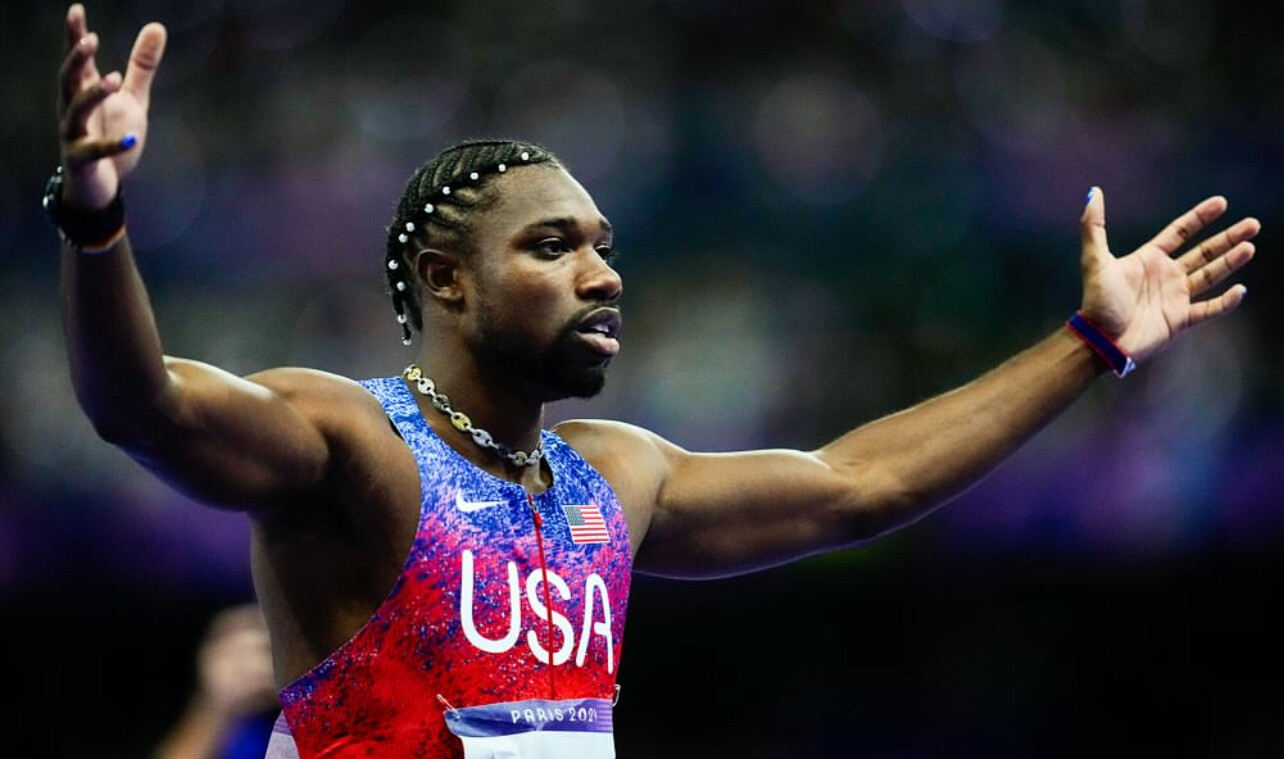
Bryan Levell – 9.82
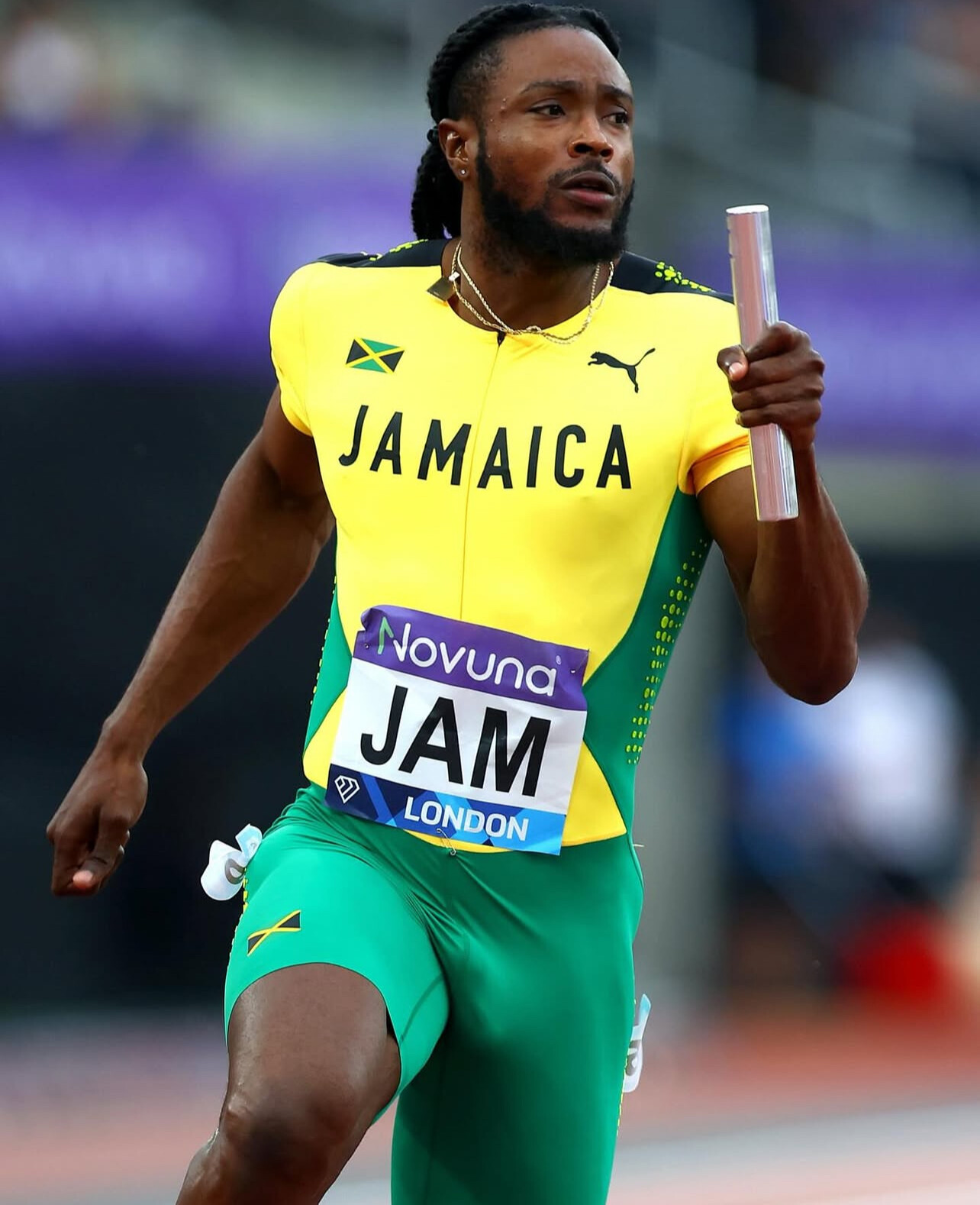
Oblique Seville – 9.83
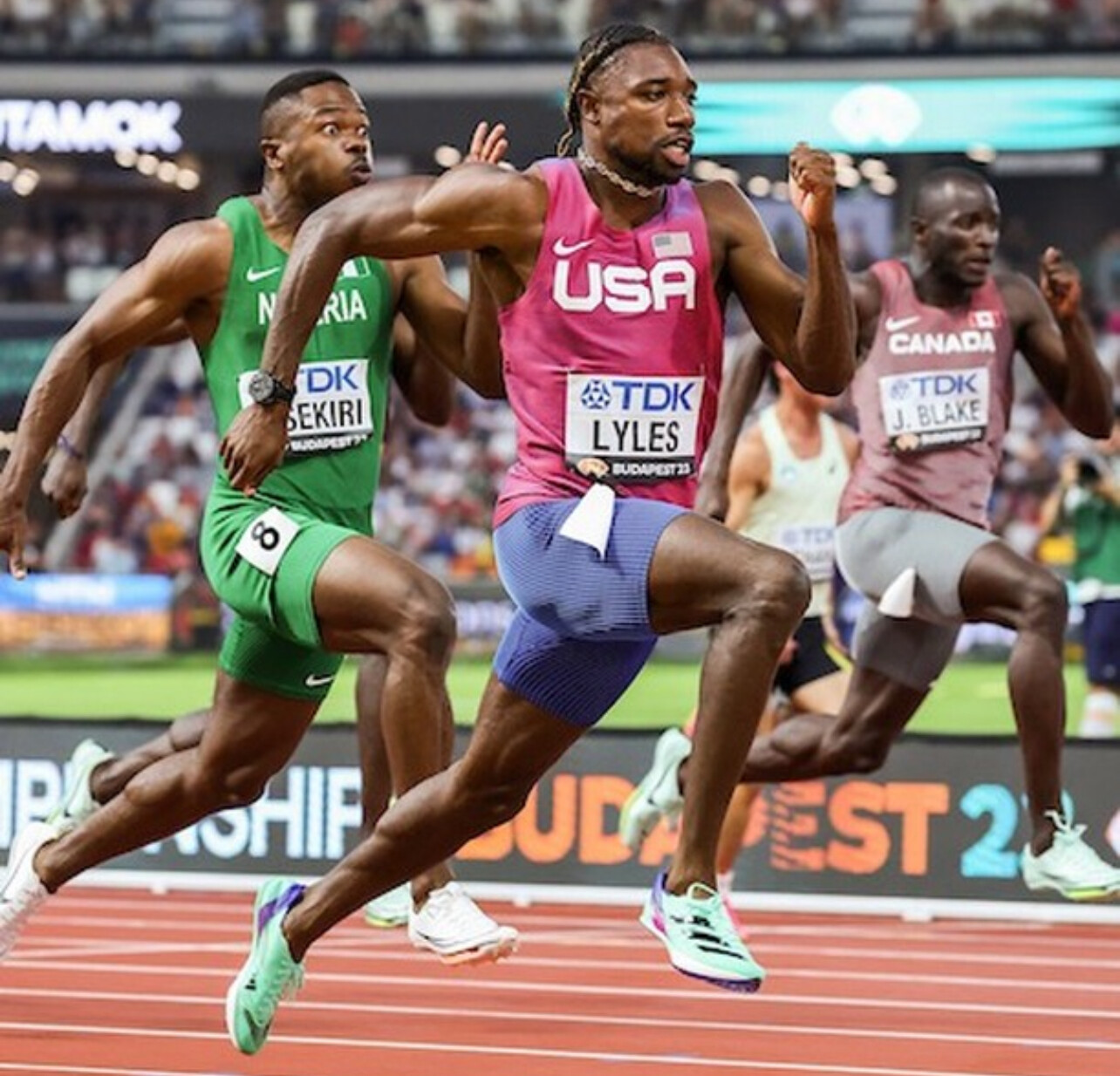
It’s a stunning sweep that echoes the glory days of Usain Bolt, Asafa Powell, and Yohan Blake. Once again, Jamaica is asserting sprinting dominance on the global stage.
But the Americans aren’t backing down.
The U.S. Response
Christian Coleman, the 2019 World Champion and indoor world record holder, remains a serious contender. While he hasn’t cracked the 9.80 mark this season, his raw speed and big-meet experience can’t be ignored.
Then there’s Noah Lyles, the reigning 100m world champion from 2023. Lyles opened 2025 focused more on the 200m and Olympic buildup, but he’s expected to peak at the right time. He holds a personal best of 9.83, and if he gets the start right, he can be deadly in the final 30 meters.
Fred Kerley and Trayvon Bromell are also in the mix, both capable of sub-9.90 performances when healthy and locked in. Their challenge now is to stay consistent as the season progresses.
The Rivalry is Back
Tokyo 2025 could deliver one of the most thrilling 100-meter finals in recent memory:
• Three Jamaicans in peak form.
• Four Americans with world-class credentials.
• African stars like Omanyala and Tebogo chasing their first world title.
It’s a global showdown that brings back the tension and electricity of the Bolt-Gatlin era—only this time, the Jamaicans aren’t chasing; they’re being chased.
As World Athletics put it: “JAMAICA TO THE WORLD” — but America might have something to say about that.
by Boris Baron
Login to leave a comment
Australia’s teenage sprint sensation, Gout Gout, is gearing up for his biggest stage yet — the 2026 Commonwealth Games in Glasgow.
At just 17 years old, Gout Gout has already rewritten the record books. The Queensland-based sprinter, born in December 2007 to South Sudanese parents, is widely regarded as one of the most exciting young talents in global athletics. His rapid rise has drawn comparisons to legends like Usain Bolt — and for good reason.
Gout currently holds the Oceanian 200m record with a time of 20.02 seconds, set at the Golden Spike meet in Ostrava earlier this year. He also clocked 10.17 in the 100m to win the Australian U-18 title and later dominated the U-20 division. His combination of top-end speed, graceful stride, and fierce competitive drive has made him a must-watch on the world stage.
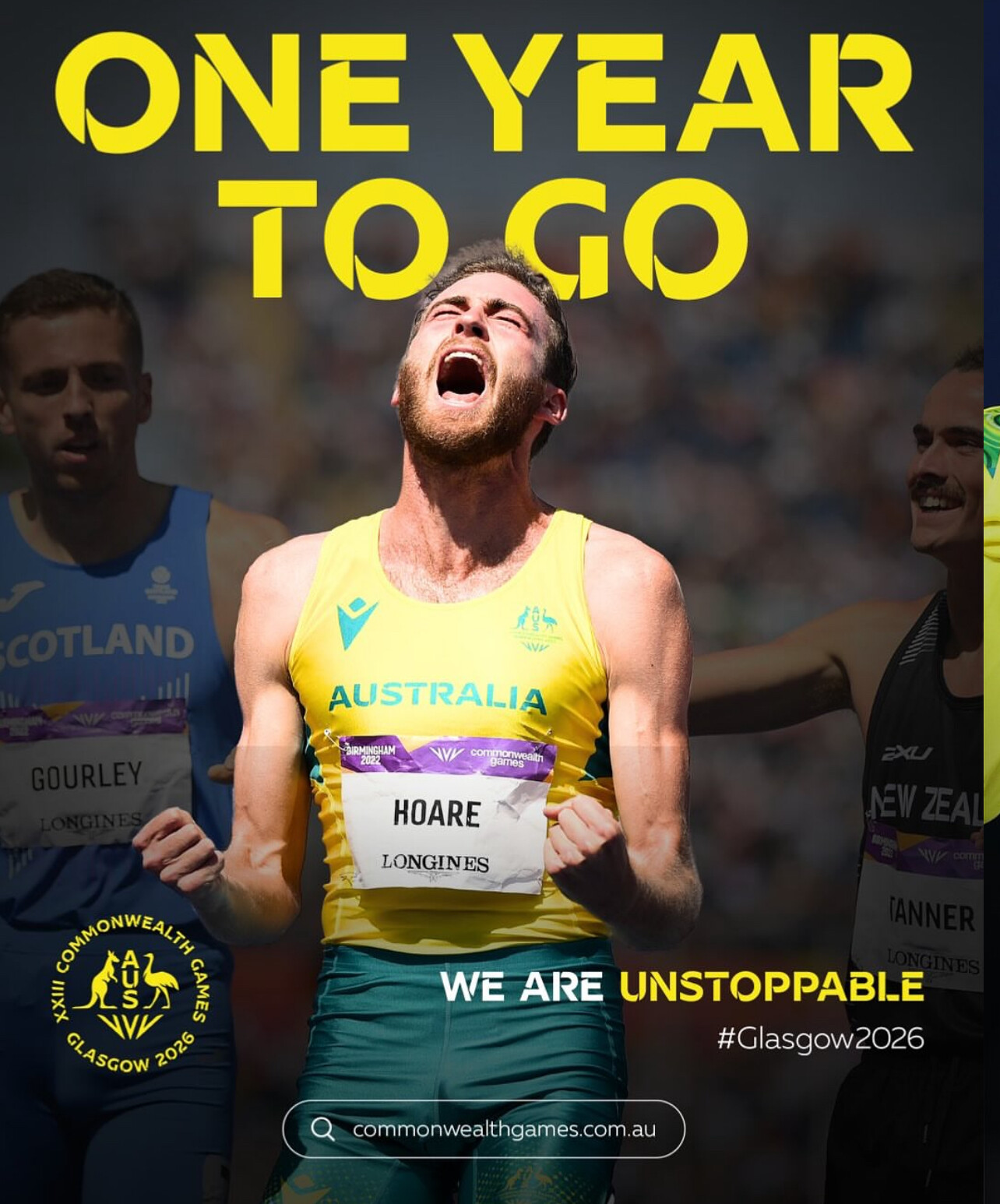
Now, the teen phenom is set to represent Australia at the 2026 Commonwealth Games, scheduled for July 23 to August 2 in Glasgow, Scotland. He is expected to compete in the 100m, while his entry in the 200m remains under consideration due to scheduling conflicts with the World Junior Championships, which will take place shortly after in Eugene, Oregon.
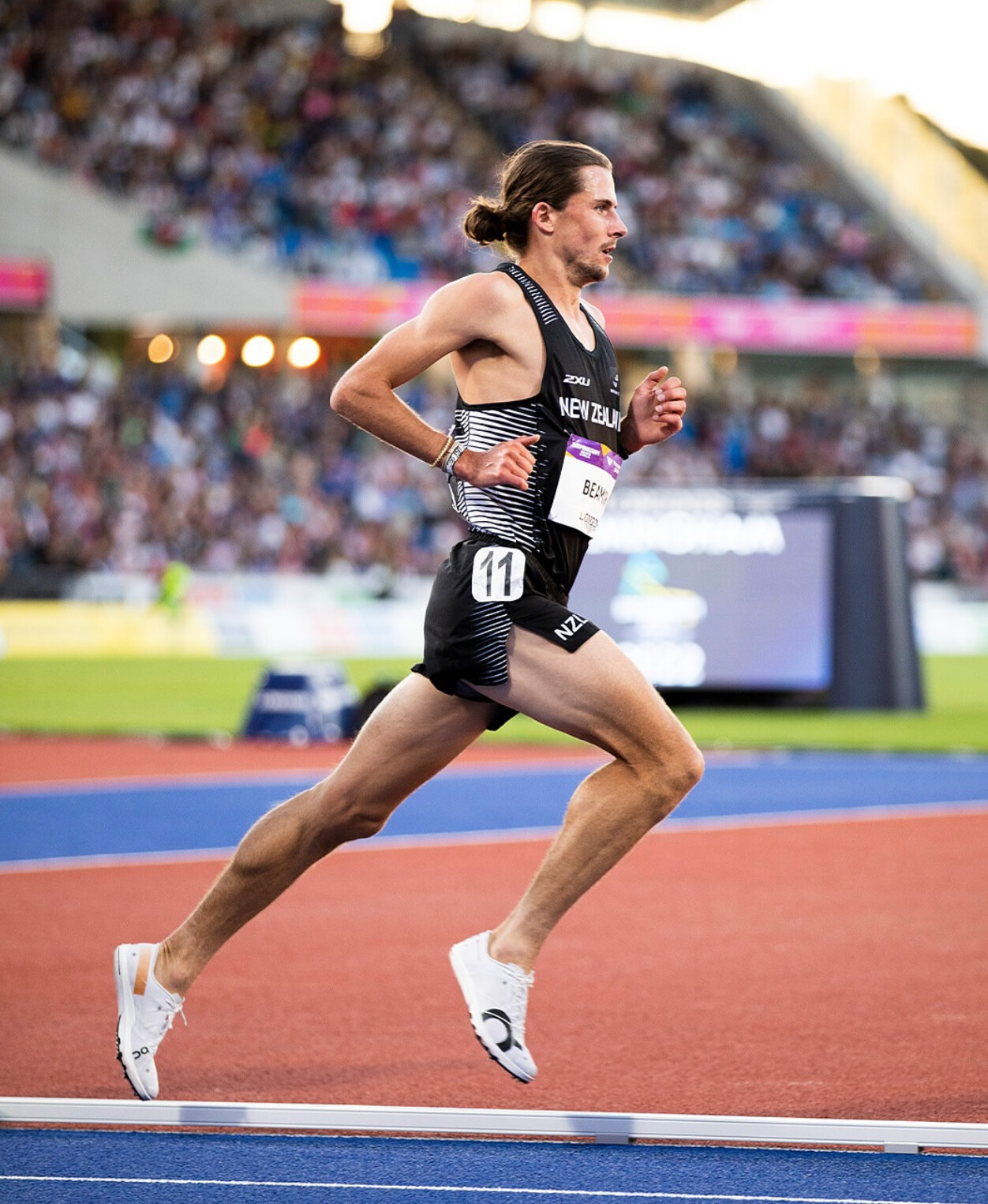
Gout’s Path to Stardom
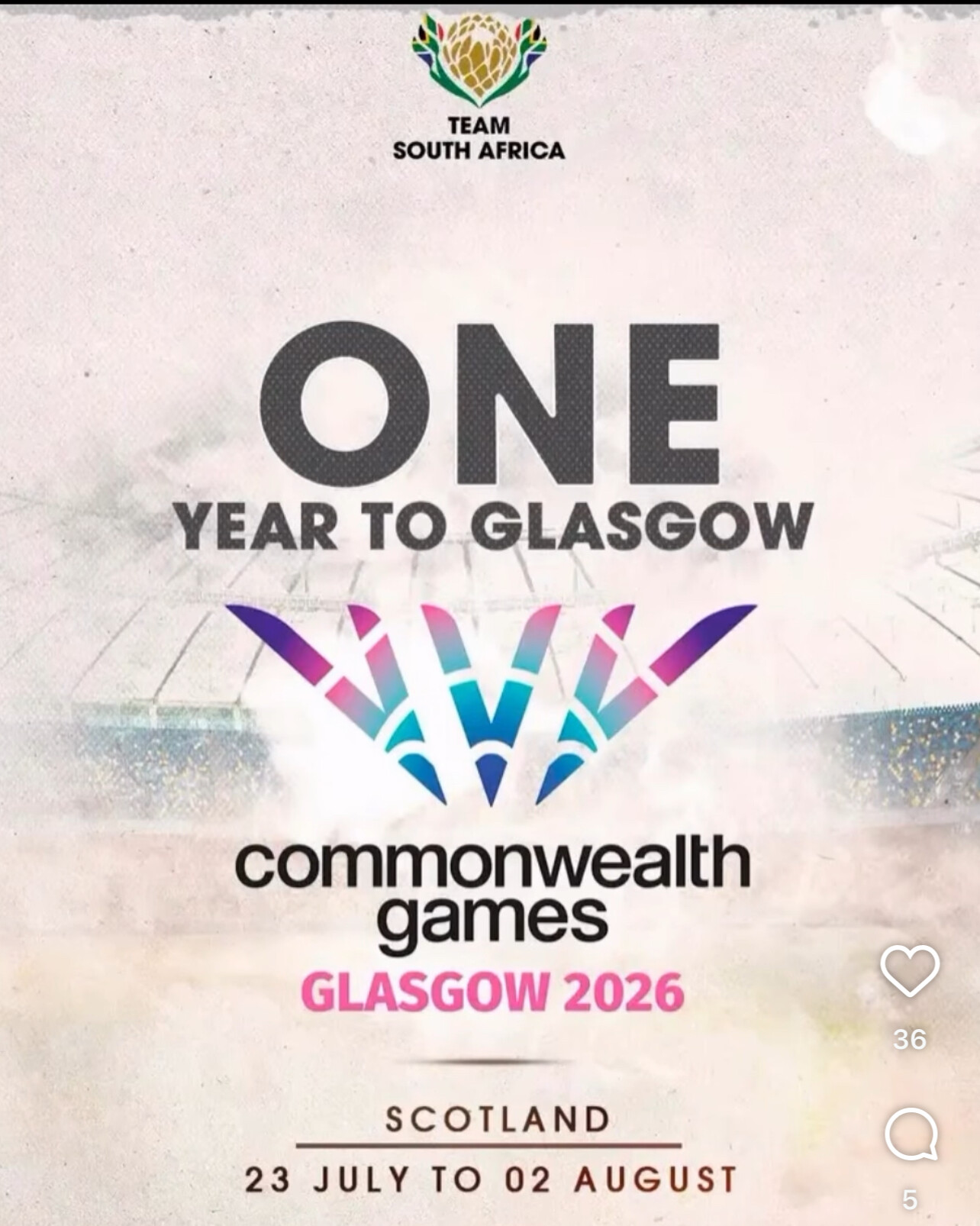
Gout’s emergence as a global sprint force has been nothing short of remarkable. Raised in Ipswich, Queensland, he was introduced to athletics at a young age and quickly caught the attention of Australia’s elite coaches. Under the guidance of Diane Sheppard, Gout has developed into a technically polished athlete with a mature race strategy far beyond his years.
His silver medal at the 2024 World U20 Championships in the 200m confirmed what many already believed — Gout Gout isn’t just Australia’s future; he’s already one of its best.
Sheppard has praised his dedication, humility, and focus, noting:
“With Gout, it’s not just talent — it’s mindset. He’s willing to do the work and stay grounded.”
Glasgow 2026: A Games Reimagined
The 2026 Commonwealth Games will mark a return to Glasgow, which last hosted the event in 2014. Following Victoria’s withdrawal as host due to financial concerns, Glasgow stepped up with a streamlined, cost-efficient plan built on existing infrastructure.
The Games will feature:
• 10 core sports and 47 para-sport events
• Key venues including Scotstoun Stadium (track and field), Tollcross International Swimming Centre, and the Sir Chris Hoy Velodrome
• A strong focus on sustainability and legacy, with no new athletes’ village planned
Mascot “Finnie the Unicorn”, named after the Finnieston Crane and created by local students, has already captured hearts with its fun, distinctly Scottish vibe.
by Boris Baron
Login to leave a comment
Kishane Thompson Runs 9.75 to Become Sixth Fastest Man in History
Jamaican sprinting just added another chapter to its storied legacy. On June 27, 2025, Kishane Thompson stunned the track world with a blazing 9.75-second performance in the men’s 100m final at the 2025 Jamaican National Championships, becoming the sixth-fastest man of all time.
Running in near-perfect conditions, Thompson powered down the track with a performance that firmly cements him among the global elite. Only five men—Usain Bolt, Tyson Gay, Yohan Blake, Asafa Powell, and Justin Gatlin—have ever run faster.

This wasn’t just a personal best. It was a breakout moment that may redefine Jamaica’s sprint hierarchy heading into the Paris Olympics later this summer. Thompson, who has quietly been building momentum over the past two seasons, now finds himself at the center of global attention.
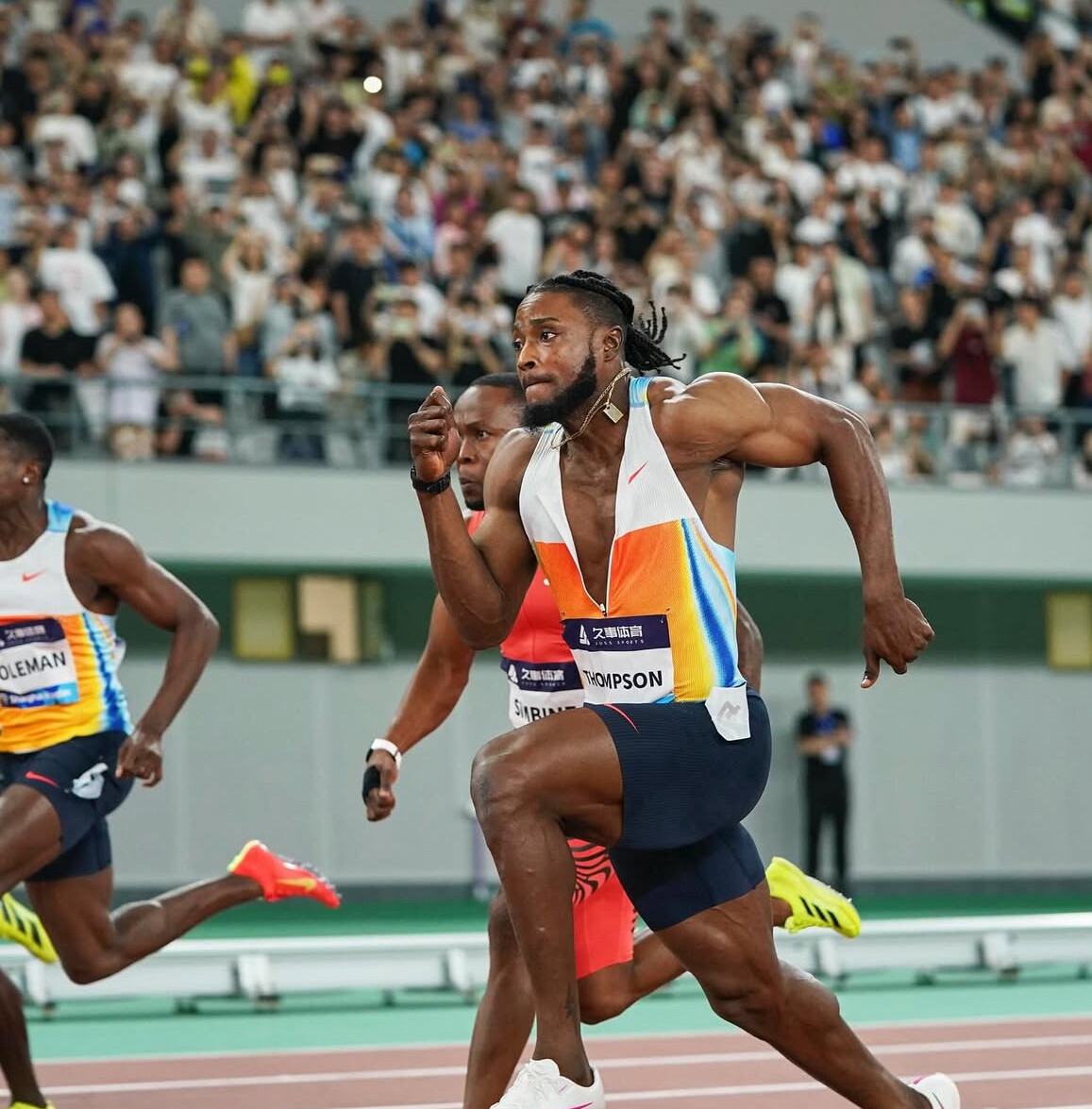
“I knew I had this in me,” Thompson told reporters after the race. “Training has been going well, and I came here ready to execute. To do it on this stage, in front of my home crowd, is special.”
The performance lights up what’s already been a thrilling sprint season, with several athletes dropping times under 9.90. But 9.75? That’s a mark that sends shockwaves around the world.
With his explosive start and powerful closing stride, Thompson showed a blend of raw speed and race maturity well beyond his years. The moment also comes at a critical time for Jamaican sprinting, as the nation looks to find its next global icon following the retirement of Usain Bolt.
If Friday’s race was any indication, Kishane Thompson may be that next name.

Top 100m Performances All-Time
1. Usain Bolt – 9.58
2. Tyson Gay – 9.69
3. Yohan Blake – 9.69
4. Asafa Powell – 9.72
5. Justin Gatlin – 9.74
6. Kishane Thompson – 9.75
by Boris Baron
Login to leave a comment
Fake News Creeps Into Athletics World with False Usain Bolt Claim
In a digital age overflowing with misinformation, fake news has found its way into nearly every corner of public life—and now it’s creeping into the world of athletics. Over the weekend, a Facebook post from a fan page titled Usain Bolt Fans falsely claimed that the legendary sprinter was stepping down as Jamaica’s ambassador.
The post, filled with dramatic language and linked to a questionable site (dailypressnewz.com), quickly gained traction—racking up hundreds of reactions, comments, and shares. But there’s one problem: it’s not true.
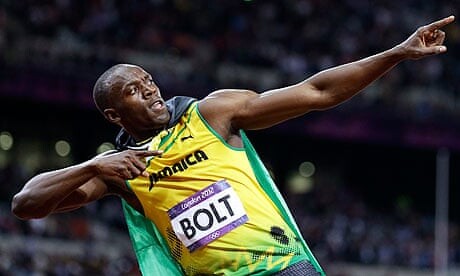
There has been no official confirmation from Usain Bolt, the Jamaican government, or any reputable media outlet. This appears to be a blatant fabrication—another example of how social media platforms, especially Facebook, are failing to properly police misinformation.
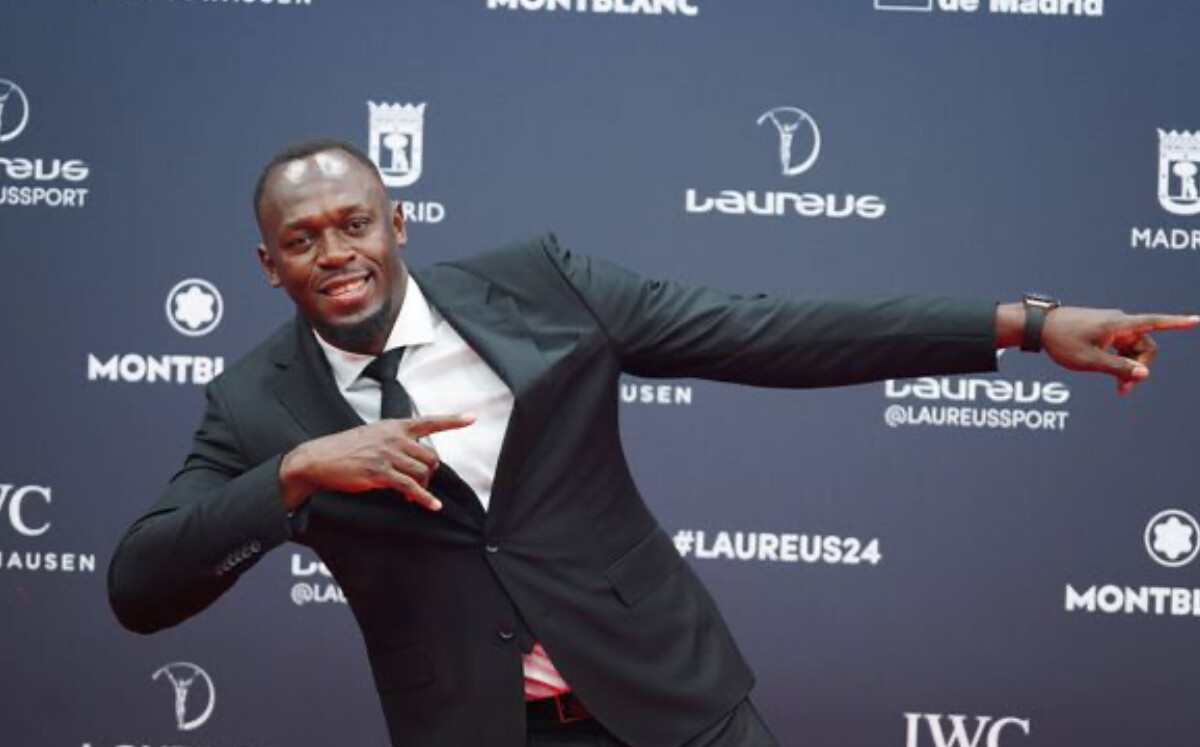
“Why would anyone want to spread such lies?” That’s the troubling question. Perhaps it’s about driving traffic to ad-heavy websites. Or it could be more sinister—part of a broader trend of undermining public trust in institutions and public figures. Either way, it’s deeply concerning.
Usain Bolt isn’t just an Olympic icon—he’s a symbol of excellence, integrity, and global unity through sport. Misusing his name to generate clicks is not only dishonest, it’s harmful.
At My Best Runs, we believe in truth, accuracy, and the integrity of the running community. If false headlines are allowed to spread unchecked, they can damage reputations and distort public perception—especially among younger athletes who look up to role models like Bolt.
This incident is a wake-up call. If fake news can so easily invade the running world, no part of our sport is safe from digital misinformation.
Let’s stay vigilant. Let’s ask questions. And let’s continue celebrating the real stories that make our sport so powerful.
by Boris Baron
Login to leave a comment
Who’s the Fastest Man in the World Right Now?
Sprint Showdown 2025: Lyles, Knighton, and Tebogo Ignite a New Era of Speed on the Diamond League Stage
The 2025 Diamond League season is heating up fast, and the men’s sprints are once again the center of attention. Three names are defining the early action: Noah Lyles, Erriyon Knighton, and Letsile Tebogo—each with the potential to end the season as the world’s fastest man.
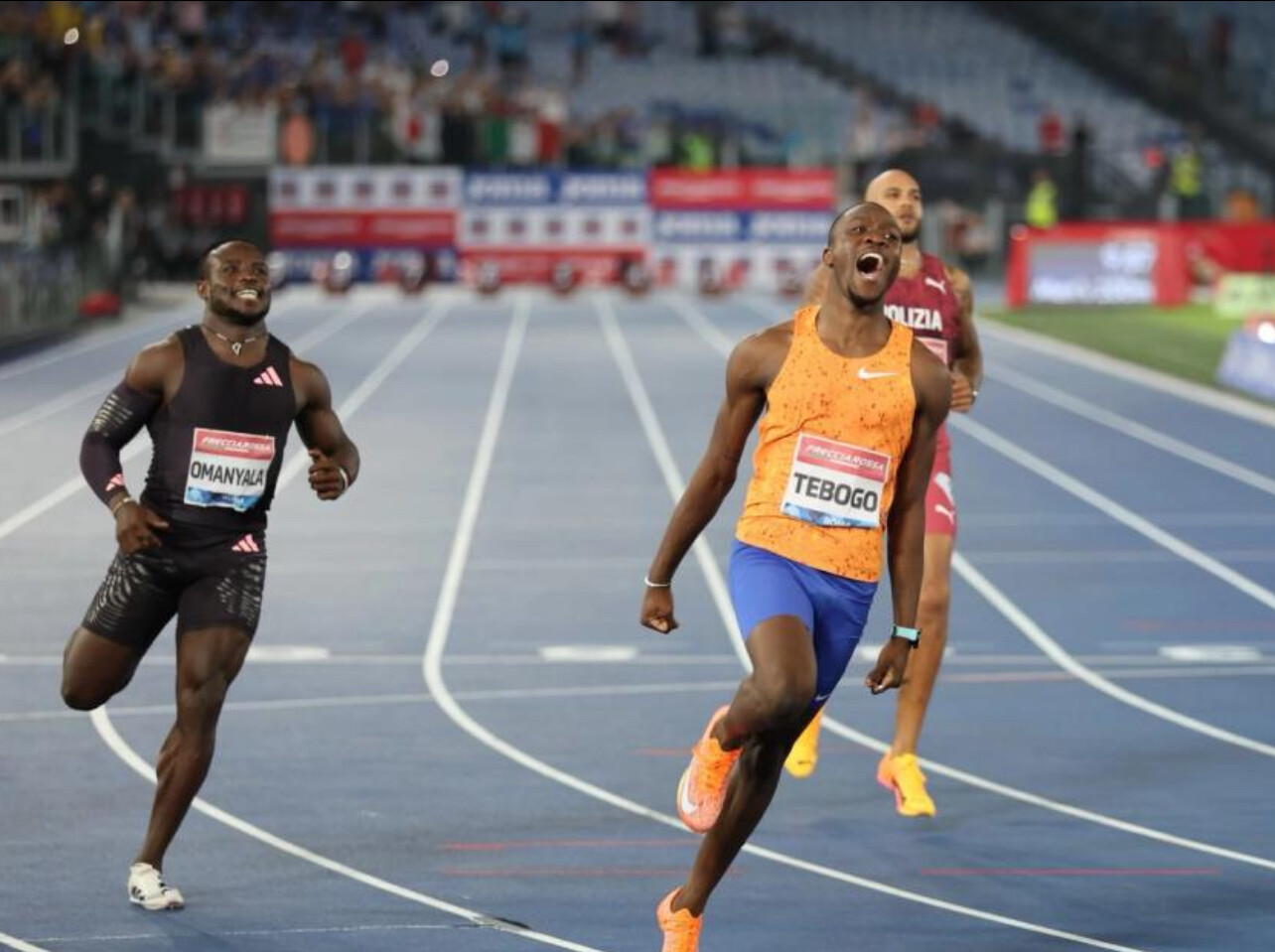
Noah Lyles: The Champion with a Target on His Back
Reigning Olympic and World Champion Noah Lyles is the man to beat. Though he hasn’t yet raced on the Diamond League circuit this year, his resume speaks volumes. He clocked 9.83 in the 100m and 19.47 in the 200m during the 2024 season and claimed double gold in Paris. All eyes are on when—and where—he’ll make his 2025 Diamond League debut. With a long-standing goal of breaking Usain Bolt’s 200m world record, Lyles remains the top contender.
Erriyon Knighton: Poised to Pounce
Still just 21 years old, Erriyon Knighton hasn’t raced yet in 2025, but anticipation is building. The American phenom owns a personal best of 19.49 in the 200m, set in 2022 as a teenager. After earning Olympic silver behind Lyles in Paris, Knighton is expected to return to the track soon and challenge for dominance in both the 100m and 200m this summer.
Leslie Tebogo: The Early Season Leader
Botswana’s Letsile Tebogo, the reigning Olympic 200m silver medalist and one of Africa’s brightest young stars, is already making headlines in 2025. He opened his season with a 10.20 in Xiamen and followed that with a 10.03 in Shanghai—finishing third in both Diamond League meets. Tebogo is scheduled to run his primary event, the 200m, at the Doha Diamond League on May 16, which could be a statement race as he builds toward the World Championships in Tokyo later this year.
What’s Next: A Collision Course
While all three athletes are on different timelines this season, the Diamond League is setting the stage for dramatic head-to-head clashes. Lyles and Knighton have yet to toe the line, while Tebogo is already building momentum. Their inevitable meeting—possibly at the Prefontaine Classic or in Europe this summer—could define the sprinting landscape in 2025.
The sprint wars are officially on. The only question left: Who will own the title of the world’s fastest man by season’s end?
by Boris Baron
Login to leave a comment
Gout Gout Clocks Back-to-Back 9.99s at Age 17
Dipping under the 10-second barrier in the 100 meters is a major milestone for any sprinter. For 17-year-old Australian sensation Gout Gout, doing it once wasn’t enough.
At the Australian Athletics Championships on Thursday, Gout stunned the crowd by running 9.99 seconds in his 100m heat—powered by a +3.4 m/s tailwind. Less than two hours later, he backed it up with an identical 9.99 in the final, this time with a +2.6 m/s wind. While the wind speeds mean neither time is eligible for record purposes, the message was clear: Gout Gout has arrived.
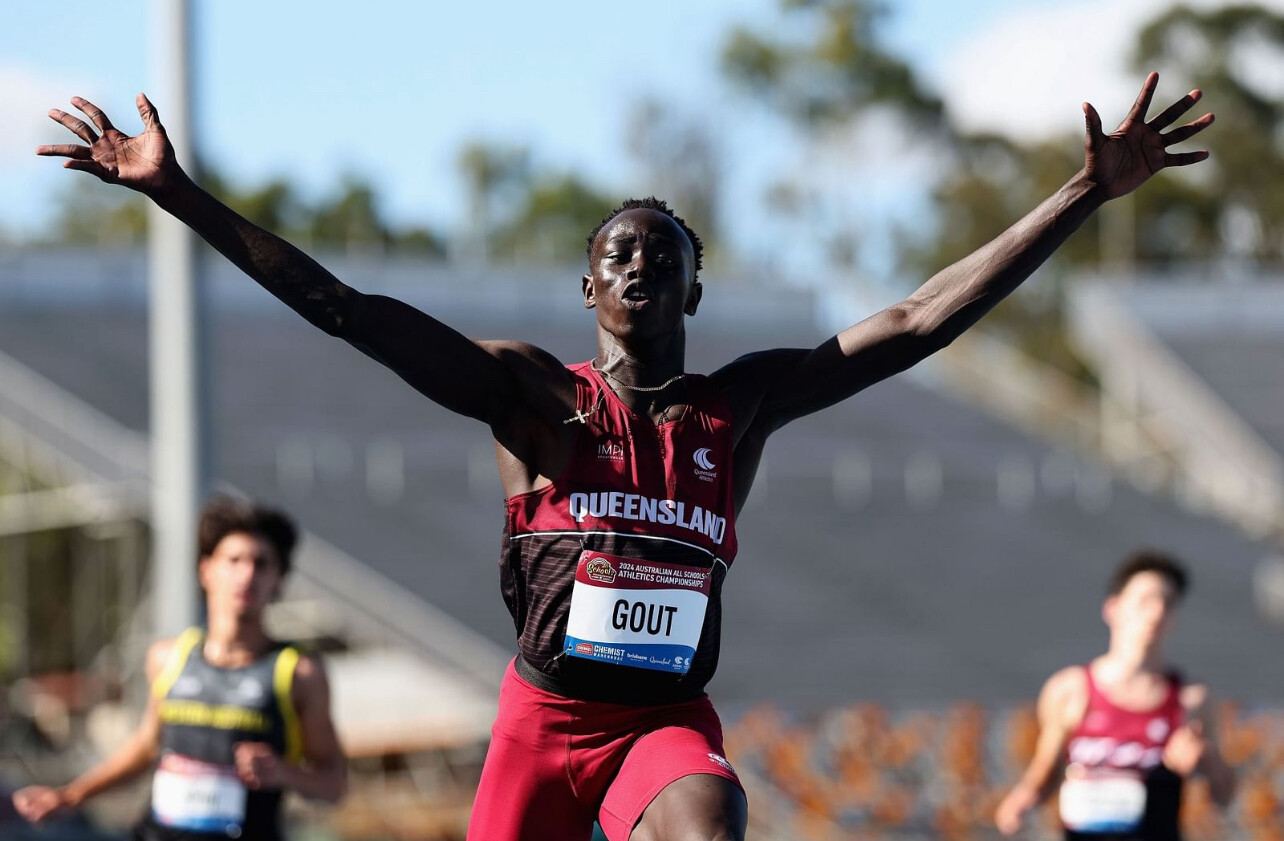
Including wind-aided marks, his performance ranks as the second-fastest 100m in the world this year, tying South Africa’s Bayanda Walaza, who ran 9.99 in March. More importantly, it obliterates the Australian and Oceanian U20 record of 10.15—but again, due to the excessive wind, the record books won’t recognize it.
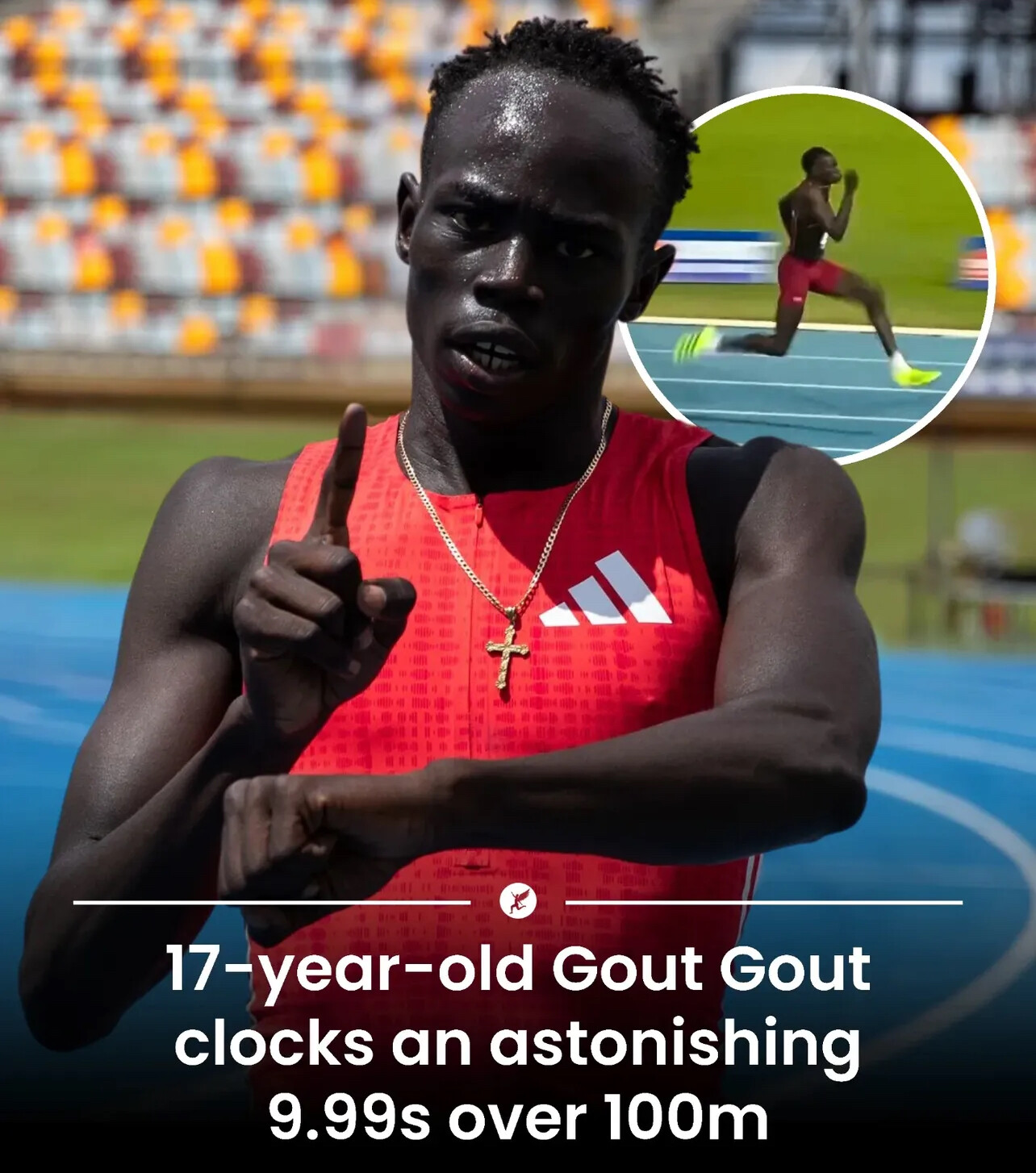
Wind readings over +2.0 m/s are deemed illegal in sprinting, as they can artificially enhance performance—typically by about 0.1 seconds in the 100m. For Gout, this wasn’t the first time nature interfered with history. Back in December, as a U18 athlete, he clocked 10.04 with a +3.4 m/s wind. His current official personal best remains 10.17 seconds.
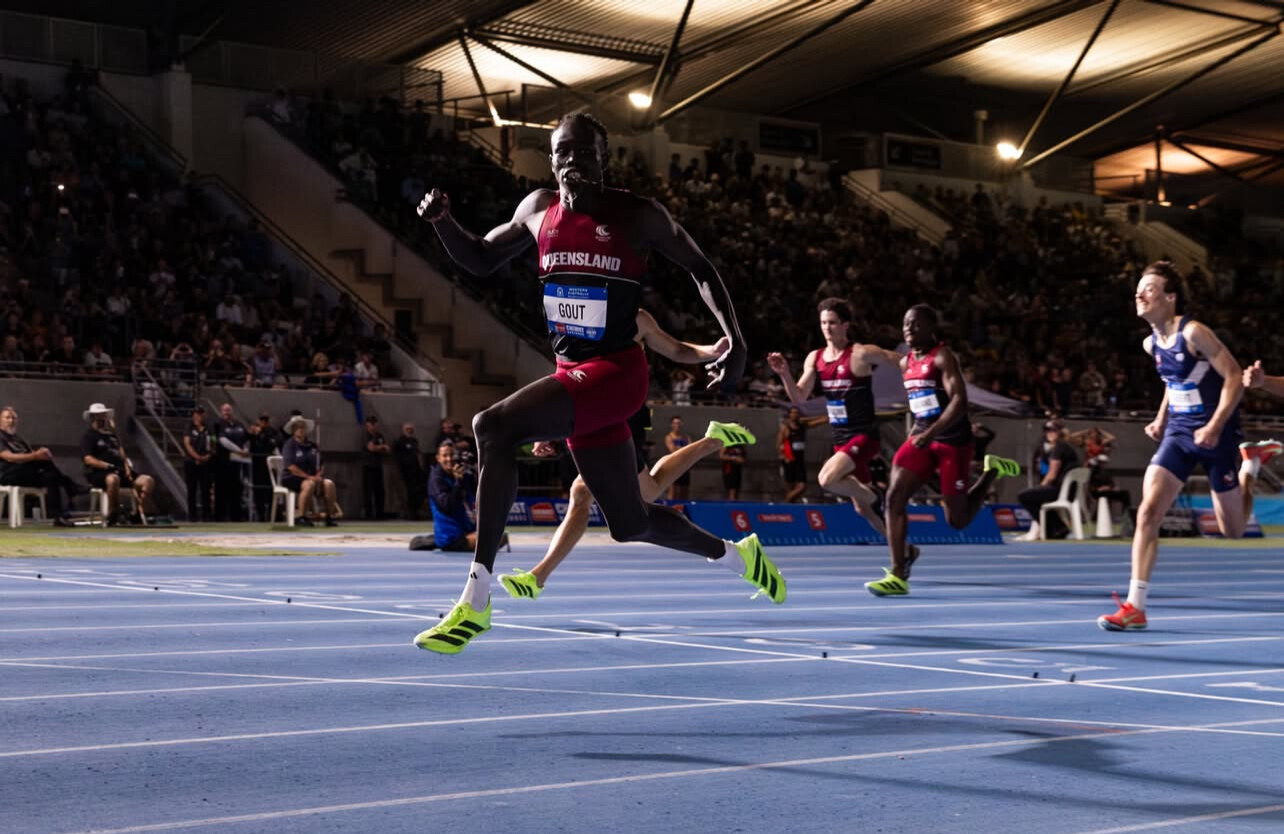
Still, the young sprinter isn’t letting wind readings define him.
“Sub-10 is something every sprinter hopes for,” Gout said. “To gain that sub-10 definitely boosts my confidence, especially for my main event—the 200m.”
And that’s not just talk. Gout broke the Australian 200m record in December at just 16 years old, clocking a blistering 20.04 seconds. With that time, he announced himself as a true global prospect.
The Australian 100m record of 9.93, set by Patrick Johnson in 2003, remains untouched—for now. But if Gout Gout keeps this trajectory, and gets the wind on his side, he may not only rewrite national records—he might just chase global ones.
Is Gout Gout the Next Usain Bolt?
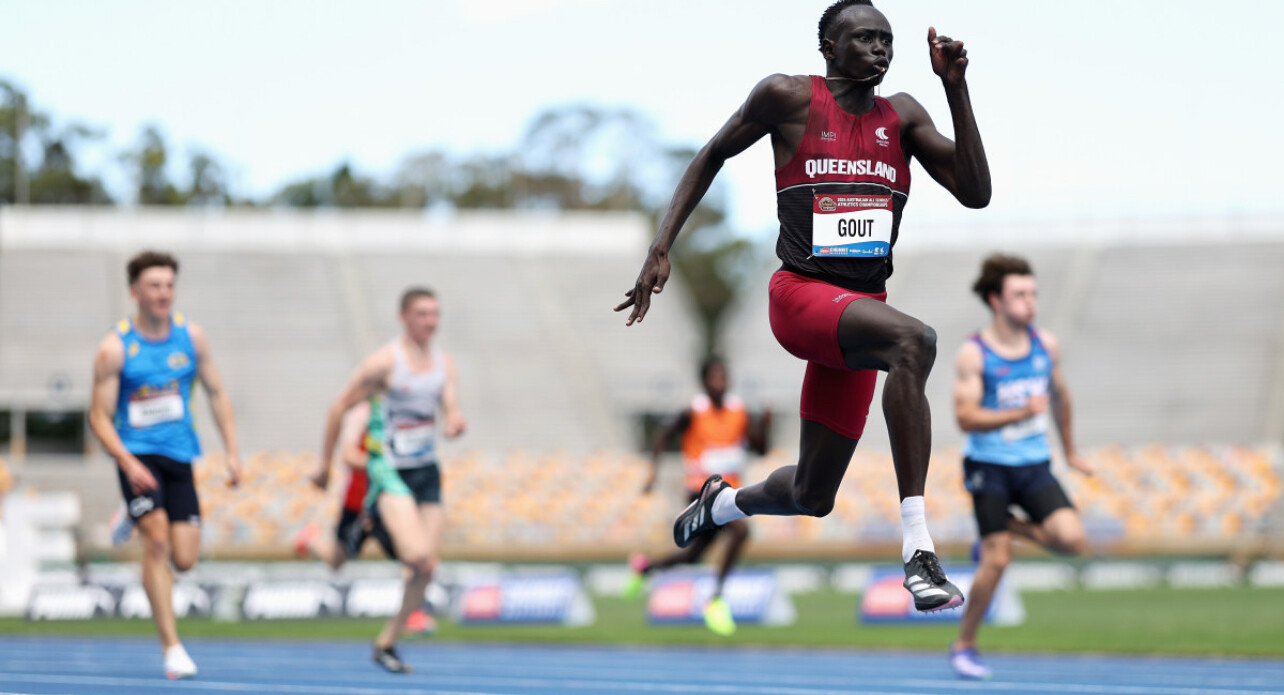
While it’s tempting to draw comparisons between Gout Gout and Usain Bolt, especially given their early successes and similar event specializations, it’s important to recognize that Gout is carving his own path. Notably, he broke Bolt’s under-18 200m record by running 20.04 seconds, surpassing Bolt’s 20.13-second mark at the same age .
Usain Bolt’s world records stand at 9.58 seconds for the 100m and 19.19 seconds for the 200m, both set in 2009. Gout’s current legal personal bests are 10.17 seconds for the 100m and 20.04 seconds for the 200m . While there’s still a gap between their times, Gout’s trajectory suggests he could become a formidable competitor on the world stage
by Boris Baron
Login to leave a comment
Noah Lyles’ Paris 100m Victory: Implications of New Timing Rules on Sprint Records
In the electrifying atmosphere of the 2024 Paris Olympics, American sprinter Noah Lyles clinched the gold medal in the men’s 100m final, clocking a personal best of 9.784 seconds. This razor-thin victory over Jamaica’s Kishane Thompson, decided by just five-thousandths of a second, marked one of the closest finishes in Olympic 100m history.
As the athletics world celebrates Lyles’ achievement, attention turns to forthcoming changes in timing regulations set by World Athletics. Starting in 2025, a significant amendment will alter how sprint times are recorded: the race clock will commence only when an athlete initiates movement, effectively eliminating the inclusion of reaction times in official results.
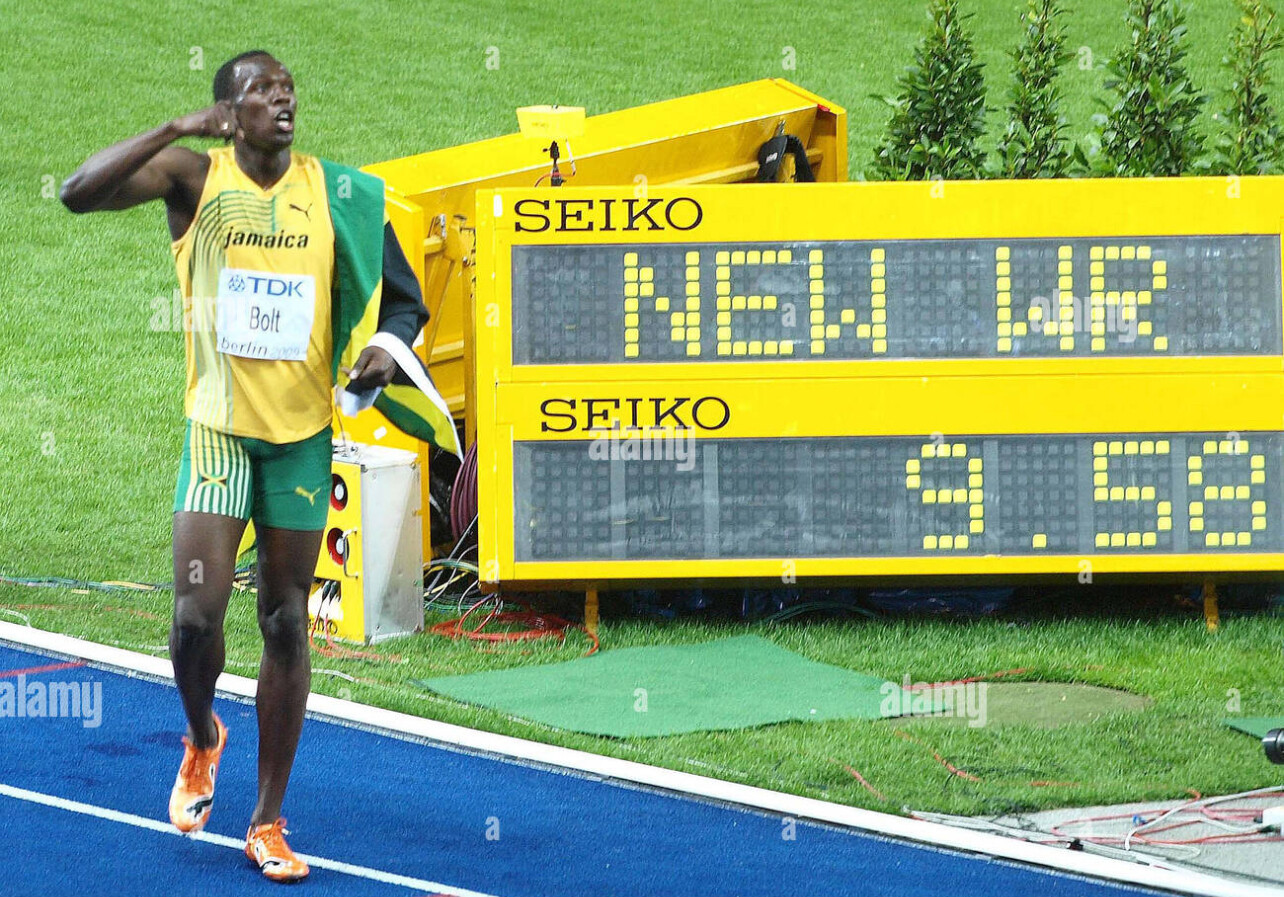
Under this new system, Lyles’ Paris performance would be recalculated to exclude his reaction time, potentially resulting in a faster recorded finish. This adjustment not only redefines personal bests but also brings Usain Bolt’s longstanding world record of 9.58 seconds into closer contention. The recalibration raises compelling questions about the comparability of sprint times across different eras and the evolving nature of athletic records.
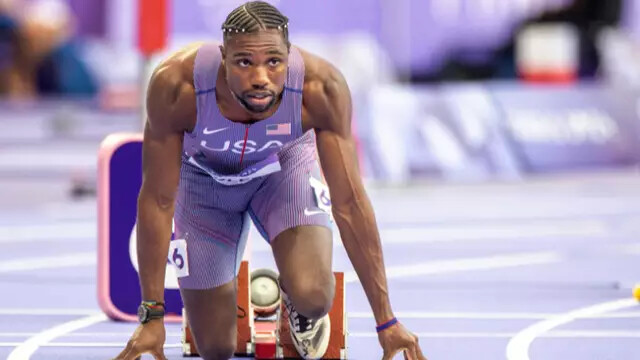
As athletes and enthusiasts alike anticipate the implementation of these changes, the track and field community stands on the cusp of a new chapter—one that may see historical records challenged and the very metrics of speed redefined.
by Boris Baron
Login to leave a comment
Who Had the Best Era in Track & Field? A Generational Showdown
Track and field has long been the stage for some of the most electrifying athletic performances in history. Each generation has produced legends who have redefined what is possible in sprinting, distance running, and field events. But which era stands above the rest?
From the Silent Generation pioneers to the Gen Z record-breakers, every period has contributed to the evolution of the sport. Let’s break down each era’s greatest stars and their lasting impact on track and field.
Gen Z (Born 1997 - 2012): The Future of Track & Field
The newest generation of elite athletes is already making waves on the world stage. With the benefit of cutting-edge training, nutrition, and recovery techniques, these young stars are smashing records at a rapid pace.
Notable Sprinters & Field Athletes:
• Sydney McLaughlin-Levrone (USA) – 400m hurdles world record holder and Olympic champion
• Mondo Duplantis (Sweden) – Pole vault world record holder
• Erriyon Knighton (USA) – One of the fastest teenagers ever in the 200m
Notable Distance Runners:
• Jakob Ingebrigtsen (Norway) – Olympic 1500m champion, European mile record holder
• Joshua Cheptegei (Uganda) – 5000m and 10,000m world record holder
• Jacob Kiplimo (Uganda) – Half marathon world record holder (57:31)
• Gudaf Tsegay (Ethiopia) – World champion in the 1500m, dominant in middle distances
Gen Z athletes are not only breaking records but also shaping the future of the sport through their influence on social media and global visibility. With their combination of speed, endurance, and access to modern sports science, they may soon surpass all who came before them.
Defining Traits: Explosive, record-breaking, tech-savvy
Millennials (Born 1981 - 1996): The Superstars of the Modern Era
No discussion of dominant track and field generations is complete without mentioning Usain Bolt. The Jamaican sprinting legend captured the world’s attention with his charisma and untouchable world records.
Notable Sprinters:
• Usain Bolt (Jamaica) – Fastest man in history (100m: 9.58, 200m: 19.19)
• Allyson Felix (USA) – Most decorated female Olympian in track history
• Shelly-Ann Fraser-Pryce (Jamaica) – One of the most dominant sprinters of all time
Notable Distance Runners:
• Eliud Kipchoge (Kenya) – The greatest marathoner of all time, first to break two hours in a marathon
• Mo Farah (UK) – Dominated the 5000m and 10,000m at two Olympic Games
• Genzebe Dibaba (Ethiopia) – 1500m world record holder
• Ruth Chepngetich (Kenya) – First woman to break the 2:10 barrier in the marathon, setting a world record of 2:09:56 at the 2024 Chicago Marathon
Millennials excelled across all track and field disciplines. They ushered in an era of professional distance running dominance, with African runners setting standards in middle and long distances. Meanwhile, Kipchoge’s sub-2-hour marathon attempt was a historic milestone in human endurance.
Defining Traits: Charismatic, dominant, endurance revolutionaries
Gen X (Born 1965 - 1980): The Tough and Versatile Competitors
Gen X athletes were the bridge between the amateur days of track and the fully professional era. They pushed the sport forward with fierce rivalries and new records, while also seeing the globalization of track and field.
Notable Sprinters:
• Maurice Greene (USA) – Former world record holder in the 100m (9.79)
• Marion Jones (USA) – One of the most dominant sprinters of the late ‘90s
Notable Distance Runners:
• Haile Gebrselassie (Ethiopia) – Olympic and world champion, former marathon world record holder
• Paul Tergat (Kenya) – Pioneered marathon running dominance for Kenya
• Tegla Loroupe (Kenya) – First African woman to hold the marathon world record
This era marked a golden age for distance running, with Gebrselassie and Tergat setting the stage for the marathon revolution that would come in the next generation. With increased sponsorships, the road racing circuit became more competitive, and Kenyan and Ethiopian dominance solidified.
Defining Traits: Tough, globalized, long-distance pioneers
Baby Boomers (Born 1946 - 1964): The Golden Age of Track & Field
The Baby Boomers took track and field into the modern Olympic era, producing some of the most iconic figures in the sport’s history.
Notable Sprinters:
• Carl Lewis (USA) – Nine-time Olympic gold medalist across sprints and long jump
• Florence Griffith-Joyner (USA) – 100m (10.49) and 200m (21.34) world record holder
Notable Distance Runners:
• Sebastian Coe (UK) – 800m and 1500m Olympic champion, middle-distance legend
• Steve Prefontaine (USA) – One of the most influential distance runners in history
• Miruts Yifter (Ethiopia) – 5000m and 10,000m Olympic champion
This era brought middle and long-distance running into the mainstream, with rivalries like Coe vs. Ovett and Prefontaine vs. the world captivating fans. The Baby Boomers were the first generation of professional-level training and saw athletes truly dedicated to their craft year-round.
Defining Traits: Bold, revolutionary, multi-talented
Silent Generation (Born 1928 - 1945): The Pioneers of Kenya’s Dominance
This generation laid the foundation for modern track and field, producing legends whose influence still resonates today.
Notable Distance Runners:
• Kip Keino (Kenya) – The pioneer of Kenya’s dominance in distance running, winning Olympic gold in the 1500m (1968) and 3000m steeplechase (1972)
• Emil Zátopek (Czechoslovakia) – Triple gold in 5000m, 10,000m, and marathon at the 1952 Helsinki Olympics
• Paavo Nurmi (Finland) – Nine-time Olympic gold medalist in long-distance events
Kip Keino’s triumph over Jim Ryun in the 1500m final at the 1968 Mexico City Olympics is considered one of the greatest upsets in Olympic history. Competing at high altitude, Keino used a fast early pace to break Ryun, ushering in an era of Kenyan middle-distance dominance that continues today.
Defining Traits: Groundbreaking, resilient, visionary
Which Generation Had the Greatest Impact?
Each generation of track and field athletes has contributed to the sport’s evolution in unique ways:
• Millennials brought global superstardom (Bolt, Felix, Fraser-Pryce, Kipchoge, Chepngetich)
• Gen X athletes were fierce competitors in a rapidly changing sport (Greene, Gebrselassie, Tergat)
• The Baby Boomers set records that still stand today (Carl Lewis, Flo Jo, Coe, Prefontaine)
• The Silent Generation laid the foundation for modern track and field (Owens, Zátopek, Kip Keino)
• Gen Z is already breaking records and shaping the future of the sport (McLaughlin-Levrone, Ingebrigtsen, Cheptegei)
While it’s hard to declare one era the best, one thing is certain: the sport of track and field continues to evolve, with each generation pushing the limits of human performance.
Which generation do you think is the greatest? Let us know in the comments!
by Boris Baron
Login to leave a comment
Usain Bolt reveals meal plan that helped him smash 100m world record at 2008 Beijing Olympics
Usain Bolt broke world records in all his three specialties but the 2008 Olympics diet change was the beginning of his dominance on track.
Three-time Olympic 100m champion Usain Bolt has revealed how a change in diet at the 2008 Olympics in Beijing played a crucial role in him setting a world record in his specialty.
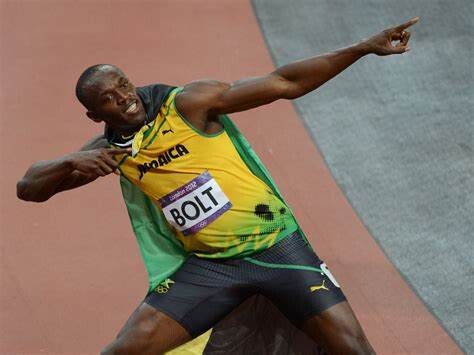
The legendry Jamaican sprinter who also managed three Olympic 200m gold titles, was fueled by chicken nuggets because he thought Chinese food tasted odd.
In his autobiography, Faster than Lightning, Bolt wrote: “At first I ate a box of 20 for lunch, then another for dinner. The next day I had two boxes for breakfast, one for lunch and then another couple in the evening. I even grabbed some fries and an apple pie to go with it,” the 11-time world champion told TalkSport.
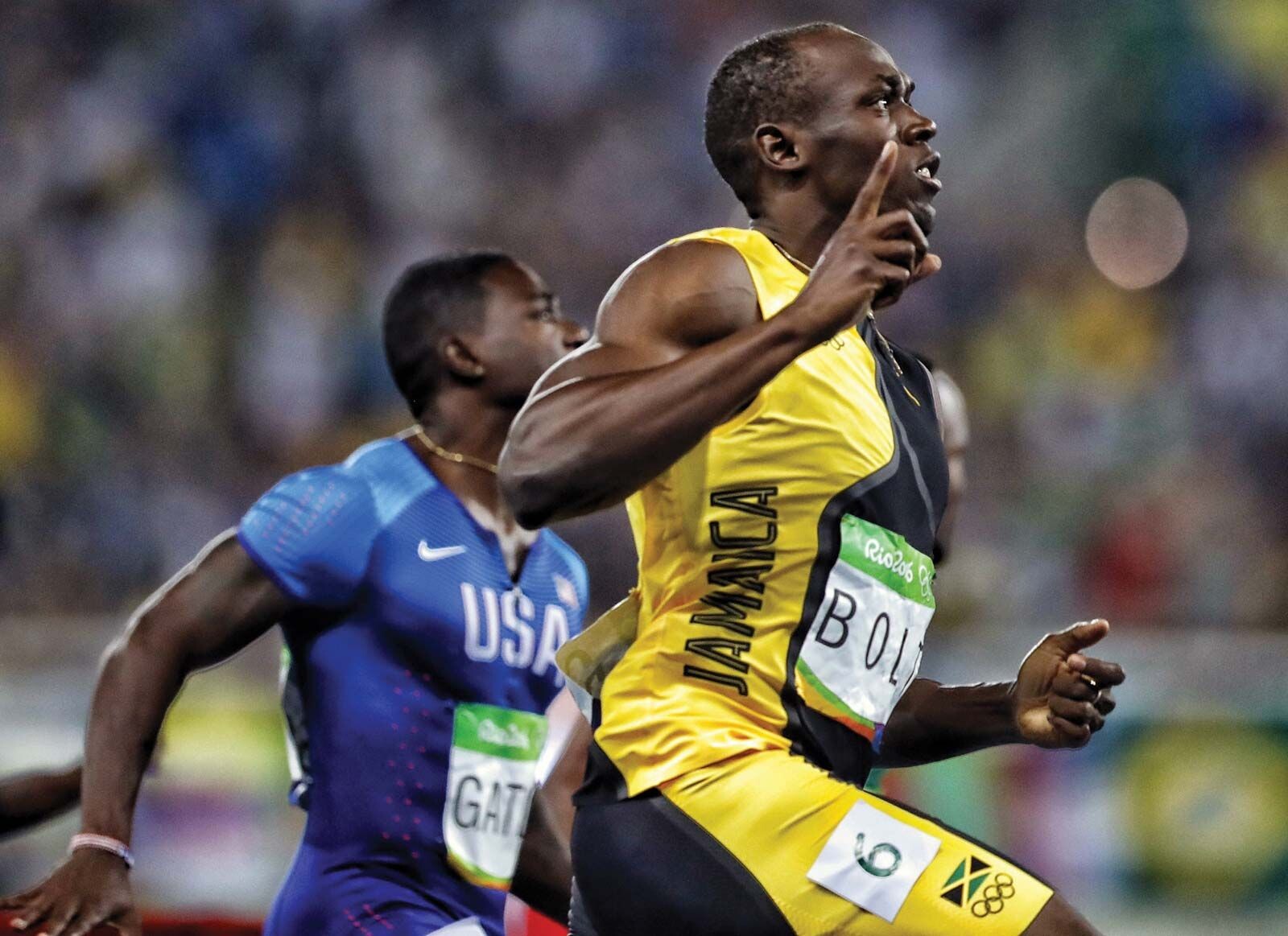
Bolt estimated he ate 1,000 of McDonald’s chicken nuggets during the Beijing Olympics. It was an even more impressive feat considering he did it with his shoelaces untied! Bolt finished so clear of his competitors that he pumped his chest while crossing the finishing line and had he not done that, a better final time would have been recorded.
The 38-year-old made history a year later when he set another record in the men’s 100m with a time of 9.58 seconds at the 2009 World Championships. He also won two 4x100m relay golds and holds the world record in all three disciplines.
Bolt retired from athletics after the 2017 World Championships, where he won bronze in his final solo 100m race but then pulled up in his last ever contest in the 4x100m relay final.
After refusing a wheelchair, he hobbled across the finish line alongside his teammates - but, despite his legendary career ending in heartbreak, Bolt will go down as one of the track's greatest ever competitors.
by Evans Ousuru
Login to leave a comment
'I want to be the best to ever do it'- American sprint sensation still dreaming big despite injury woes
The two-time world bronze medalist wants to come back and continue his legacy after injuries slowed him down in the last two years.
American sprint sensation Trayvon Bromell has been a victim of injuries but he now feels ready to come back in 2025 and continue the legacy he had in 2022.
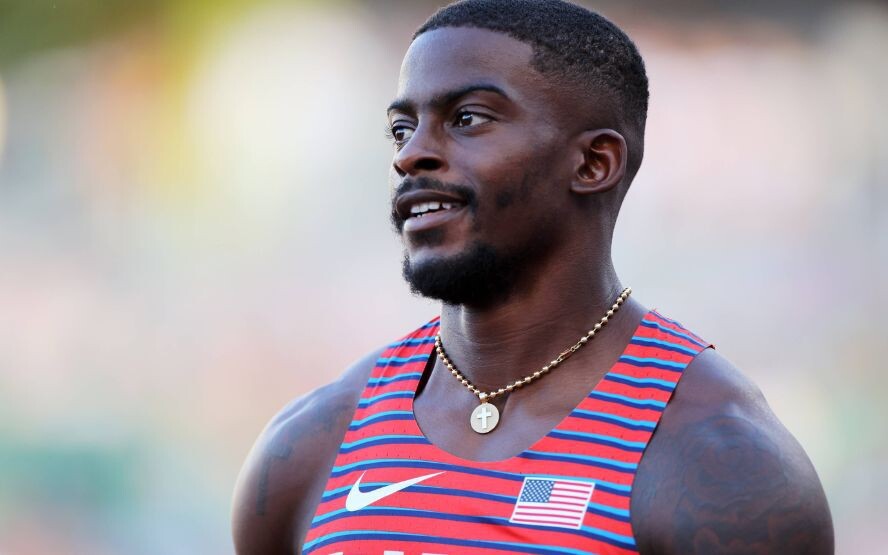
Bromell is one of America’s great sprinting talents but the world never got to see his full potential in the recent events.
In 2024, the two-time world bronze medallist had to pull out of the Olympic trials due to an injury he picked up at a meeting in Savona.
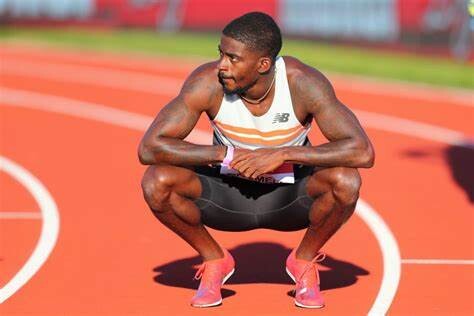
The injury was a huge setback in his career that was just beginning to pick up after his major injury in 2019 when he suffered an adductor muscle setback.
In a previous interview with NBC Sports, Bromell disclosed that his ambition is to surpass the likes of Usain Bolt and Tyson Gay and become one of the greatest sprinters in the world.
Bromell wants his achievements to be beyond the titles and the medals and he pointed out that his definition of success is very different from what other people think.
“Everybody didn’t see me and hear me back then, but now you have to. I want to be the best to ever do it,” Bromell said.
“The odds have always been stacked against me in my life, and that’s why I get emotional after running crazy times. It’s never been about the race or the medals for me.”
He opened up about growing up in a single-parent home and how he struggled to be heard by those around him. Growing up to become one of America’s greatest talents brings him to tears.
Bromell revealed that he wants to be a testimony to all those who feel like some things are impossible. The former world indoor champion further noted that the people who have grown up in such a setup would understand the struggle.
“Being the greatest of all time in this event. I’m a big advocate of making people see me, but when I say that I don’t mean it in a literal sense,” Bromell said.
“But for all of those people who know what it feels like to not be heard or to not be seen ... I want to prove that it’s possible.”
Being raised up by his mother was not easy since she was also struggling to make ends meet. Bromell had to be strong at a young age and take up responsibilities that were meant for adults.
With such a lifestyle, he struggled to maintain a positive outlook in life and was filled with a lot of resentment towards everybody.
“I feel like nobody heard my cries for help, nobody was there for me, and I grew up with so much aggression because I felt like nobody cared and the world was against me,” he added.
by Abigael Wafula
Login to leave a comment
Usain Bolt reveals bizarre reason he dropped running 400m
Bolt loved all the short distance races but 400m was never his long-term priority even though he preferred it early in his trophy-laden career.
Jamaican sprint legend Usain Bolt has revealed what made him stop taking part in 400m despite loving the specialty in his formative years.
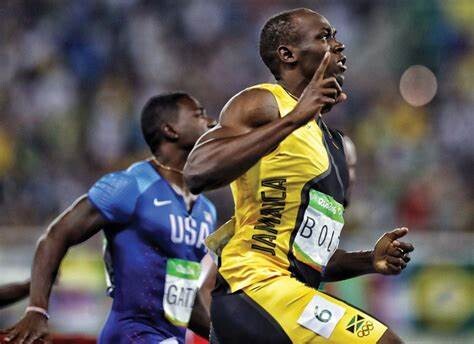
Bolt, the three-time Olympic 100m champion, said his coach Glen Mills was one of many people who felt the younger Bolt was better suited to the longer sprint distance than the marquee 100m event, meaning the 6ft 5ins sprinter almost ended up as a quarter-miler, much to his disgust.
The three-time Olympic 200m champion reiterated that even though he liked 400m, doing away with it and focusing on 100m paid dearly for him going by his record.
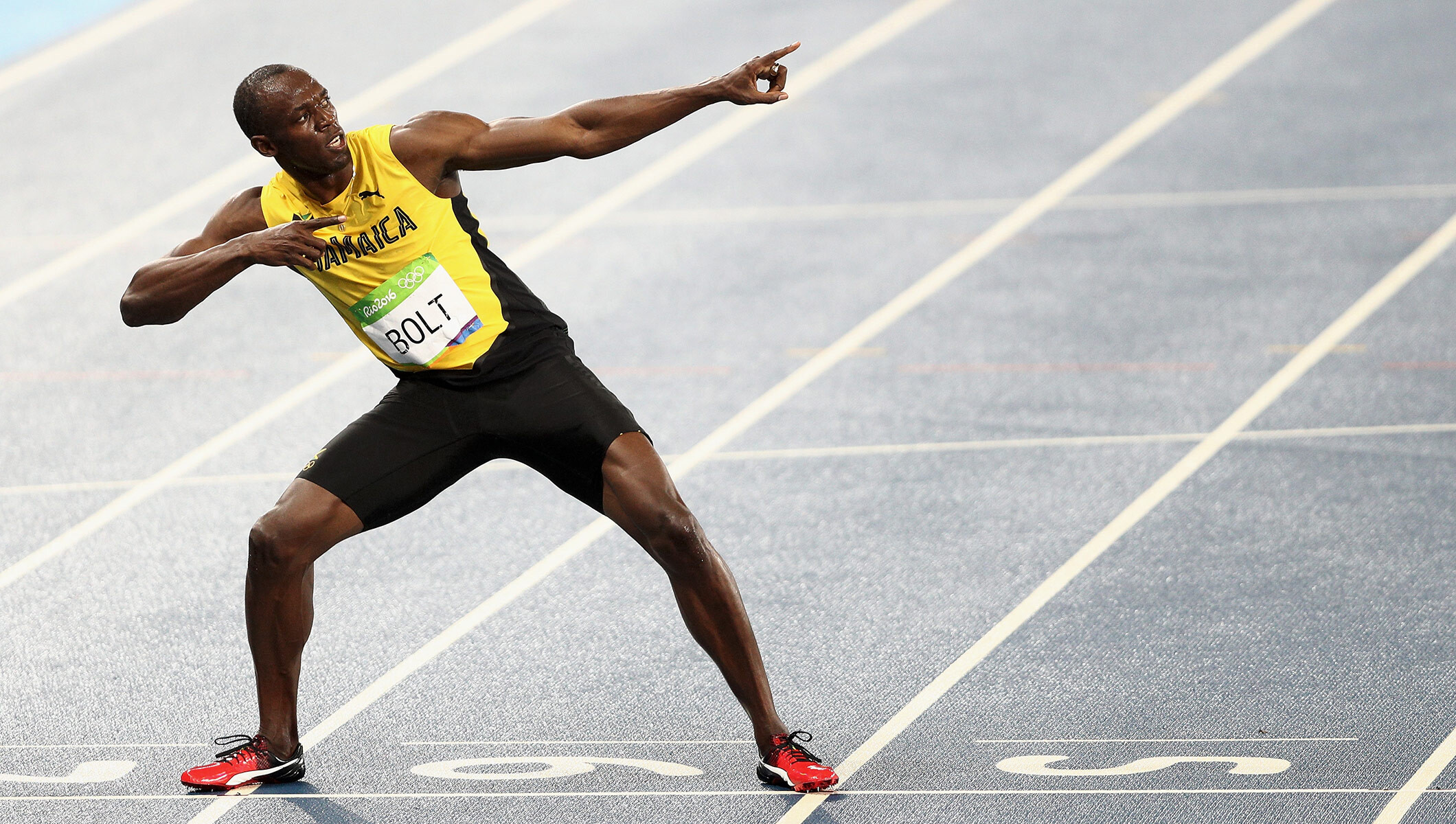
"Running the 400m wasn’t fun at all. It was always pain. But I was good at it, so I used to do it. However much as I did it, though, I never liked it. So I stopped and went back to the 100m. You could say I’m happy it worked out," Bolt told TalkSport.
"The over-distance runs are the hardest thing we do in training, because when you feel that lactic acid you can’t walk, you can’t sit down, you don’t know what to do – it takes a while to get it out of your system,” he added.
The 11-time world champion said time wasn't everything and his focus was always the technique. "All we try to focus on is technique because, the better you get at these things, the better the times will get. When the champs come, then you can try to run fast.”
The 38-year-old is the most successful male athlete of the World Championships. Bolt is the first athlete to win four World Championship titles in the 200m and is one of the most successful in the 100m with three titles, being the first person to run sub-9.7s and sub-9.6s races.
by Evans Ousuru
Login to leave a comment
16-year-old Aussie sprinter clocks outrageous 100m time
Gout Gout, the young athlete drawing comparisons to Usain Bolt, now holds the Australian U18 100m and 200m records.
Australia’s Gout Gout has left the world speechless once again. At Friday’s Australian All Schools Athletics Championships in Nathan, Australia, the sprinter made a run at the elusive 10-second barrier–at the age of just 16. In heats, he soared to a blazing 10.04 seconds (+3.4 m/s winds), crossing the line more than five tenths of a second ahead of second place. Including all non-legal marks, Gout’s time secured him the number-four spot on the all-time U18 list.
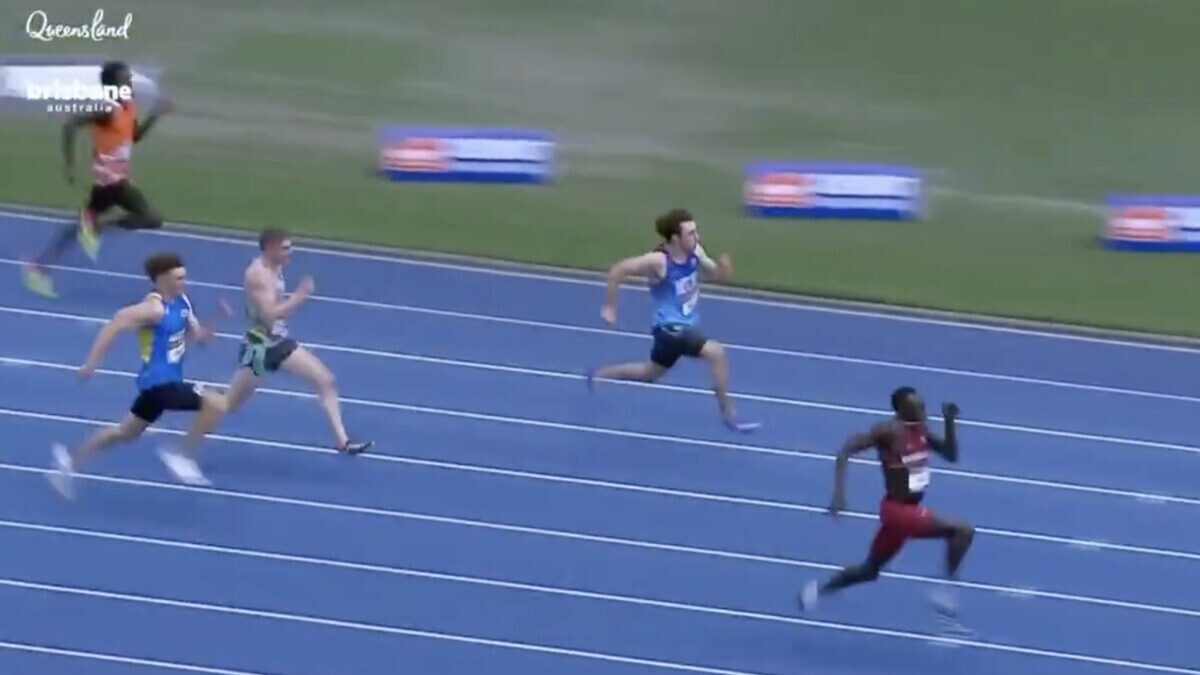
Tailwind speeds exceeding 2.0 m/s are deemed illegal in sprinting, as stronger winds are considered to aid the racers. Wind assistance can impact times by about 0.1 seconds, a substantial difference in the world of sprinting.
In the 100m final at the Queensland Sport and Athletics Centre, Gout went on to run a stunning (and wind-legal) 10.17. The time shattered his own personal best of 10.29 and the previous U18 Australian record of 10.27 held by Sebastian Sultana, and still places him sixth on the all-time U18 list.
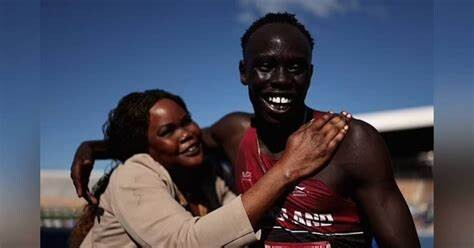
The high schooler first made headlines when he cruised to a 20.77-second win in the qualifying rounds of the 200m at the World U20 Championships in Lima, Peru, in August. The following day, he clinched the silver medal in the event’s final.
Gout signed a pro contact with Adidas in October, and just a week later, clocked an electrifying 20.29 at the All Schools Queensland track and field championships. The time broke his own U18 national record, along with the 31-year-old U20 national record and the Oceanic record. His time was the fourth-fastest in Australia’s history.
Gout’s race on Friday clip is his second to go viral in the athletics world in four months; many track and field fans began drawing comparisons of his tall stature and running style to those of Jamaican track legend Usain Bolt.
by Cameron Ormond
Login to leave a comment
Hassan and Tebogo named World Athletes of the Year
Olympic champions Sifan Hassan and Letsile Tebogo have been announced as World Athletes of the Year at the World Athletics Awards 2024 in Monaco.
Following a vote by fans, Hassan and Tebogo received top honors on an evening that saw six athletes crowned in three categories – track, field and out of stadium – before the overall two winners were revealed.
Tebogo was confirmed as men’s track athlete of the year, with Sydney McLaughlin-Levrone receiving the women’s honour. Hassan claimed the women’s out of stadium crown and Tamirat Tola the men’s, while Mondo Duplantis and Yaroslava Mahuchikh were named field athletes of the year.
This year’s Rising Stars were also celebrated, with Sembo Almayew and Mattia Furlani receiving recognition.
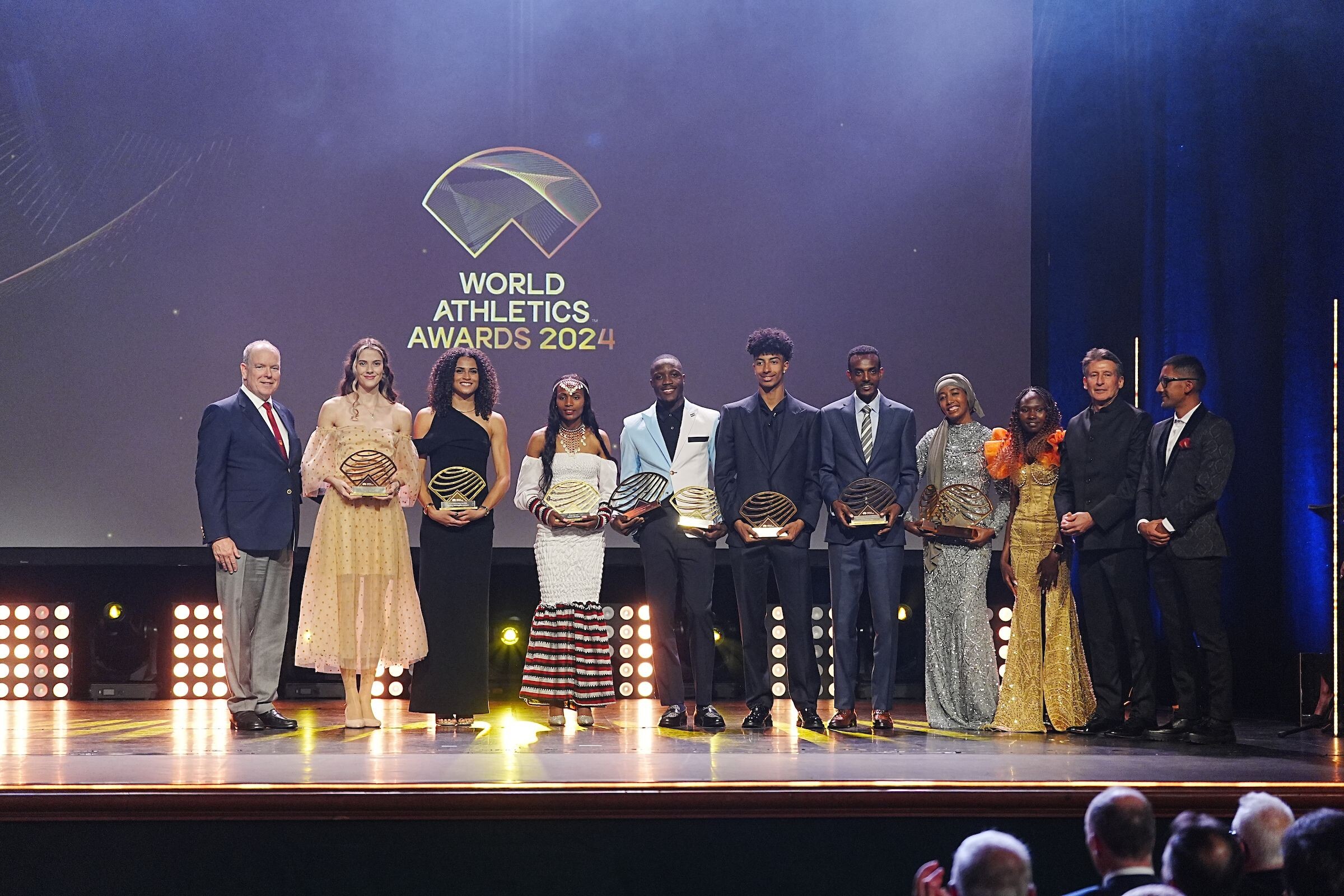
World Athletes of the Year for 2024
Women’s World Athlete of the Year: Sifan Hassan (NED)Men’s World Athlete of the Year: Letsile Tebogo (BOT)
Women’s track: Sydney McLaughlin-Levrone (USA)Women’s field: Yaroslava Mahuchikh (UKR)Women’s out of stadium: Sifan Hassan (NED)Men’s track: Letsile Tebogo (BOT)Men’s field: Mondo Duplantis (SWE)Men’s out of stadium: Tamirat Tola (ETH)
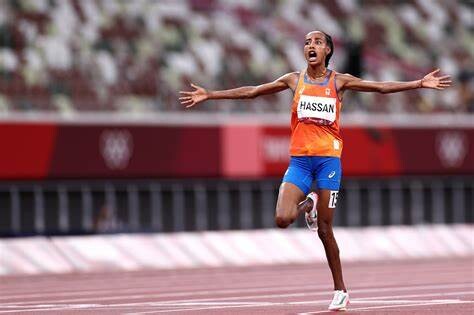
Women’s Rising Star: Sembo Almayew (ETH)Men’s Rising Star: Mattia Furlani (ITA)
“At the end of what has been a stellar year for athletics, we are delighted to reveal our list of World Athletes of the Year – both in their respective disciplines and overall,” said World Athletics President Sebastian Coe. “This group of athletes represents the very best of our sport and has this year redefined what is possible in terms of athletic performance.
“Our 2024 cohort set new standards in heights, speed and distance, including six world records and a host of Olympic and national records between them.
“I congratulate all our award winners, and all of the athletes nominated for these honors, and I thank them for inspiring us all with their performances this year.”
World Athletes of the Year Hassan and Tebogo both won gold and claimed multiple medals at the Paris 2024 Olympic Games.
Dutch star Hassan’s medal treble in Paris was capped by her winning the final athletics gold medal of the Games with her triumph in the marathon in an Olympic record of 2:22:55. That performance came just 37 hours after Hassan claimed bronze in the 10,000m, and six days after her first medal in the French capital – also bronze – in the 5000m.
As a result, she became the first woman to win medals in the 5000m, 10,000m and marathon at the same Games, and the first athlete since Emil Zatopek, who won all three men’s titles in Helsinki in 1952.
Tebogo also made history in Paris when he won the 200m, as he claimed a first ever Olympic gold medal in any sport for Botswana. He ran an African record of 19.46 – a time that moved him to fifth on the world all-time list – and that performance followed his sixth-place finish in the 100m final. He went on to form part of Botswana’s silver medal-winning men’s 4x400m team.
He dipped under 20 seconds for 200m a total of nine times in 2024, with those performances topped by his Olympic title-winning mark which remained the fastest of the year.
His fellow track athlete of the year, McLaughlin-Levrone, improved her own world 400m hurdles record twice, to 50.65 and 50.37, and claimed Olympic gold in that event as well as in the 4x400m. Tola, who joined Hassan in being named out of stadium athlete of the year, won the Olympic marathon title in Paris in an Olympic record.
World records were set by both field athletes of the year. Mahuchikh cleared 2.10m to improve the world high jump record before winning Olympic gold, while Duplantis revised his own world pole vault record three times, eventually taking it to 6.26m, and won the Olympic title.
"Thank you to the fans, to everybody who voted," said Hassan, who was in Monaco to receive her two awards. "I never thought I was going to win this one. This year was crazy. It’s not only me – all the athletes have been amazing. I’m really grateful. What more can I say?"
Standing alongside Hassan on the stage at the Theatre Princesse Grace, Tebogo said: "It feels amazing to know that the fans are always there for us athletes. It was a great year.
"This means a lot," he added. "It’s not just about the team that is around you, there are a lot of fans out there that really want us to win something great for the continent. It was a real surprise to hear my name because I didn’t expect this."
Almayew and Furlani named Rising Stars of 2024
Not only did Sembo Almayew and Mattia Furlani achieve great things as U20 athletes in 2024, they both also secured success on the senior stage.
Almayew finished fifth in the 3000m steeplechase final at the Paris Olympics, going close to her own national U20 record with her 9:00.83 performance, before she travelled to Lima where she won the world U20 title, setting a championship record in the process. With that win, the 19-year-old became the first ever Ethiopian world U20 women’s steeplechase champion.
Furlani improved the world U20 long jump record to 8.38m at the European Championships on home soil in Rome to secure silver, and he won two more senior major medals at the World Indoor Championships, where he got another silver, and the Olympic Games, where he claimed bronze.
In Glasgow – at the age of 19 years and 24 days – Furlani became the youngest athlete ever to win a world indoor medal in the horizontal jumps.
Knight wins President’s Award
The winner of the President’s Award was also announced in Monaco on Sunday (1), with Nike co-founder Phil Knight receiving the honour in recognition of his constant inspiring support for athletics and the development of the sport.
The President's Award, first awarded in 2016, recognises and honours exceptional service to athletics. Past winners of the award include the Ukrainian Athletics Association, British journalist Vikki Orvice, Swiss meeting director Andreas Brugger, Jamaican sprint superstar Usain Bolt, the Abbott World Marathon Majors, and 1968 men’s 200m medallists Tommie Smith, Peter Norman and John Carlos for their iconic moment on the podium in Mexico.
“Phil Knight’s passion for athletics is pretty much lifelong,” said Coe. “He developed an almost father-son relationship with his coach, the legendary Bill Bowerman, whose training approach was a departure from the orthodoxies of the day and who not only guided Knight’s career on the track but became a central figure when Phil took his first tentative steps in the running shoe business that became the dominant global force Nike.
“His love of athletics runs through Nike. It is a business created and driven by runners, with Phil never afraid to be the front runner.”
Knight said: “Thank you, Seb Coe, for the ultimate honour of the President’s Award, given by World Athletics. I am in great company, with Tommie Smith and John Carlos, and Usain Bolt. Obviously, I didn’t run as fast as those guys, but I am in such high company that I am thrilled by the award. Track and field has always been an important part of Nike – it has always been a central part of who Nike is.
“I do think running will continue to grow. Not only does Seb and his team do a great job promoting the sport, but it is a sport that not only is enjoyable, but it is probably the best fitness activity you can do. So, for me to win this honour, it is very meaningful.”
During the ceremony, a moment was taken to remember last year’s men’s out of stadium athlete of the year Kelvin Kiptum, the marathon world record-holder who died in a road traffic accident in February, as well as other figures from the sport who have passed away in 2024.
by World Athletics
Login to leave a comment
Afghan sprinter homeless in Germany after Paris Olympics
Less than four months ago, Afghanistan sprinter Sha Mahmood Noor Zahi proudly carried his country’s flag down the River Seine at the 2024 Paris Olympics. A week later, he became a household name in Afghanistan by setting a national record in the men’s 100m preliminary round, missing a qualifying spot in the heats by just one place. At that moment, Noor Zahi made the biggest decision of his life: choosing to leave his country with a one-way ticket to Germany in hopes of a better future.
In an interview with the German newspaper Süddeutsche Zeitung, Noor Zahi said he has been living in a shelter in the city of Schweinfurt for the past few months while awaiting his asylum application. Though he does not speak English or German, he can be found training four to (sometimes) five hours a day at Sachs Stadion, the home of the city’s soccer team.

The 33-year-old achieved his dream of running at the Olympic Games through a universality place selection for Tokyo 2020. (The program aims to ensure broader global representation at major championships by allowing athletes from countries with less-developed sports programs to participate). Noor Zahi has taken full advantage of the opportunity, lowering his 100m personal best from 11.04 seconds to 10.64 seconds in the span of three years. Although he does not have a coach, he continues to follow the training plan he received in Iran before the Paris Olympics.
Noor Zahi’s main goal is to qualify for the 2028 Olympics in Los Angeles (his third Olympics), when he would be 37. He has ambitions to become the first person from his country to run under 10 seconds and qualify for an Olympic final. “I’ve run and run to overcome many obstacles,” he said about his challenges. “So why stop now?”
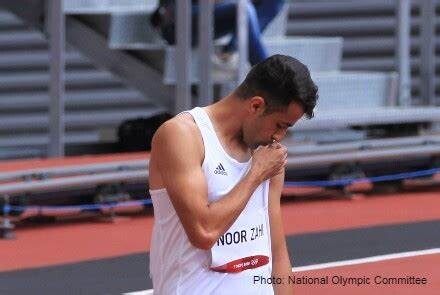
An athlete he has always admired is Jamaica’s Usain Bolt, whom he recalls watching in videos on his mobile phone in his younger days in Afghanistan. Noor Zahi pointed to Bolt’s speed, confidence and the way he graced the track. For Noor Zahi to achieve his goal, he needs to stay in Germany, where he can continue to train and pursue a career in athletics.
The situation in his home country remains dire. The radical Islamist Taliban group regained power in 2021 after the withdrawal of international troops. Since then, the group has been publicly executing people in stadiums, and women are only allowed on the streets when accompanied by men.
Noor Zahi is aware that he is also fighting a battle against time in sprinting, where athletes over 30 rarely set personal bests. His idol, Bolt, set his world record at 23 and was 30 when he won his final Olympic medals in Rio 2016.
by Marley Dickinson
Login to leave a comment
'He made me eat cleaner & work harder' - Justin Gatlin on how Usain Bolt shaped him into becoming a better sprinter
Justin Gatlin has heaped praise on his long-time arch-nemesis Usain Bolt, thanking him for making him the athlete he ended up becoming after returning to the sport.
American sprint icon Justin Gatlin has revealed the profound impact Usain Bolt had on his career, acknowledging how the Jamaican legend pushed him to reach new heights.

Known for a rivalry that defined an era of sprinting, Gatlin and Bolt clashed in numerous unforgettable races, showcasing contrasts in style and personality. Yet, despite the fierce competition, Gatlin now reflects on their encounters with admiration, crediting Bolt for inspiring him to be his best.
“Competing against someone like him, he brought the best out of me,” Gatlin said on The Higher Perspective Talks.
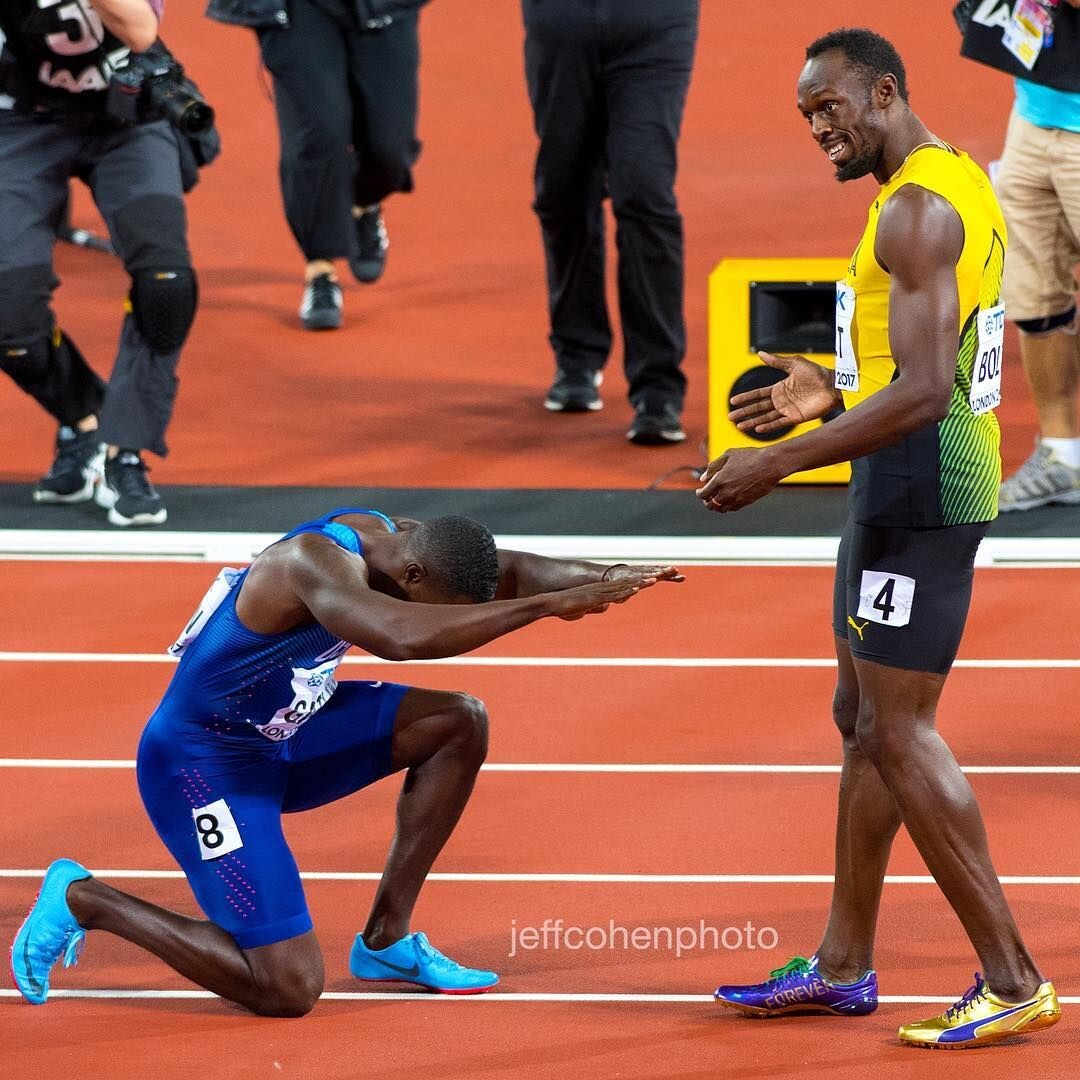
His comments came just over a week after Bolt himself recognized Gatlin as his toughest competitor. Gatlin expressed that Bolt’s presence on the track forced him to elevate his approach to training, nutrition, and overall athletic dedication.
“He made me wanna train harder. He made me wanna be a different athlete. He made me eat cleaner, work harder, compete harder because that was an athlete that represented a standard, one that I always wanted to get to,” Gatlin explained, underscoring the high benchmark Bolt set with his relentless speed and unwavering confidence.
Reflecting on their head-to-head races, Gatlin noted that he was always ready to face Bolt, eager to test himself against the reigning champion. “When I banged against him, I was ready any time. I wanted to race him every day if I could,” Gatlin shared. His words highlight not only the intensity of their rivalry but also the motivation he found in trying to match Bolt’s prowess.
Usain Bolt also had kind words for Gatlin during a recent appearance on John Obi Mikel’s Obi One podcast. “I think Justin Gatlin, I have to give my hats off to him,” Bolt said. “The last five, six years of my career, it was me and him every season. He kept me on my toes throughout, and I loved the competition.”
Bolt recalled a particularly memorable exchange when he saw a video of Gatlin confidently declaring his intent to win gold.
“I remember I’m just on Instagram scrolling, and someone sent me a video,” Bolt recounted. “He [Gatlin] was like, ‘Justin, I’m gonna win, don’t worry, and I’m going to wear the gold medal around my neck.’ And I’m like, ‘What? Alright, let’s go then.’”
Recognizing Gatlin’s fierce resolve, Bolt added, “Listen, Gatlin is going to show up. He is that guy in a Championship; no matter what is going on, he is going to show up.”
Their rivalry may have seen Bolt take the lion’s share of victories, but the respect they have for one another transcends competition.
As Gatlin reflects on his journey, it’s clear that Bolt’s influence left a lasting mark, inspiring him to push beyond his limits in pursuit of excellence. Their rivalry brought unparalleled excitement to the sport, and their mutual respect continues to exemplify the power of elite competition.
by Mark Kinyanjui
Login to leave a comment
Record-breaking teen sprinter Gout Gout is set to train alongside Noah Lyles
Gout Gout recently signed with Adidas and will have the opportunity to train alongside world champion Noah Lyles, gaining valuable mentorship as he continues his path to the top.
After inking a lucrative deal with leading German athletic apparel and footwear corporation Adidas, Gout Gout will now have a chance to train with triple world champion Noah Lyles.

Gout Gout’s manager James Templeton noted that it is a great opportunity for the youngster to interact with Noah Lyles and get to know more about sprinting as he looks to chat his own path to the top.
James Templeton is optimistic that Noah Lyles will be open to teaching Gout Gout a lot, noting that he believes the reigning Olympic 100m champion is a great personality to be around.
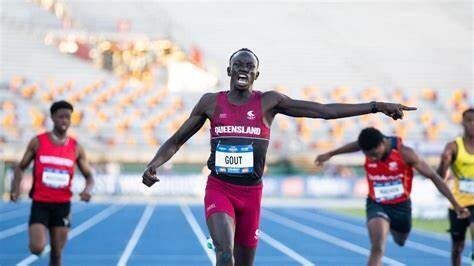
Noah Lyles is also an Adidas athlete and earlier this year, the American sprint king extended his contract until the 2028 Olympic Games in Los Angeles. Noah Lyles’ contract with Adidas is considered the richest in track and field since Usain Bolt's deal with Puma.
"We have the opportunity to go to Florida and join the training group of Noah Lyles and coach Lance Brauman (Lyles’ coach). There are about 16 or 18 top sprinters there,” James Templeton told ABC News.
"We'll be heading over for two or three weeks. That'll be a great opportunity, a wonderful educational experience. I haven't heard from Noah, but he's a great guy and I'm sure he'll be happy to take the younger guy under his wing a little bit."
Meanwhile, Gout Gout has been very impressive in his races and since 2022, he has proven to be unstoppable, running crazy times and making headlines. Gout Gout was named the holder of the Australian Under-16 100m and 200m records at the age of 14.
The following year, Gout Gout managed to break the Australian Under-18 men’s 200m record after running 20.87 seconds. He claimed top honors at the Australian Junior Athletics Championships in Brisbane.
In 2024, Gout Gout has been on top of the world with his crazy times and superb form. He started his season with a personal best time of 10.29 seconds to claim the win in the U-18 Boys 100m at the Queensland Athletics Championships.
Gout Gout then won the Australian U20 100m title in a time of 10.48 seconds in Adelaide before heading to the World Athletics U20 Championships in Lima, Peru. In Peru, the Australian youngster won a silver medal in the 200m.
He recently signed with Adidas and then proceeded to the Queensland All-Schools Championships, clocking a time of 20.29 seconds in the heats of the 200m to showcase his authority once again.
by Abigael Wafula
Login to leave a comment
Usain Bolt shares the best advice he’s ever received
Known for his iconic celebrations and world-record-breaking times, eight-time Olympic gold medallist Usain Bolt shared a powerful piece of advice from his long-time coach on this week’s episode of the High-Performance Podcast.
Bolt credited his coach, Glen Mills—who led the Jamaican Olympic track and field team for two decades—for the advice that shaped the rest of his career. Mills began coaching Bolt after his Olympic debut in Athens 2004, where Bolt, then a rising talent, failed to advance from the men’s 200m heats.
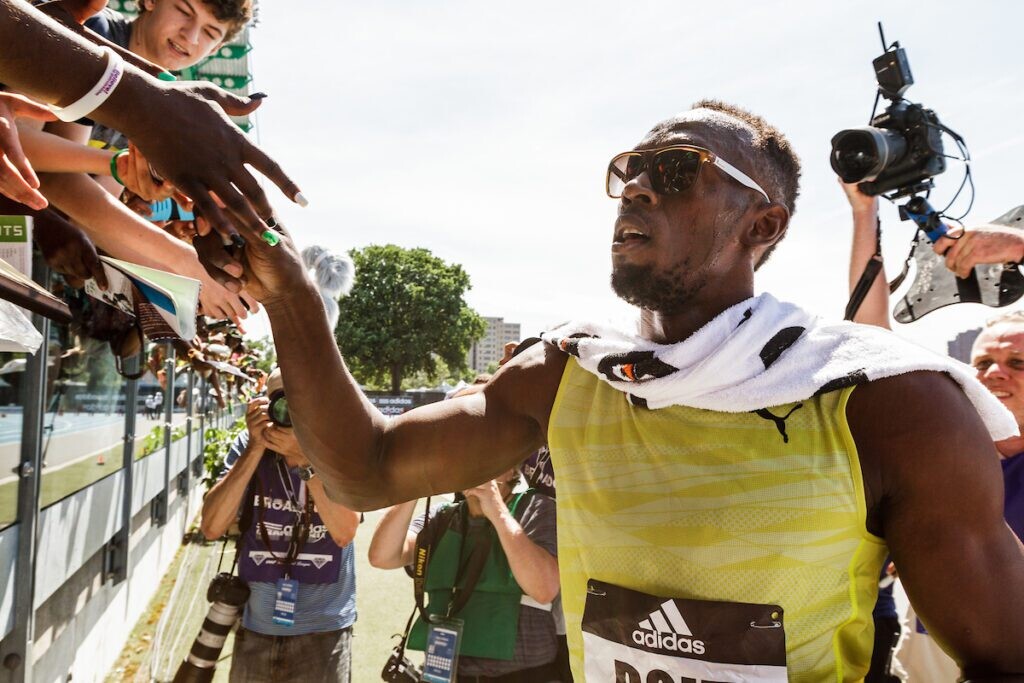
After that, Mills told Bolt, “You have to learn how to lose before you can learn how to win.” As a teenager, Bolt didn’t fully grasp what Mills meant by it, but it became clear. “You will fail at some point,” Bolt said on the podcast. “What’s important is what you take away and learn from it. If you can be truthful and honest with yourself, you’ll realize what you need to do to get better.”
Bolt came to Mills as a 200m specialist and credits his coach with developing his explosive power in the 100m—a distance in which Bolt set a world record of 9.58 seconds in 2009, a record that remains unbroken.
Bolt went on to become the seventh man in history to win Olympic gold in both the 100m and 200m at the 2008 Games in Beijing, a feat he accomplished twice more in his career, at London 2012 and Rio 2016—making him the only athlete in history to achieve a three-peat in these two sprint events.

The 38-year-old officially retired after the 2017 World Championships and briefly tried his hand at professional soccer with Australia’s Central Coast Mariners in 2018.
by Marley Dickinson
Login to leave a comment
16-year-old Aussie sprinter turns pro with Adidas
The Grade 11 sprinter’s running style and tall frame have been compared to that of the legendary Usain Bolt.
Australia’s sprint sensation Gout Gout has signed a professional contract with Adidas at just 16.
The high schooler made headlines after he cruised to a 20.77-second win in the qualifying rounds of the 200m at the World U20 Championships this past August. The clip went viral in the athletics world, and track and field fans drew comparisons from his tall stature and running style to those of Jamaican track legend Usain Bolt.
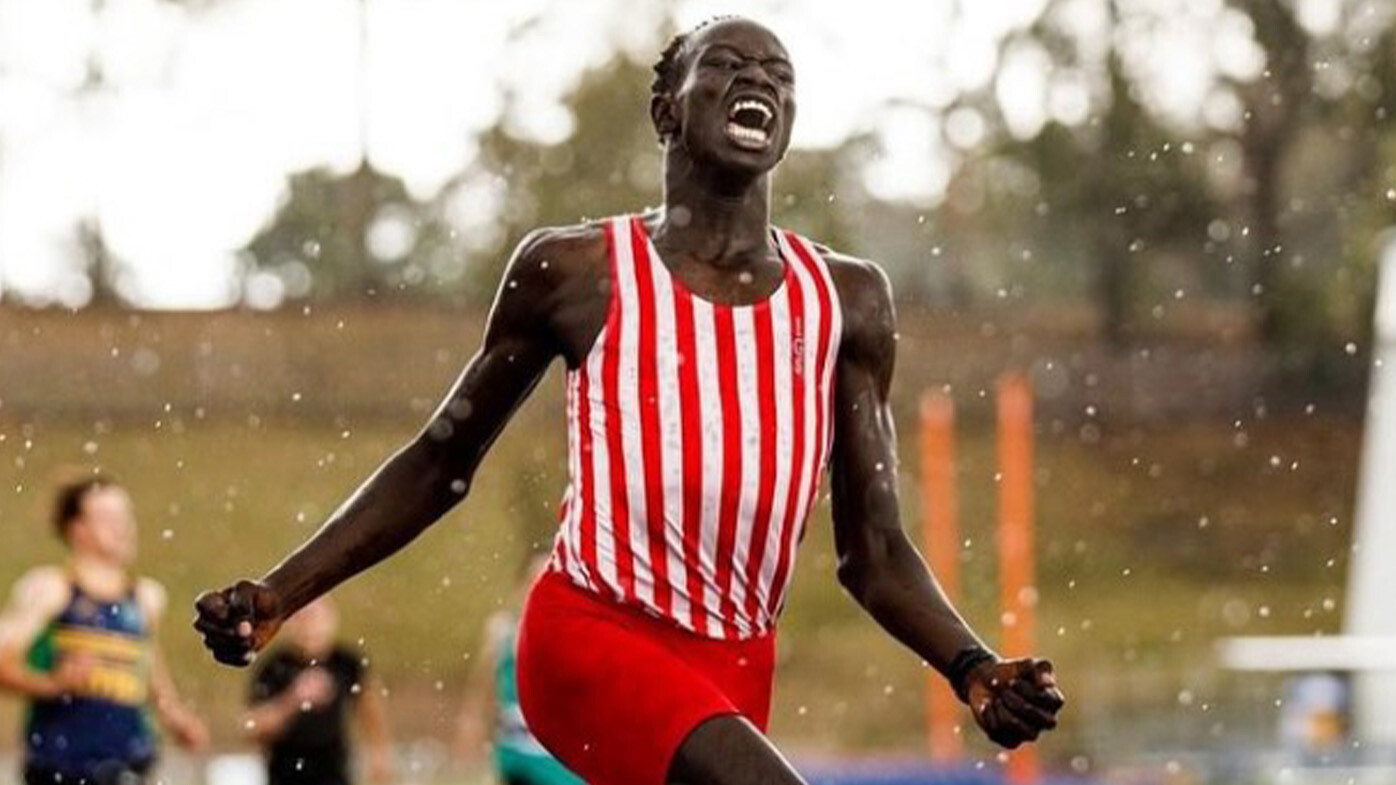
“Usain Bolt is that you?” one comment said.
“Gout Gout reminds me of Usain Bolt. He will definitely level up with him,” said another.

The following day, Gout ran another personal best of 20.60 seconds in the 200m final, setting an Australian U18 record and winning silver. He was outrun by South Africa’s Bayanda Walaza who took home double golds in the World U20 100m and 200m and won silver in the 4x100m relay at the Paris Olympics earlier that month. Walaza is two years older than Gout, who was competing against athletes three to four years older.
The Aussie’s performance surpassed Bolt’s own winning time from the 2002 Junior World Championships in Kingston, Jamaica, where the 16-year-old Jamaican clocked 20.61. “It’s pretty cool because Usain Bolt is arguably the greatest athlete of all time, and just being compared to him is a great feeling,” Gout said.
Like Bolt, the 200m isn’t Gout’s only event. He also holds a personal best of 10.29 in the 100m and has held the Australian U18 200m record since last year, at just 15.
In 2005, Gout’s parents moved from South Sudanese to Brisbane, Australia where Gout was born in 2007. The athlete attends Ipswich Grammar School, an all-boys boarding school, in Queensland, Australia, where he first showed off his athleticism in rugby. He’ll only be 24 when the Olympics come to his hometown of Brisbane in 2032.
by Cameron Ormond
Login to leave a comment
How to train for a marathon no matter how fit you are
If you’re planning a marathon, you’re on the road to becoming part of a select proportion of the global population – 0.01 per cent, to be exact. But that doesn’t mean running one is exclusive to the lycra-clad minority. With the right planning, training and dogged determination anyone can have a go. Here’s what you need to know if you’re gearing up to train for the race of your life.
Which marathon should I choose to run?
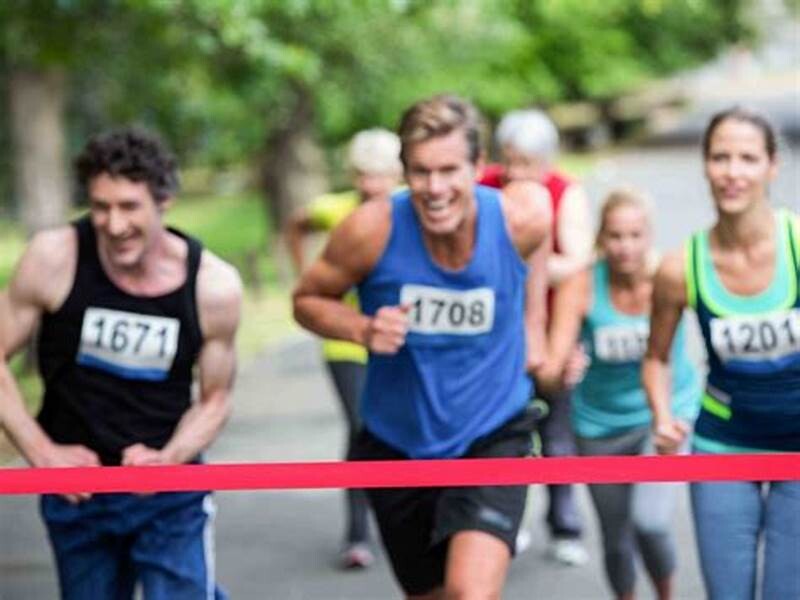
The London Marathon is special, with incredible atmospheric and historic appeal, but it’s notoriously tricky to get a place and is far from the only one to consider. All marathons are 26.2 miles, so if you’re a beginner, you might want to choose what seasoned runners call an “easy” marathon – one with a flat and paved course. While the Brighton Marathon is one of the most popular (and mostly flat) UK spring races, the Greater Manchester Marathon is known as the flattest and fastest UK option. The under-the-radar Abingdon Marathon is one of the oldest in the UK and also has a flat route – great for new runners and for those who are keen to beat their personal bests.
Around Europe, try the Berlin and Frankfurt marathons in Germany, or the Amsterdam Marathon in the Netherlands. More recently, the Valencia and Seville marathons in Spain have grown in appeal. For a great beginner list, visit coopah.com. It’s worth doing your research to ensure it’s a route you’ll enjoy (atmospheric, well populated, flat, historic… whatever piques your interest), as this will pay dividends when things get tough.
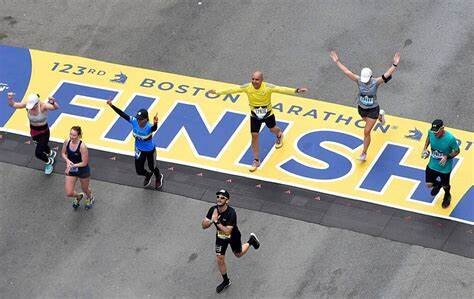
Training
How long does it take to train for a marathon?
“You need 16-to-18 weeks of training,” says Richard Pickering, a UK Athletics qualified endurance coach. “And if you’re starting from nothing, I think you need closer to six months.” This may sound like a long time to dedicate to one event but a structured plan will help you develop the strength, endurance and aerobic capacity to run longer distances. Not to mention work wonders for your overall health.
“Anyone can run a marathon if they are willing to put in the hard work,’ says Cory Wharton-Malcolm, Apple Fitness+ Trainer and author of All You Need Is Rhythm & Grit . “As long as you give yourself enough time and enough grace, you can accomplish anything.’
Ready to get running? Read on.
Five steps to preparing for a marathon
1. Follow a training plan and increase mileage gradually
“Even if it’s a simple plan, and that plan is to run X times per week or run X miles per week, it’s beneficial to have something guiding you,’ says Wharton-Malcolm. ‘It’s happened to me, without that guidance, you may overtrain causing yourself an injury that could have been avoided. And if you’re injured, you’re far less likely to fall in love with running.”
For authoritative plans online, see marathon event websites (try the Adidas Manchester Marathon or the TCS London Marathon websites) or from a chosen charity such as the British Heart Foundation. Most will consist of the key training sessions: speed work (spurts of fast running with stationary or active rest periods), tempo runs (running at a sustained “comfortably uncomfortable” pace), and long-distance slogs.
Most marathon plans will abide by the 10 per cent rule, in that they won’t increase the total run time or distance by more than 10 per cent each week – something that will reduce your risk of injury.
2. Practise long runs slowly
Long runs are your bread-and-butter sessions. They prepare your body to tolerate the distance by boosting endurance, and give you the strength to stay upright for hours. Intimidating as this sounds, the best pace for these runs is a joyously slow, conversational speed.
“People may think they need to do their marathon pace in long runs,” says Pickering, “but it’s good to run slowly because it educates the body to burn fat as fuel. This teaches it to use a bit of fat as well as glycogen when it goes faster on race day, and that extends your energy window so that you’re less likely to hit the ‘wall’.”
The caveat: running slowly means you’re going to be out for a while. With the average training plan peaking at 20 miles, you could be running for many hours. “When I did lots of long runs, I had a number of tools: listening to music, audio-guided runs, apps or audio books,” says Wharton-Malcom. “I used to run lots of routes, explore cities… You can also do long runs with friends or colleagues, or get a train somewhere and run back so it’s not the same boring route.”
3. Do regular speed work
Speed work may sound like the reserve of marathon aficionados, but it’s good for new long-distance runners too. “I think people misunderstand speed work,” says Wharton-Malcom. “The presumption is that the moment you add ‘speed’ to training, you have to run like Usain Bolt, but all ‘speed’ means is faster than the speed you’d normally be running. So if you go out for a 20-minute run, at the end of the first nine minutes, run a little faster for a minute, then at the end of the second nine minutes, run a little faster for a minute.”
Small injections of pace are a great way for novices to reap the benefits. “The idea is to find the sweet spot between ‘Ah, I can only hold on to this for 10 seconds’ and ‘I can hold on to this for 30-to-60 seconds’,” he adds.
Hill sprints are great for increasing speed. Try finding a loop with an incline that takes 30 seconds to ascend, then run it continuously for two to three lots of 10 minutes with a 90-second standing rest.
Interval work is also a speed-booster. Try three lots of three minutes at tempo pace with a 90-second standing rest. “The recovery [between intervals] is when you get your breath back and your body recirculates lactate [a by-product of intense exercise, which ultimately slows bodies down],” explains Pickering, “and this means you’re able to do more than you otherwise would.”
4. Run at marathon-pace sometimes
Every now and then, throw in some running at your chosen race pace. “You need to get used to a bit of marathon pace,” says Pickering, “but I wouldn’t put it into your programme religiously.”
Some runners like to practise marathon pace in a “build-up” race, typically a half-marathon. “It can give people confidence,” says Pickering. “Your half-marathon should be six-to-seven weeks prior to the main event, and have a strategy to ensure you’re not racing it because you need to treat it as a training run.”
5. Schedule in rest and recovery
Of course, no training plan is complete without some R&R. Rest days give your body a chance to adapt to the stresses you’ve put it through and can provide a mental break. “Active recovery” is a swanky term for taking lighter exercise such as an easy run, long walk, gentle swim, some yoga – crucial because you don’t want to do two hard sessions back-to-back. “A long run would count as a hard day, so if your long run is on Sunday, you could do an easy run such as 30-40 minutes at a conversational pace on a Monday, but don’t do anything fast until Tuesday,” says Pickering.
What about recovery tools?
Foam rollers, massage guns, ice baths – the list is long. Pickering says to keep it simple: “I would encourage foam rolling [relieving muscle tension by rolling over a foam tube] or sports massage, and they’re kind of the same thing.”
And Wharton-Malcom swears by the restorative power of a good rest: “From personal experience, sleep is our secret weapon and it’s so underrated. Getting your eight-hours-plus per night, taking power naps during the day… you can do so well with just sleeping a bit more.”
Race day
How to perform your best on race day – what to eat
“The marathon is going to be relying on carbohydrate loading [such as spaghetti, mashed potato, rice pudding], which should take place one-to-three days before an event,” explains performance nutritionist Matt Lovell. Other choices might include: root vegetables (carrots, beetroot), breads or low-fat yoghurts.
“On the day, the main goal is to keep your blood glucose as stable as possible by filling up any liver glycogen.” Which means eating a breakfast rich in slow-release carbohydrates, such as porridge, then taking on board isotonic drinks, like Lucozade Sport or coconut water, and energy gels roughly every 30-45 minutes.
How to stay focused
Even with the right fuel in your body, the going will get tough. But when you feel like you can’t do any more, there is surprisingly more in the tank than you realise.
“Sports scientists used to think we eat food, it turns into fuel within our body and, when we use it up, we stop and fall over with exhaustion,” says performance psychologist Dr Josephine Perry. “Then they did muscle biopsies to understand that, when we feel totally exhausted, we actually still have about 30 per cent energy left in the muscles.”
How do you tap into that magic 30 per cent? By staying motivated – and this ultimately comes down to finding a motivational mantra that reminds you of your goal and reason for running.
“Motivational mantras are incredibly personal – you can’t steal somebody else’s because it sounds good; it has to talk to you,’ explains Dr Perry, author of The Ten Pillars of Success. “Adults will often have their children as part of their motivational mantra – they want to make them proud, to be a good role model. If you’re doing it for a charity, it might be that.” Write your motivational mantra on your energy gel, drinks bottle or hand. “It doesn’t just need to come from you,” adds Dr Perry. “I love getting athletes’ friends and family to write messages to stick on their nutrition, so every time they take a gel out of their pocket, they’ve got a message from someone who loves them.” Perry is supporting the Threshold Sports’ Ultra 50:50 campaign, encouraging female participation in endurance running events.
Smile every mile, concludes Dr Perry: “Research shows that when you smile it reduces your perception of effort, so you’re basically tricking your brain into thinking that what you’re doing isn’t as difficult as it is.”
One thing is for sure, you’re going to be on a high for a while. “What happens for most people is they run the race and, for most of the race, they say ‘I’m never doing this again,’ says Wharton-Malcom. “Then the following morning, they think, ‘OK, what’s next?’”
What clothes should you wear for a marathon?
What you wear can also make a difference. Look for clothing made with moisture-wicking fabrics that will move sweat away from the skin, keeping you dry and comfortable. An anti-chafe stick such as Body Glide Anti-Chafe Balm is a worthy investment, or simply try some Vaseline, as it will stop any areas of the skin that might rub (under the arms, between the thighs) from getting irritated. Seamless running socks, like those from Smartwool, can also help to reduce rubbing and the risk of blisters.
Post-race recovery
What to eat and drink
Before you revel in your achievement, eat and drink something. Lovell says recovery fuel is vital: “Getting carbohydrates back into the body after a marathon is crucial. It’s a forgiving time for having lots of calories from carbohydrates and proteins, maybe as a recovery shake or a light meal such as a banana and a protein yoghurt.”
Have a drink of water with a hydration tablet or electrolyte powder to replenish fluid and electrolyte salts (magnesium, potassium, sodium) lost through sweat.
“You can have a glass of red later if you want, but your priority is to rehydrate with salts first, then focus on carbohydrate replenishment, then have some protein, and then other specialist items such as anti-inflammatories.” Choose anti-inflammatory compounds such as omega 3 and curcumin from turmeric, which you can get as a supplement, to help reduce excessive inflammation and allow for better muscle rebuilding.
Tart cherry juice – rich in antioxidants, anti-inflammatories and naturally occurring melatonin – could also be useful, with the latest research reporting that it can reduce muscle pain after a long-distance race and improve both sleep quantity and quality by five-to-six per cent. “And anything that improves blood flow such as beetroot juice, which is a good vasodilator, will help with endurance and recovery,” adds Lovell. Precision Hydration tablets are very good for heavy sweaters.
Any other other good products to help with recovery?
The post-run recovery market is a saturated one, but there are a few products worth trying. Magnesium – from lotions and bath flakes to oil sprays drinks and supplements – relaxes muscles and can prevent muscle cramps, as well as aiding recovery-boosting sleep.
Compression socks boost blood flow and therefore the removal of waste products from hardworking muscles, and have been shown to improve recovery when worn in the 48 hours after a marathon. Arnica has anti-inflammatory properties that can help speed up the healing process after a long run, and can be used as an arnica balm or soak.
by The Telegraph
Login to leave a comment
Another look at the new women’s marathon record set in Chicago today
30-year-old Kenyan Ruth Chepngetich destroyed the women’s marathon world record today (13 Oct. 2024) at the 46th Bank of America Chicago Marathon. Her time of 2:09:56 ripped 1:57 from the previous mark set in Berlin 2023 by Ethiopia’s Tigst Assefa (2:11:53).
At this point, the athletics record book feels like it ought to be written in No. 2 Ticonderoga pencil. That’s how fast records fall in this age of technological and nutritional advances. This is especially true at the longer distances where such advancements create greater margins.
Still, Ruth Chepngetich’s new world record stands out as history’s first women’s sub-2:10, and first sub-5:00 per mile pace average. But Tigst Assefa’s 2:11:53 mark set last year in Berlin had us all cradling our heads, as well. That performance cut 2:11 off Brigid Kosgei‘s 2:14:04 record from Chicago 2019, which shattered Paula Radcliffe‘s seemingly impregnable 2:15:25 set in London 2003.
In each case: Radcliffe’s, Kosgei’s, Assefa’s, and now Chepngetich’s record have caused mouths to gape in the immediacy of their efforts. But nothing should surprise us anymore.
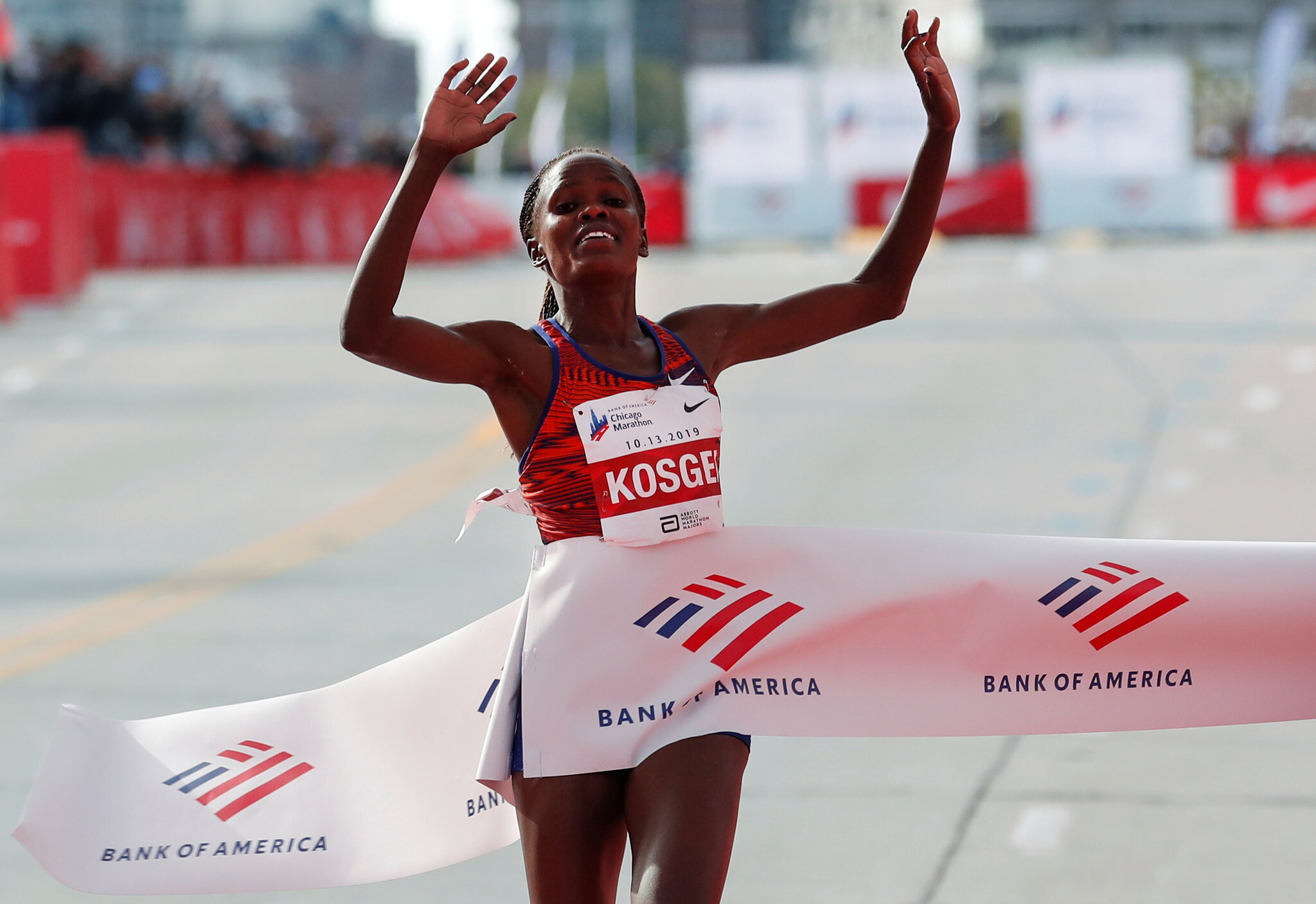
Racing is often a self-fulfilling prophecy determined by one’s build-up. Ruth Chepngetich said in her TV interview she came into Chicago off a perfect three-months of training after her disappointing ninth-place finish in London in April (2:24:36). Two previous wins in the Windy City (2021 and 2022) and a runner-up in 2023 meant Ms. Chepngetich arrived well seasoned on this course, with a keen understanding of what training was required to produce such a record run.
Of course, sadly, no record in athletics can be free of skepticism considering the industrial level of PED use that is uncovered, seemingly, every other Tuesday. Though understandable, cynicism should not be one’s default reaction.
To maintain any allegiance to the game, to follow it with any interest at all, we have to celebrate each record at face value. Just as rabid fans have to acknowledge some records to be ill-gotten, cynics accept that many special runs are exactly as they appear, above reproach.
Besides, when you break down Ruth’s 5k splits, each one from 5k to 35k was slower than the previous 5k. Not until the split from 35k to 40k (15:39) did she run faster than the split before (15:43 from 30 to 35k)
5k – 15:0010k – 30:14 (15:14)15k – 45:32 (15:18)20k – 60:51 (15:19)25k – 1:16:17 (15:26)30k – 1:31:40 (15:32)35k – 1:47:32 (15:43)40k – 2:03:11 (15:39)Fini – 2:09:56
1st half – 64:162nd half – 65:40
So congratulations to Ruth Chepngetich and her team for a marvelous run through a beautiful city. Now, let’s see how long this mark stays on the books before the No. 2 Ticonderoga pencil gets pulled out again.
BY THE NUMBERS
There have been 26 women’s world records set in the marathon since Beth Bonner‘s 2:55:22 in New York City in 1971. Over the ensuing 53 years, the average percentage change from one record to the next has been 1:26%. See WOMEN’S WORLD RECORD PROGRESSION.
Today’s record by Ruth Chepngetich, 2:09:56 (just one second slower than Bill Rodgers‘ American men’s record in Boston 1975!), lowered Tigst Assefa’s 2:11:53 mark by a healthy 1.5%. And Assefa’s time cut Brigid Kosgei’s 2:14:04 by 1.65%.
These latest records are still taking significant chunks off their predecessors and doing so in quick order. That suggests women are far from slicing everything they can from even this new record.
Yet, when comparing the women’s marathon world record to the men’s (2:00:35, set by Kelvin Kiptum in Chicago 2023), we see a differential of 7.2%. That is by far the best women’s record vis-à-vis the men’s throughout the running spectrum. Second place on that list is Florence Griffith-Joyner‘s 10.49 100m in relation to Usain Bolt‘s 9.58, a percentage difference of 8.675%.
The traditional rule of thumb has been a 10% gap between men’s and women’s records. But there are so many factors in play, it is difficult to make any definitive statement that explains one event, much less one athlete from another. I guess that’s why we keep watching.
by Toni Reavis
Login to leave a comment
Bank of America Chicago
Running the Bank of America Chicago Marathon is the pinnacle of achievement for elite athletes and everyday runners alike. On race day, runners from all 50 states and more than 100 countries will set out to accomplish a personal dream by reaching the finish line in Grant Park. The Bank of America Chicago Marathon is known for its flat and...
more...5 track stars we'd love to see on Dancing with the Stars
With Season 33 of Dancing with the Stars well underway, we’re seeing Olympic athletes like Team USA rugby star Ilona Maher and gymnast Stephen Nedoroscik (aka “pommel horse guy”) tear up the stage in a new way. Eight-time NBA All-Star Dwight Howard and two-time Super Bowl champion Danny Amendola are also surprising the audience with their stellar footwork in a very different type of competition. It makes us wonder—which track athletes would dominate the dance floor?
In Dancing with the Stars (DWTS) history, 12 elite athletes have been crowned champion and taken home the Mirrorball Trophy—but the only track and field athletes who have participated in the show are former U.S. 100m world record holder Maurice Greene and American sprint hurdler (and bobsledder) Lolo Jones. Considering how much track and field athletes enjoy their celebratory dances (sometimes walking the fine line between celebrating and showboating), we think these five personalities would thrive in the ballroom.
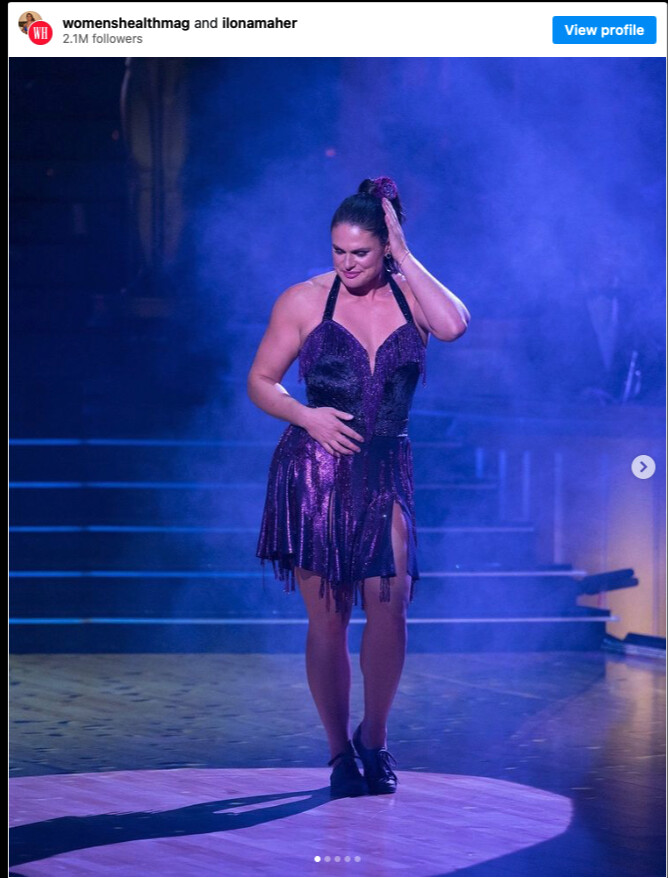
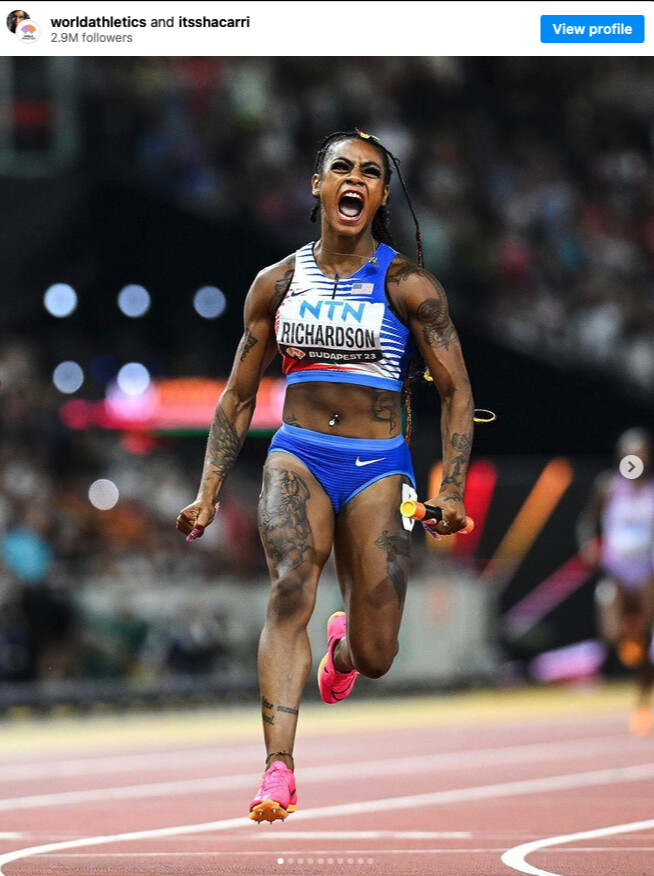
Usain Bolt
We all know our favourite world-class sprinter’s signature victory pose became iconic for a reason–Usain Bolt knows how to make a statement. He became the 100m and 200m world record holder after coming from a 400m background, proving that he can be good at everything he tries. The confidence and vibrant energy Bolt brought to every track event throughout his career makes us certain he’d bring that same spirit to the dance floor.
If knowing Bolt’s captivating and charismatic personality when performing in front of a crowd isn’t already enough, here’s a video of him samba dancing after a press conference at Rio 2016. Clearly, he’s already a pro.
Alysha Newman
Canada’s Alysha Newman went viral for her celebratory dance after winning the bronze medal in the women’s pole vault at Paris 2024. The Canadian record holder cleared the bar, faked an injury–and started twerking. That’s exactly the energy they’re looking for when screening world-class athletes for potential dance skills. The technical expertise required in pole vaulting also gives Newman an edge when it comes to executing lifts or more challenging moves.
Newman got both positive and negative attention on social media from the victory twerk, but stayed confident and was true to herself–once again demonstrating that she is a qualified candidate for the show.
Noah Lyles
We’re sure the first person that came to mind when thinking of an athlete with a television personality was Team USA’s Noah Lyles. The 27-year-old, already a star on Netflix’s docuseries Sprint, exudes confidence and drive in each and every race he appears in. To say that Lyles is a competitive athlete might be an understatement–the 100m and 200m sprinter has quickly become popular for his bold moves even before races, in an attempt to rile up the crowd.
We’ve also seen this Olympic champion and six-time world champion dancing on TikTok. A character like Lyles could win over the audience on DWTS, and with those kinds of moves, he might even be a contender for the trophy.
Sha’Carri Richardson
Another major sprint personality we simply cannot leave out is Sha’Carri Richardson of the U.S. As you may know, the cast on DWTS gets dressed up glamorously for each show, and Richardson is the definition of glam. With her hair, nails, and lashes on race day, we know the 24-year-old would fully embrace the sparkly, embellished outfits worn during DWTS performances. Look good, feel good—right? Not to mention, like Lyles, this 100m world champion exudes confidence in every performance, a quality that would take her far in the ballroom.
Aaron Brown
Canada’s four-time Olympian Aaron Brown is not only a newly-minted Olympic gold medallist, but also an influencer. The 100m and 200m sprinter posts a mix of inspirational and humorous videos on his YouTube channels–showing off his fun and driven personality. With the current DWTS cast using TikTok and Instagram as a platform to build a fan base and earn more votes, Brown earns extra points as a potential candidate for already being experienced in that domain. We’ve yet to see his dancing abilities put to the test, but if put up against a rival like Lyles, we’re sure we can expect nothing but sensational moves from the four-time Canadian Olympian.
Honourable mention: Jakob Ingebrigsten
If he can bring these moves back, you can expect a nomination from us to get Ingebrigtsen on the next season.
by Running Magazine
Login to leave a comment
Usain Bolt has already made his feelings clear as second 16-year-old breaks his record
Olympic legend Usain Bolt has seen his sprint times beaten by youngsters Gout Gout and Nickecoy Bramwell in recent months, but he remains philosophical on his achievements being topped.
Usain Bolt has already made his feelings clear on young athletes breaking his records by declaring that he is excited by emerging "personalities" in the sport.
Following Nickecoy Bramwell's record-breaking feat earlier in the year, another record held by the Jamaican icon was smashed this week as 16-year-old Gout Gout produced a silver medal-winning time of 20.60 seconds in the 200m at the U20 World Championships in Peru. The young Australian narrowly edged out Bolt's 2002 time in the same race when he was almost 16 years old.

The Olympic legend clocked 20.61 in the final, although he had a quicker time of 20.58 in the first round. More than two decades on from Bolt's heroics, South African Bayanda Walaza clinched gold with a time of 20.54, while Britain's Jake Odey-Jordan secured bronze in 20.81.
Back in May, 16-year-old Jamaican hopeful Bramwell took Bolt’s Under-17 400m world record at the Carifta Games in Grenada with the youngster clocking 47.26 seconds to beat the record by just 0.07 seconds. Bolt's record had previously stood for an incredible 22 years.

Speaking after Bramwell's achievements, Bolt hoped that his legendary times being eclipsed meant that athletics would be getting a much "needed" fresh injection of personality. He also claimed that the sport has not been the same since he departed the track.
“After me, it kind of went down because of who I was as a person, and how big my personality was," Bolt said. “But I think over time it will be better. I think young athletes are coming up and I see a few personalities that are needed in sport, hopefully in the upcoming years it will change.”
Who gets to inherit Bolt's heavy crown is another matter altogether, though. While Bramwell has caught the eye at longer distances, it's Gout who seems to be the major contender for Bolt's age-group records in the 100m and 200m.
The young athlete's performance has drawn strong comparisons to Bolt, with Athletics Australia president Jane Flemming among those claiming the young runner could be the next Olympic conquering superstar. Gout has taken such remarks with a degree of calmness rarely seen at such a young age, declaring that the compliment was "pretty cool".
Meanwhile, Bramwell, who has overcome several injury problems to now be discussed in the same breath as Bolt, has stated he now wants more of the legend's records. He said: "It's a wonderful feeling to break the record. Since last summer, I have been eyeing the record.
"So it's a great feeling I could come out here and get it. I just took my mind off it and focused on the record. I'm looking forward to better things.”
Bolt, 37, who retired in 2017, won eight Olympic gold medals and still holds world records in the 100m, 200m and the 4x100m relay. He now spends his athletics retirement with his family while also dabbling in celebrity charity events, like playing in Soccer Aid.
Login to leave a comment
How Usain Bolt contributed to Julien Alfred's victory in the women's 100m at the Paris Olympics
Julien Alfred has narrated how Usain Bolt inspired her to victory in the women's 100m final at the Paris Olympic Games.
Julien Alfred is walking in the footsteps of the fastest man in the world, Usain Bolt, as she looks to obliterate the women’s 100m world record.
The world record was set by the late Florence Griffith Joyner who clocked an astonishing 10.49 seconds to win the 1988 Seoul Olympic Games.

She explained that multiple Olympic champion Bolt contributed to her win at the Paris Olympic Games since she watched some of his videos before stepping on the track for the final. In an interview with the Times, Alfred noted that she wants to be one of the greatest ever.
She is slowly getting closer to achieving her dreams as she has been crowned Olympic champion. To achieve the feat, the St. Lucia sprinter had to beat a strong cast from the U.S. including the reigning world champion Sha’Carri Richardson and Melissa Jefferson who finished second and third.
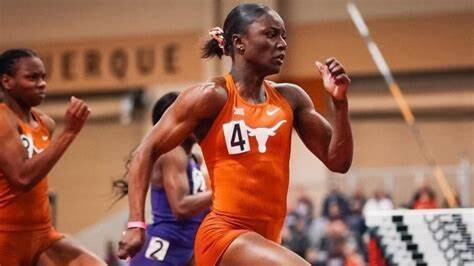
“For me it was never the Olympics. I wanted to be the fastest woman in the world. I wanted to be unbeatable. It was almost child-like. I never saw being from a small place as a negative. I never thought it would make things impossible. I watched Usain Bolt be the fastest man and just knew what I wanted,” Alfred said.
“I wanted to help my family and I saw running as a way out. So I watched a few of his races before mine. I had to go back to my roots to see how he handled everything, from the pressure to the celebrations. He was an inspiration to me growing up and I wanted to be just like him,” she added.
After winning the Olympic 100m and claiming the 200m silver medal, Alfred noted that she felt a sense of being free.
She was unfazed by the presence of Richardson and noted that in such instances, she never feels the need to worry about the things happening around her. When she steps on the track, Alfred noted that she only focuses on herself.
“When I run fast I feel happy, like I’m on top of the world and nothing can stop me. Sometimes when you focus on racing, it can make you tense, but when you just focus on yourself you have that freedom. No worries. Unstoppable. That’s how I felt in Paris,” she revealed.
However, her journey to becoming an Olympic champion has been marred with challenges. Alfred admitted that she used to train on grass since there was no available track where she used to live.
“Every country has its own challenges. But Saint Lucia is a country full of life, very beautiful and rich in its own ways. I really hope I have put it on the map,” she added.
by Abigael Wafula
Login to leave a comment
Paris 2024 Olympic Games
For this historic event, the City of Light is thinking big! Visitors will be able to watch events at top sporting venues in Paris and the Paris region, as well as at emblematic monuments in the capital visited by several millions of tourists each year. The promise of exceptional moments to experience in an exceptional setting! A great way to...
more...What next for Kenya after Paris 2024 Olympic Games
The curtains for the 2024 Paris Olympics fell on Sunday night with Kenya ranking 17th in the world after winning 11 medals.
Despite Kenya topping the African continent with 4 gold, 2 silver and 5 bronze medals, the results left a lot to be desired.
From 83 athletes competing in seven disciplines, a significant impact was expected from the Kenyan athletes and the world.
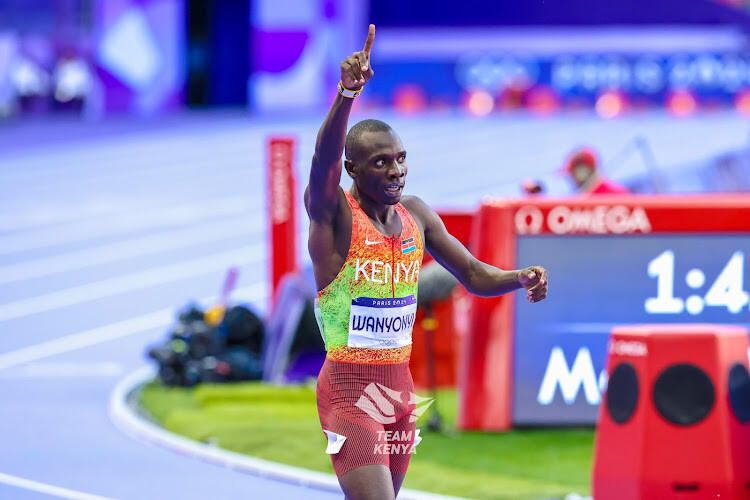
The show started with Judoka Zeddy Cherop falling 10-0 to Portugal’s Patricia Sampao in a record 22 seconds while Fencing African champion Alexandra Ndolo crushed out 13-12 to Ukranian Olena Kryvytska in her debut.
Maria Brunlehner and Ridhwan Mohamed finished 3rd and 4th in the women’s 50m freestyle and Men’s 400m freestyle heats respectively to crush out of contention for a swimming medal.
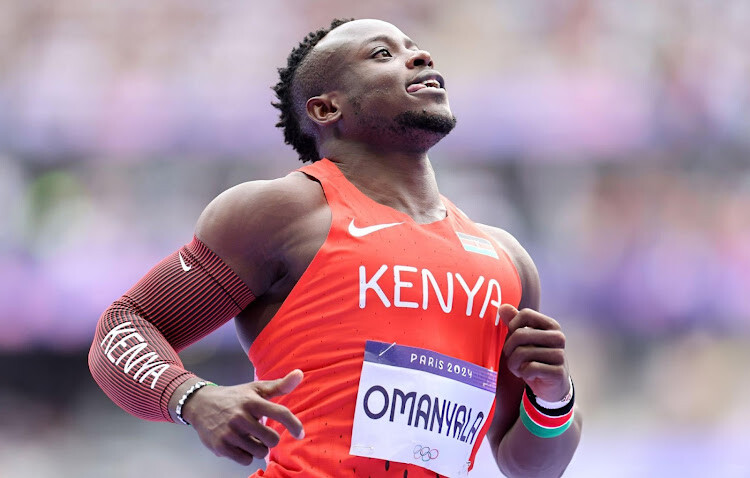
The sevens rugby team also crushed out in the group stage, after going down to Australia, Argentina and Samoa.
The women’s volleyball team booked their next flight after failing to win a single set following three identical 3-0 losses in a tough group B pool comprising Brazil, Poland and Japan.
Paris, the City of Love, had very little affection for Kenya as former world champion Julius Yego, finished a distant 5th in the javelin final with a 87.72m throw, to also bite the dust.
Africa's fastest man, Ferdinand Omanyala's 100m Olympic medal dream was shattered in the semi-finals after clocking 10.08 seconds to finish 8th.
However, Kenya redeemed herself with debutant Beatrice Chebet grabbing double gold in the 5000m and 10000m women’s races.
The best performer was followed closely by Faith Kipyegon who defended her 1500m gold and added the 5000m women’s silver.
Another debutant, Emmanuel Wanyonyi, grabbed the 800m gold, while Ronald Kwemoi struck the men’s 5000m silver.
Mary Moraa, the dancing queen, grabbed the 800m bronze, same as Faith Cherotich (3000m steeplechase) and Abraham Kibiwot (3000m steeplechase).
Hellen Obiri and Benson Kipruto rounded up the bronze tally in the men's and women's marathons.
Obiri failed in her quest for an Olympic medal having won silver in the women's 5000m in Tokyo, 2020 and Rio 2016 games.
History Making
Kenya will however keep pride in making history after Faith Kipyegon became the first woman to complete an Olympic hat trick after breaking her 1500m record in 3:51.29, before a fully packed iconic Stade de France.
Debutant Beatrice Chebet was the best performer entering the history books by winning a double gold in the women's 5000m and 10000m.
The feat makes Chebet the first Kenyan woman to win Olympic 10000m gold for Kenya since the race was introduced in the 1988 Olympics.
She is the third woman after Tirunesh Dibaba and Sifan Hassan to win the 5000m and 10000m double at the Olympic Games.
"I'm dedicating this medal to all Kenyans. I just want to hear my country is proud. This was for you, you were in my mind and heart in every lap; I might have made history but I will sleep better knowing Wananchi wataenjoy the weekend," she said.
Kenya’s legend Eliud Kipchoge failed to complete an Olympic marathon treble after dropping out of the race at the 20km mark.
Kipchoge later confirmed he won’t be running in the Los Angeles 2028 summer games.
“I felt a sharp pain in the stomach and I couldn’t continue. I'm disappointed that for the first time in my career, I failed to finish a race .” Kipchoge said.
Lady luck also smiled on Kenya after Kipyegon's 5000m silver medal was reinstated following an appeal, after a push and shove with Ethiopian nemesis, Gudaf Tsegay, had her initially disqualified.
In the 800m final, Canada appealed against Kenyan winner Emmanuel Wanyonyi's personal best of 1:41.91 in the 800m, claiming he obstructed silver medallist Marco Arop. Kenya won the appeal.
Tokyo 2020
Despite the dismal show in Paris, Kenya had bettered the 2020 Tokyo tally of 10 medals and a 19th spot finish.
The post-Covid games had challenges but Kenya grabbed four gold, four silvers and two bronze medals.
Emmanuel Korir (800m), Faith Kipyegon (1500m), Peres Jepchirhir (marathon), and Eliud Kipchoge (marathon) were the gold medalists while Hellen Obiri (5000m), Fergussin Rotich (800m), Brigid Kosgei (marathon) and Timothy Cheruiyot (1500m) won silver.
Benjamin Kigen and Hyvin Kiyeng won the men's and women's 3000m steeplechase races respectively.
Rio 2016
In the 2016 Rio De Janeiro games, Kenya managed six gold, six silver and one bronze medal for a tally of 13 medals.
Rio 2016 Olympics gold medalists were Jemima Sumgong in women's marathon, David Rudisha in 800m, Faith Kipyegon in 1500m, Conseslus Kipruto in 3000m steeplechase, Vivian Ceruiyot in 5000m and Eliud Kipchoge marathon.
Meanwhile, Vivian Cheruiyot (10000m); Paul Tanui (10000m); Hyvin Kiyeng (3000m steeplechase); Boniface Mucheru (400m hurdles); and Hellen Obiri (5000m) all grabbed silver, while Julius Yego managed a rare javelin silver. Margaret Wambui won bronze in women's 800m.
London 2012
The London 2012 Summer Games saw Kenya manage 2 gold, 4 silver and 7 bronze for a total of 13 medals.
Despite a cold and warm performance in the Queens land, Kenya won two gold medals to finish a distant 29th in the world rankings.
Legendary track masters Ezekiel Kemboi and David Rudisha grabbed gold in the men's 3000m and 800m races respectively.
Sally Kipyegon brought home the women's 10000m silver, while Priscah Jeptoo won the women's marathon silver medal as Vivian Cheruiyot grabbed the women's 5000m race.
Abel Kirui rounded up the silver medals haul after clinching the men’s marathon race.
Vivian Cheruiyot won bronze in the 10000m women's race, while Asbel Kiprop and Milcah Chemos clinched bronze in the men's and women’s 3000m steeplechase.
Timothy Kiptum and Pamela Jelimo clinched the men's and women's 800m race respectively while Thomas Longosiwa and Wilson Kipsang rounded off Kenya's bronze medals haul, winning the 5000m men's and women's marathon races.
What next?
As the nation awaits the Paris 2024 Games report on what worked and what didn't work, a lot will be looked into including preparations, sports science, lack of stadia and lack of funds among others.
However, one constant reminder is that Kenya must smell the coffee, lest our legacy is discarded by the improving rival nations every day.
The next Omanyala, Yego, Obiri and Kipchoge should be nurtured immediately if we are to remain world beaters in the summer games.
Beating the 2008 Beijing Summer Games remains the target, where Kenya sent a total of 46 athletes: 28 men and 18 women who brought home the best tally of six gold, four silver and six bronze medals.
The journey to the Los Angeles 2028 games starts with a new sheriff in town, CS Kipchumba Murkomen, at the helm of the Sports ministry.
by Eric Munene
Login to leave a comment
Paris 2024 Olympic Games
For this historic event, the City of Light is thinking big! Visitors will be able to watch events at top sporting venues in Paris and the Paris region, as well as at emblematic monuments in the capital visited by several millions of tourists each year. The promise of exceptional moments to experience in an exceptional setting! A great way to...
more...Athletes with the most track gold medals in the history of Olympics
Here are the athletes with the most gold medals at the Olympic athletic games
The track and field events continue to capture the imagination of sports fans around the world, at the Olympics in Paris.
While the current athletes compete for glory, it's worth reflecting on the legends who have set the bar exceptionally high in Olympic athletics.
Here’s a look at the athletes with the most gold medals in Olympic track and field history, showcasing their unparalleled achievements and enduring legacies.
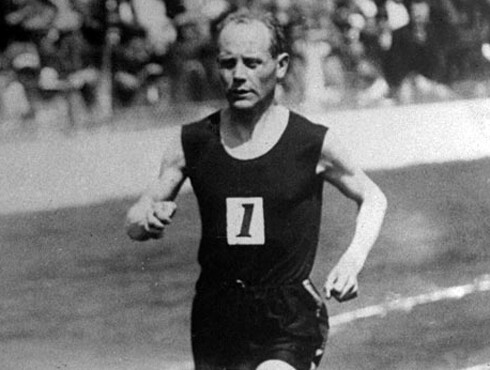
1. Paavo Nurmi (Finland)- 9 Gold medals
Paavo Nurmi, known as "The Phantom Finn," is celebrated for his extraordinary achievements in middle and long-distance running during the 1920s.
Competing in the 1920, 1924, and 1928 Olympics, Nurmi amassed an impressive 12 Olympic medals, including a record nine golds. His incredible versatility was highlighted by his ability to dominate distances ranging from the 1500m to the 20km.
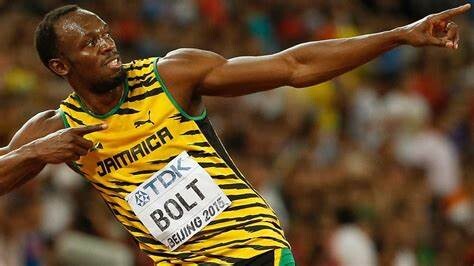
At the 1924 Paris Olympics, Nurmi won a record five gold medals, a feat that remains unmatched to this day.
His career is also marked by his remarkable achievement of setting 22 official world records across various distances.
2. Carl Lewis (U
SA)- 9 Gold medals
American sprinter Carl Lewis is another iconic figure in Olympic athletics, renowned for his dominance in both sprint events and the long jump.
Lewis’s Olympic career spanned from 1984 to 1996, during which he earned a total of 10 medals, including nine golds.
In his debut at the 1984 Los Angeles Olympics, Lewis matched the achievements of Jesse Owens by winning gold in the 100m, 200m, 4x100m relay, and long jump.
His subsequent victories across the 1988, 1992, and 1996 Games solidified his reputation as one of the greatest track and field athletes of all time.
3. Allyson Felix(USA) - 7 Gold medals
Allyson Felix stands as the most decorated female athlete in Olympic track and field history.
Her career, spanning five consecutive Olympics from 2004 to 2020, has seen her win a total of 11 medals.
Felix’s seven gold medals highlight her versatility and dominance in both the individual and relay events.
Felix’s remarkable achievements include gold medals in the 200m and 4x400m relays at the 2012 London Olympics, as well as two more golds in Rio 2016.
Her career continued to shine with additional medals in Tokyo 2020, proving her enduring excellence on the track.
4. Usain Bolt (Jamaica)- 8 Gold medals
Jamaican sprinter Usain Bolt is often hailed as the fastest man in history, and his Olympic success only cements this status.
Bolt’s career is highlighted by his three consecutive Olympic gold medals in the 100m, 200m, and 4x100m relay events at the 2008 Beijing, 2012 London, and 2016 Rio Games.
Bolt’s unprecedented triple-double achievements and world records in these events have set a benchmark in the sport.
His flair, speed, and charismatic performances have made him a global icon in athletics.
5. Shelly-Ann Fraser-Pryce (Jamaica)- 3 Gold medals
Jamaican sprinter Shelly-Ann Fraser-Pryce is another prominent name in Olympic athletics.
Known for her explosive starts and exceptional speed, Fraser-Pryce has won three gold medals in the 100m across the 2008 Beijing, 2012 London, and 2024 Paris Olympics.
Her ability to consistently perform at the highest level across four Olympics showcases her remarkable career.
These legendary athletes have not only achieved remarkable success but have also set records that continue to inspire future generations of track and field competitors.
From Paavo Nurmi’s unmatched versatility to Usain Bolt’s record-breaking sprints, their contributions to the sport have shaped the history of the Olympics and continue to captivate the world.
by Eric Munene
Login to leave a comment
Paris 2024 Olympic Games
For this historic event, the City of Light is thinking big! Visitors will be able to watch events at top sporting venues in Paris and the Paris region, as well as at emblematic monuments in the capital visited by several millions of tourists each year. The promise of exceptional moments to experience in an exceptional setting! A great way to...
more...How Long Does It Take to Run a Mile?
Knowing the average pace can help you set new goals.
The best way to find your average running speed is by tracking your mile pace.
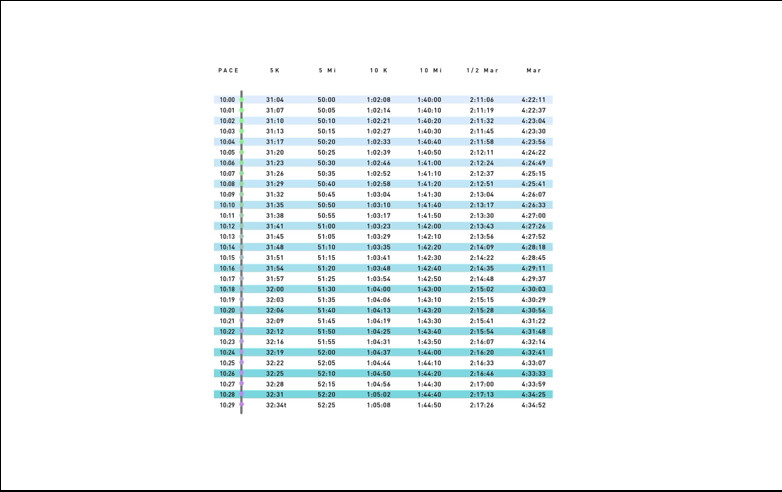
For example, say you go out for a three-mile race. You might start off running fast because of an adrenaline rush, then slow down once you realize you’re running too hard. But toward the end, when the finish is in sight you might catch a second wind and pick up speed again. This all results in different mile times.
Your average mile time, which will be the sum of all your mile times divided by the number of miles completed, may look different than each individual mile. The more you train, not only will your average mile pace drop, but each individual mile time will likely become closer in time to the others.
That’s why tracking your average mile time is a great way to monitor your progress. Plus, when you reach a new barrier—like the first time you run faster than a 10-minute mile, for example—it allows you to search out new goals in your running journey and also scope out your competition.
How long does it take to run a mile on average?
Based on real-life data from all public uploads to Strava from August 1 2022 to July 30 2023, the average mile time across the globe is 10 minutes and 25 seconds (10:25). That number adjusts based on gender: 10:02 for men and 11:17 for women. In the U.S., the average running speed is 9:54 and breaks down to a 9:32 mile pace for U.S. men and 10:37 for U.S. women.
These paces have changed since 2018 when the average global mile pace hit 9:48 and U.S. pace averaged 9:44.
Don’t fret if your current average time is a little off from those marks. Keep in mind that, while sizable, the dedicated Strava community doesn’t represent the entire running community.
What factors affect average running speed?
The following factors play a big role in every runner’s mile speed:
Gender
Age
Weather/wind
Nutrition and hydration
Injuries
Height
Weight
Terrain
The list could go on. Even what you think about or your mindset can affect how fast you run, and that’s under your control. Other factors, however—such as height and age—are things you obviously can’t change.
Also, according to recent number crunching at Runner’s World, based on data from platforms like MapMyRun, even the type of year you’re having has an effect on one’s average mile time and pace. From mid-April to mid-September—during the start and midpoint of the coronavirus pandemic—the average mile pace recorded was 8.5 percent slower compared with the same range in 2019, which the MapMyRun team attributes to a new or returning runner effect.
When it comes to age, one data analysis performed in 2010 and based on 10,000 U.S. runners who completed a 5K showed the average minutes per mile for runners of different ages. The average overall was 11:47 per mile. Men in the 16- to 19-year-old age range finished the run with an average pace of 9:34; women in the same age group finished in 12:09. The numbers gradually increased as the age groups got older.
In most cases, though, the gaps between the finishing times of the different age groups weren’t drastic. And you might not necessarily get slower with age. As Runner’s World has reported, many pro runners and average runners peak in their 30s, and even runners in their 70s can keep getting better with age.
Because of the many variables associated with running pace, it can be difficult to establish an across-the-board average running speed.
How fast should you run a race?
If you’re looking to find out what your average running pace should be to hit a specific time goal in a race, you’re in luck. Our Runner’s World Pace Charts (in both minutes per mile and kilometer) show what time a given pace will produce for six common race distances: 5K, 5 miles, 10K, 10 miles, half marathon, and marathon. As an example in the chart below, if you want to run under 1 hour and 45 minutes for a 10-mile race, you’d need to have an average pace of 10 minutes and 29 seconds per mile to accomplish your goal.
Use our charts as a reference point after you start training so you can know what average pace is necessary (and realistic) for your upcoming goal race.
How can you boost your average running speed?
If you want your average running pace to be faster, there are several steps you can take to improve, like figuring out how to breathe properly and mixing up your types of runs. You should also recognize the importance of nutrition and hydration.
Adopt a holistic approach to your training, doing regular conditioning workouts to improve your strength and flexibility in addition to running, as a stronger, mobile body can help you run faster and avoid injury.
What’s the fastest ever mile speed?
The fastest mile ever recorded was set by Hicham El Guerrouj, a Moroccan runner who ran a mile in 3:43.13 in 1999. Guerrouj was 24 years old at the time.
For women, the fastest mile ever was run by Faith Kipyegon, which she snagged just this month, with a time of 4:07.64.
If you’re looking for the fastest average running paces over the course of 26.2 miles, look no further than the world record holders in the marathon—Eliud Kipchoge (4:37.2 per mile) and Brigid Kosgei (5:06.8 per mile).
And just for fun, if Usain Bolt were to ever keep his jaw-dropping sprint going for a full mile at his peak ability, the Jamaican’s top speed in 2009 during his 9.58 world record 100-meter dash would have put him just over 27 miles per hour.
by Runner’s World
Login to leave a comment
Paris 2024: Sobbing Mozambique sprinter the latest victim of the cruelest rule in sports
PARIS — Hands on his head, tears in his eyes, Mozambique sprinter Steven Sabino walked off Stade de France’s distinctive purple track and disappeared down a tunnel.
The 18-year-old could scarcely believe that he would fly back from the Olympics without even getting to compete.
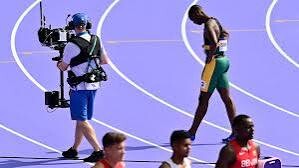
Only moments earlier, Sabino was at the start line for the second heat of the men’s 100 meters prelims, but he sprang out of the blocks before the starting gun sounded. Track officials ruled that he false started and showed him a red card indicating that he had been disqualified.
“We went into a set position and I heard a bang,” Sabino said between sobs 10 minutes later. “I don’t know where it came from. Probably the pole vault. I don’t know. I heard a bang, the kind of bang that you hear when the electronic gun goes off.”
Sabino briefly pleaded his case to track official Vadim Nigmatov, pointing to his ears to indicate what he’d heard. He said that he asked to run the race under protest, but Nigmatov and the other officials refused.

“They didn’t even hear what I had to say,” Sabino said. “I sacrificed everything for this.”
Sabino’s plight is the latest reminder that track and field’s zero-tolerance false start policy might be the cruelest, most unforgiving rule in sports. It’s more sudden than a sixth foul in the NBA Finals, more damaging than a red card at the World Cup and more common than an unsigned scorecard at one of golf's majors. It has induced tantrums from otherwise mature adults and waylaid some of the legends of the sport — even the great Usain Bolt.
Only an hour after Sabino's false start, the rule took out another runner. Great Britain's Jeremiah Azu false-started in his round 1 heat and also was disqualified without getting to run.
Azu, like Sabino, said he "heard something and just reacted." He planned to appeal his disqualification in hopes of being granted a chance to run by himself and try to qualify for the Sunday's semifinal on time.
"Right now, I'm acting as if I'm running again," he said
International track and field’s governing body went to a zero-tolerance false start policy over a decade ago out of a desire to streamline the sport and eliminate gamesmanship.
Under the old rules, sprinters or hurdlers notorious for slow reaction times would attempt to gain an edge by guessing when the starting pistol would fire, knowing the penalty would be charged to the field rather than to themselves. The multiple false starts slowed down meets and made it difficult for TV networks working within a specific time slot.
by Jeff Eisenberg
Login to leave a comment
Olympic Track and Field Stars Are Wearing Luxury Watches. Why?
IN TRACK AND FIELD, tenths (and even hundredths) of a second can make or break a race. Performance depends on extremely precise measurements and time rules all. So it makes sense that luxury watch brands would look to those athletes as natural billboards, placing their timepieces on the wrists of some of the sport's top performers.
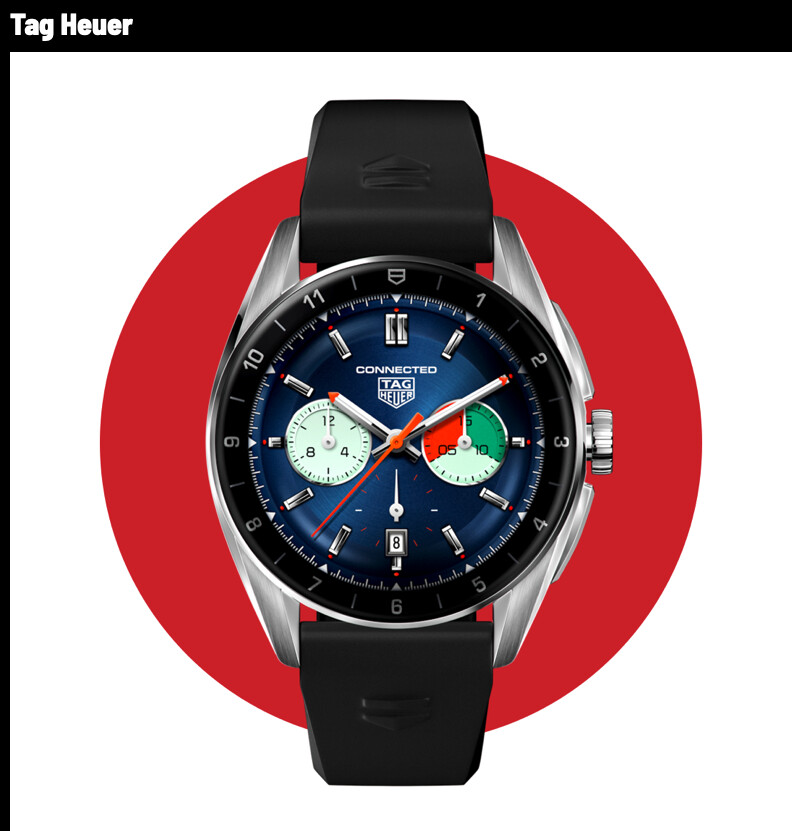
When Noah Lyles, the fastest man in the world, settled into the blocks for the 200-meter finals at the U.S. Olympic Trials in June, 4.5 million viewers tuning in via NBC and Peacock could see the glint of the sun off what appeared to be a $50,000 Omega watch.
Wearing this type of timepiece during a 19.53-second sprint is clearly a flex, since “there’s no performance reason for [these athletes] to wear luxury watches,” explains Aaron Rapf, the founder and CEO of Advantage Sports Marketing Group, a sports agency that connects brands with athletes.
Runners are no stranger to pricy performance watches (a high-end Garmin can cost upwards of $900), and luxury watch companies are increasingly aligned with elite runners to “connect their company values to the sports landscape—which is one of the last bastions of true culture,” he adds. “If you want to be in a moment where you attract millions of people’s eyeballs at one time, it’s sports.”
These race day cameos are part of a more subtle approach to marketing, says Pierre-Loïc Assayag, CEO and co-founder of Traackr, an influencer marketing software company. “In the past, luxury brands were more focused on the product and the luxury associated with that product,” he says. “Now, these companies are taking the top athletes and putting them in front of their target audience, or one close to it, to demonstrate by proximity that ‘we are the precision brand’ or ‘we are the endurance brand.”
The kind of maneuvering uses a third party—one that’s fast, flashy, and accomplishing amazing feats—to craft an image the brand wants audiences to respond to. And by choosing athletes as brand champions, companies deftly align themselves with the hallmarks of high performance: precision, prestige, innovation, exclusivity, heritage, and craftsmanship.
In the past, those buzzwords were more likely to call to mind country club-esque activities (think: tennis or horseback riding) or auto racing, where the traditional consumer has been very upper class, living a high-cost lifestyle. But as culture skews more towards sport, health, and wellness, leaning into the popularity of running opens companies up to a new class of consumers, says Jessica Quillan, a luxury fashion brand and content strategist. “Track and field seems more accessible, because even though these athletes are performing at a super elevated level, anyone can go out and run,” she explains.
By association, watches become a more accessible form of wearable luxury. You may not wear one to train or on race day like the elite, sponsored atheltes, but a sporty aesthetic can translate into your everyday life; post-run, you can still swap your COROS smartwatch for a sleek, sporty timepiece from a brand like Omega (which happens to sponsor the Diamond League, an annual series of pro track and field competitions). And though you may not be ready to buy a five-figure watch now, these companies are playing the long game; by connecting themselves with major players in sport, they’re hoping to build brand recognition and loyalty among potential future customers.
The Watch Brands Olympic Runners Are Wearing
For those looking to upgrade their Garmin—now or as a future reward for finally achieving that personal best—these are a few of the luxury watches your favorite track and field stars have been sporting.
Two-time Olympic gold medalist Sydney McLaughlin-Levrone, who will represent Team USA in Paris again after breaking her own World Record in the 400-meter hurdles in June, has been sponsored by Tag Heuer since 2021.
Tag Heuer is often considered the Cadillac of luxury watches, and McLaughlin-Levrone’s preferred watch, the Connected Calibre E4, is closest to the average runner’s GPS smartwatch: It operates on Wear OS by Google; has a 1.28-inch AMOLED display with crisp resolution; houses a heart rate sensor, barometer, and compass; and holds a 24-hour charge, including a one-hour sports session. The basic model, which includes a rubber strap, starts at $1,250.
Olympic bronze medalist Josh Kerr is a double World Champion—in the 1,500-meter and 3,000-meter—which made him a natural representative for Swiss watch brand Longines, the official partner and timekeeper of the 2022 Commonwealth Games in Birmingham. Kerr, who is not currently working with Longines, recently ran a 3:45.34 in the Bowerman Mile, a historic and prestigious race held annually at the Prefontaine Classic in Eugene, OR, to set a new world-leading time in the event and a new British record. Back in 2022, Kerr wore the-limited edition HydroConquest XXII Commonwealth Games, a sporty steel dive watch with an automatic caliber, or engine, one-directional ceramic bezel, luminescent indices and hands, and an anti-reflective coating for crystal clear readability in any situation.
In addition to their Paris 2024 partnership, Omega is the official sponsor of the Diamond League (an annual series of elite track and field competitions) and counts Noah Lyles—one of the biggest personalities in track and field—as an ambassador. Lyles, who earned a bronze medal in the 200-meter race at the 2020 Tokyo Games and has his sights on breaking Usain Bolt’s records in the 100- and 200-meter races, wears Omega’s iconic Speedmaster Moonphase.
This style was introduced in the 1980s, but the latest model—an oversized, steel-on-steel timepiece—was the first to earn a Master Chronometer certification thanks to a self-winding engine designed to withstand temperature fluctuations, water immersion, and electromagnetic frequencies. The timepiece can also hold up to the shock that comes with covering 100 meters in less than 10 seconds (when it's on Lyles's wrist, at least).
Sprinter Dina Asher-Smith is the fastest British woman on record, with two Olympic bronze medals from the 4 x 100-meter relay to her name. She’s also no stranger to luxury partnerships, having previously modeled for Louis Vuitton, Valentino, and Off-White, and has been working with Hublot since 2018. Asher-Smith has promoted a variation on Hublot’s flagship model, the Big Bang One Click, which starts at $14,200.
Its smaller face was designed for slimmer wrists, and uses the brand’s patented “One Click” fastening system so wearers can swap out the straps for other colors or materials. The sporty, semi-skeletonized hands balance out flashiness of the diamonds on the bezel, and a self-winding caliber packs plenty of power into the compact timepiece.
Ahead of what she says will be her final Olympic Games, Jamaican sprinter Shelly-Ann Fraser-Pryce—the most decorated athlete in 100-meter history—announced a partnership with Richard Mille. Fraser-Pryce wears the RM 07-04 Automatic Sport, the first women’s sports watch from the McLaren of watch brands, which retails at $185,000 (it’s the same watch Nafi Thiam, a double Olympic champion from Belgium, wore while setting a new pentathlon world record in 2023). The skeletonized aesthetic is housed in a compact case with rigid finishings for shock-resistance, and the button on the side allows the wearer to switch between winding, neutral, and time setting modes for the crown. While it would be nearly impossible to read during a race, at 36 grams it’s lighter than most standard running watches.
by Men’s Health
Login to leave a comment
American sprint legend reveals Olympic heartbreak from 1992 Barcelona food poisoning
Michael Johnson recalls a disappointing setback due to food poisoning during the 1992 Olympics, affecting his performance in the 200-meters
Before Usain Bolt rose to prominence, the world of track and field was dominated by Michael Johnson, a sprinter who dazzled the athletics scene with his speed and charisma.
Johnson, who captured four Olympic gold medals across three different Games, recently spoke about what he considers the most disappointing moment in his illustrious career.
The incident in question traces back to the 1992 Barcelona Olympics, a time when Johnson was at the pinnacle of his form.
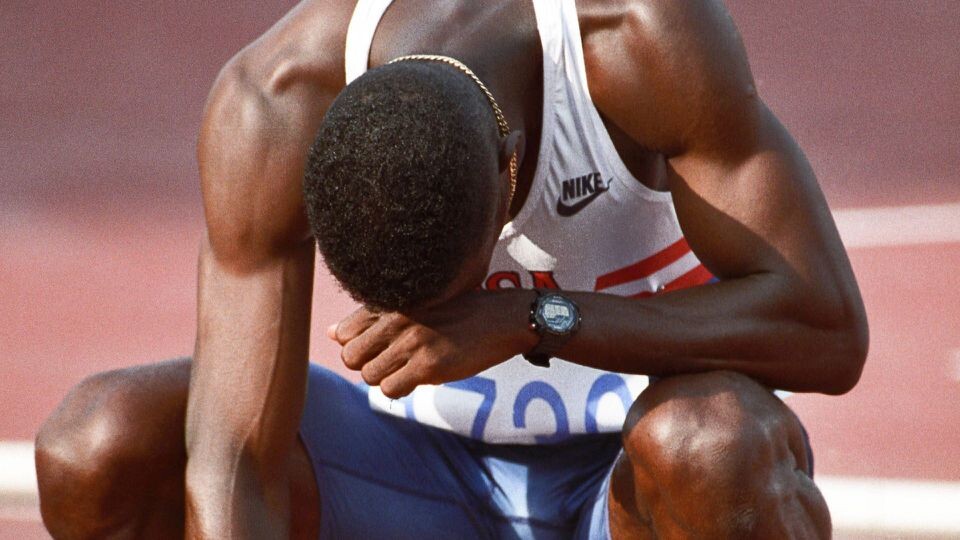
Fresh off a gold medal win at the 1991 World Championship in Tokyo, Johnson was the favorite to clinch the 200-meter race at the upcoming Olympics.
However, an unforeseen bout of food poisoning just days before his first race jeopardized his chances.
“I had gotten food poisoning. So I was world champion, ranked number one in the world for two years, undefeated, and you know, a huge favorite to win the 200 meters at the Olympics,” Johnson recalled on High Performance podcast.

His condition arose shortly after a near world-record performance at the Olympic trials, where he had felt in the best shape of his life.
“It was about or so before I was competing," Johnson explained.
During this period, athletes typically reduce the intensity of their training to fine-tune their performance, a phase known as tapering.
"You’re in a taper mode where you’re basically just working on starts and very technical things,” he added.
When the Olympic races began, Johnson thought he had recovered, feeling fine at the starting blocks.
However, the reality of his condition became apparent as soon as the race started.
“Usually in a first round, I can just sort of run the first 100 meters of that 200 meters and I'm just kind of out," he said.
But this time, he found himself struggling unexpectedly, feeling as if he were "running in someone else’s body."
Despite winning his initial heat, the effort took a severe toll on him.
“I’m extremely weak and it takes everything. I win that race but just barely, and it took everything in me, and I knew immediately something's wrong,” he said.
His performance deteriorated further in the subsequent rounds and he ultimately failed to make the final.
Reflecting on the ordeal, Johnson described the experience as both disappointing and embarrassing.
“I knew of athletes who were world record holders, world champions that had the butt. That’s the one thing missing at that point," he lamented.
The Olympic gold in the 200-meters, which many had anticipated would be a mere formality for Johnson, remained elusive.
Johnson's resilience, however, is as legendary as his speed as he returned to win golds in later Olympics, including a memorable double victory in the 200 and 400 meters at the 1996 Atlanta Games.
Yet, the sting of Barcelona remains a significant chapter in his career.
Looking back, Johnson appreciates the rarity of Olympic opportunities.
“One thing you know as an Olympic athlete, because the Olympics is every four years, not every year, you may never get back there. Most people make it to one Olympics. I was fortunate to go to three, but that’s rare,” he reflected.
Through his trials and triumphs Johnson's legacy as a sprinter continues to inspire athletes around the world.
His story is a poignant reminder of how even the greatest champions can face hurdles that test their spirit and resolve.
by Festus Chuma
Login to leave a comment
Usain Bolt named ninth-greatest athlete of the 21st century
On Thursday, ESPN dropped a list ranking the 100 best athletes in the world since the year 2000. 70,000 ESPN contributors voted based on performances since 2000, assembling the list of the greatest athletes of the 21st century–with track and field’s very own Usain Bolt taking the ninth spot.
It’s sometimes hard to believe that the worlds of the “Big Four” leagues (MLB, NBA, NFL and NHL), tennis, soccer, golf, and the Olympics all exist in the same universe. How can you even compare the accomplishments of individual athletes to those of athletes in a team sport?
The Jamaican sprinter has a very impressive resume, collecting nine Olympic gold medals over his four Games (he had to return one due to a teammate’s doping violation), and still holds three world records: the 100m, 200m and 4x100m relay. Bolt’s 100m record has stood since 2009, when he ran 9.58 seconds to break the record for his third time, deeming him the world’s fastest man.
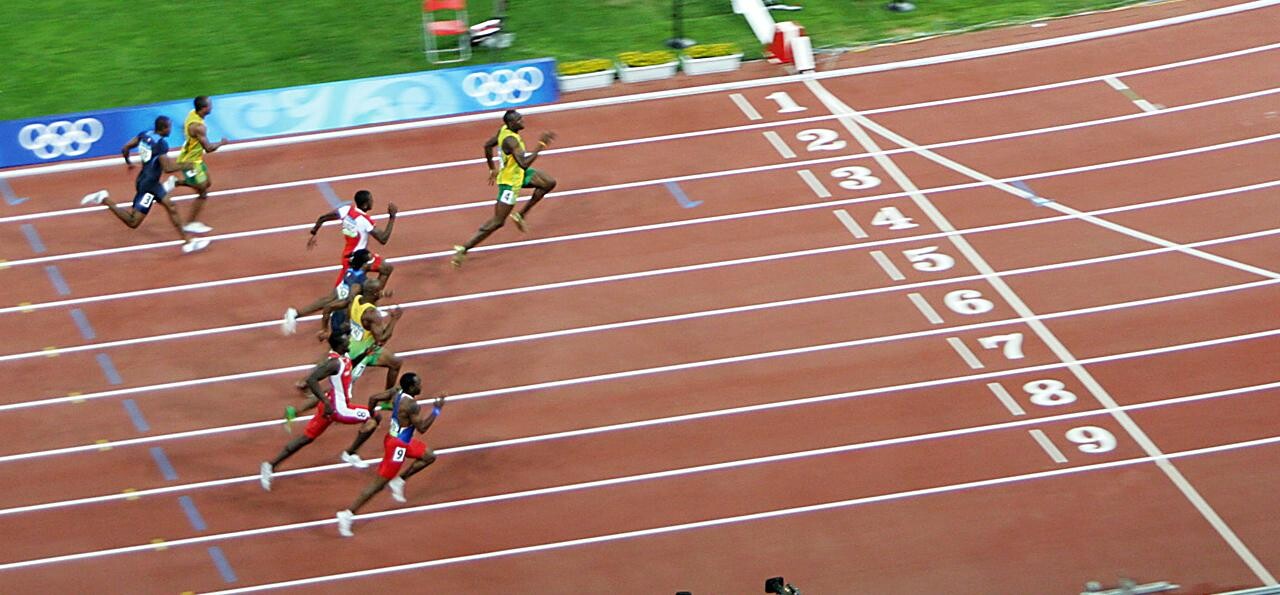
At his last Games in Rio 2016, Bolt achieved the triple-triple–winning three sprint golds at three consecutive Olympics. Although he retired in 2018, his monumental achievements will leave an extraordinary legacy in the track world.
Bolt is one of three Olympians in the ESPN top 10, bettered by only swimmer Michael Phelps, who took the top spot, and gymnast Simone Biles, in seventh.
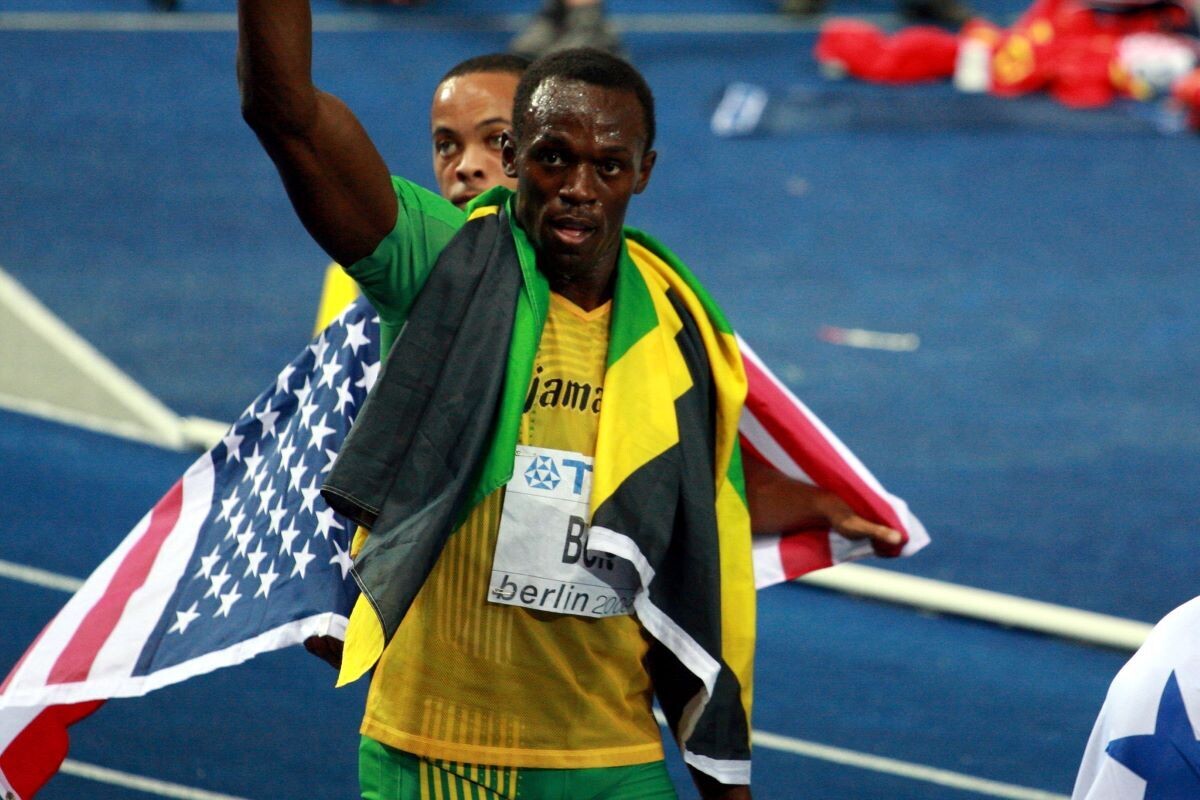
The representation of athletics in ESPN’s top 100 doesn’t end there: sprinters Allyson Felix of the U.S. and Shelly-Ann Fraser-Pryce of Jamaica claim the 63rd and 77th spots, respectively. Felix is a five-time Olympian for Team USA, with seven Olympic titles to her name, plus three silvers and one bronze. Fraser-Pryce is a three-time Olympic champion and eight-time Olympic medallist. At 37, the Jamaican hasn’t called it quits yet–she has qualified for her fifth and final Games later this summer in Paris.
by Cameron Ormond
Login to leave a comment
'That is the only record I regret' - Asafa Powell on the 100m race he set a World Record in accidentally
Powell set a then100m World Record of 9.74 in 2007 despite intentionally slowing down towards the end of the race.
Jamaican sprint legend Asafa Powell, renowned for his blistering speed and dominance in the 100 meters, has recently opened up about a race he believes could have resulted in an even faster time if he had given it his all.
The race in question is the 2007 Rieti meeting in Italy, where Powell set a then-world record of 9.74 seconds. Despite his remarkable achievement, Powell reflects on what might have been had he not intentionally slowed down towards the end.

In a recent guest appearance on Justin Gatlin's Ready Set Go podcast, Powell shared his thoughts on the race and the strategy that led to his impressive but bittersweet performance.
The Rieti race took place shortly after the Osaka World Championships in 2007, and to this day, Powell holds the record for the most sub-10 second 100m races in history.
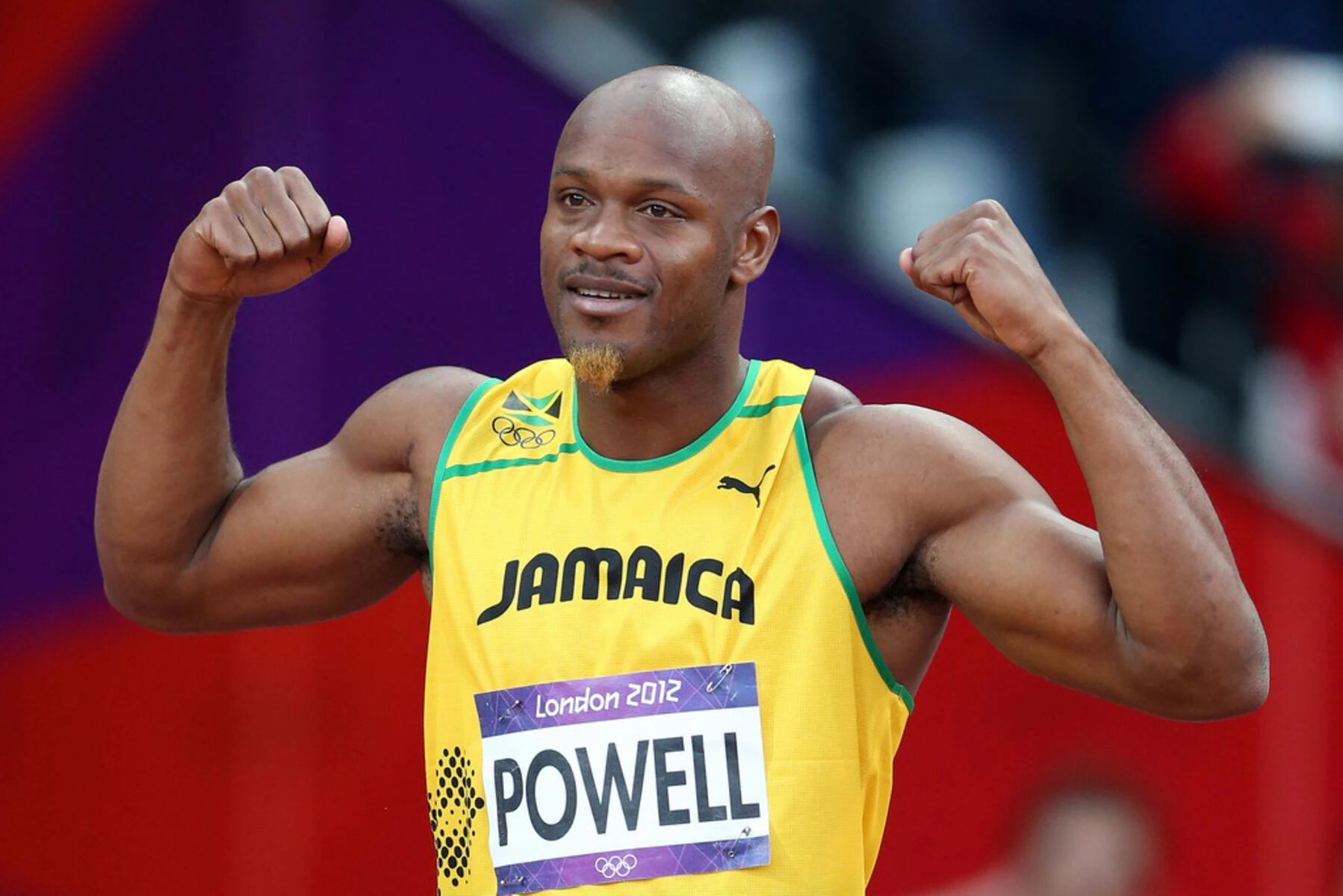
He previously held the world record in the event until fellow Jamaican Usain Bolt shattered it in 2008 with a 9.68-second run at the Beijing Olympics, followed by an astounding 9.58 performance in 2009 in Berlin, Germany.
Reflecting on his performance in Rieti, Powell explained his strategy and the circumstances that led to his record-setting but somewhat unfulfilled run.
"That is the only record I regret," Powell admitted. "This was after the world championships in Japan. We went to Rieti and in the warm-up, the coach was like, ‘make sure you get the 30 meters first.’"
Powell elaborated on the instructions from his coach, which focused on perfecting his drive phase and transition.
"When he makes a command, I am like, ‘I am going to do it,’ so the coach was like, ‘we are working on your drive phase and transition. When you get to 70 meters, just back off the gas,’" he recalled.
True to his coach's directive, Powell executed the plan flawlessly.
"I went out there and did just that, and when I crossed the finish line, I saw 9.74 and I was waiting for the clock to change or something. 9.74? I see everyone celebrating and I am like, I cannot even celebrate. This is just the heat. Am I going to go for the victory lap? I am just getting ready for the final. What am I going to do?" Powell recounted.
"I didn't even know what to do at that time. I see everyone celebrating. My manager was the first to get to the track and I am like, celebration? I need to get back to the warm-up. It was unexpected. I did not feel like I was running a world record at the time. I did not know what to do, but I think I ran that race flawlessly," he said.
Powell's reflection on the race leaves fans and athletes alike wondering what could have been. "I can’t even think about what I would have ran if I had kept on just going to the finish line. I would have ran 9.6 easily," he concluded.
Asafa Powell's legacy in the world of sprinting is undeniable, and his reflections on the Rieti race offer a glimpse into the mind of a true champion who continually strives for perfection.
Despite the "what ifs" that linger, Powell's accomplishments remain a testament to his remarkable talent and dedication to the sport.
by Mark Kinyanjui
Login to leave a comment
Noah Lyles says his goal is to win four gold medals in Paris
The world 100m champion appeared on The Tonight Show with Jimmy Fallon and said he wants to become the first male sprinter to win four Olympic gold medals.
The world 100m champion, Noah Lyles, appeared on The Tonight Show with Jimmy Fallon on Monday night to discuss his role in the upcoming Netflix documentary series “Sprint” and his goals for the Paris Olympics. Lyles confidently stated his ambition to achieve something no male track and field athlete has done before: win four gold medals at a single Olympics.
“Everyone knows Usain Bolt; I want to be faster and more decorated than Bolt,” Lyles told Jimmy Fallon. “He’s done three. I want four, that’s the Mount Rushmore–now you’re the greatest of the great.”
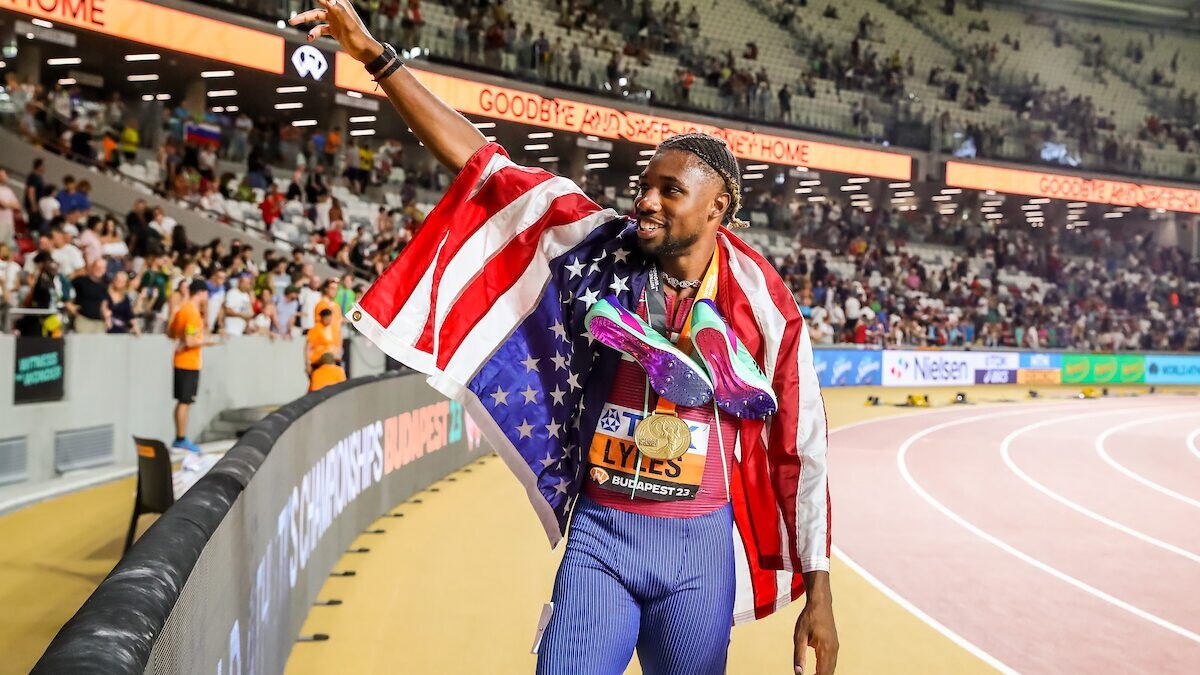
At the 2023 World Championships in Budapest, Lyles became the first athlete to win the sprint double (100m and 200m) at a major championship since Bolt did so at Rio 2016. He added another gold medal in the men’s 4x100m, where Team USA redeemed themselves after finishing second to Canada in 2022 on home soil.
For Lyles to win four gold in Paris, he would need to win the 100m and 200m, 4x100m relay and 4x400m relay.
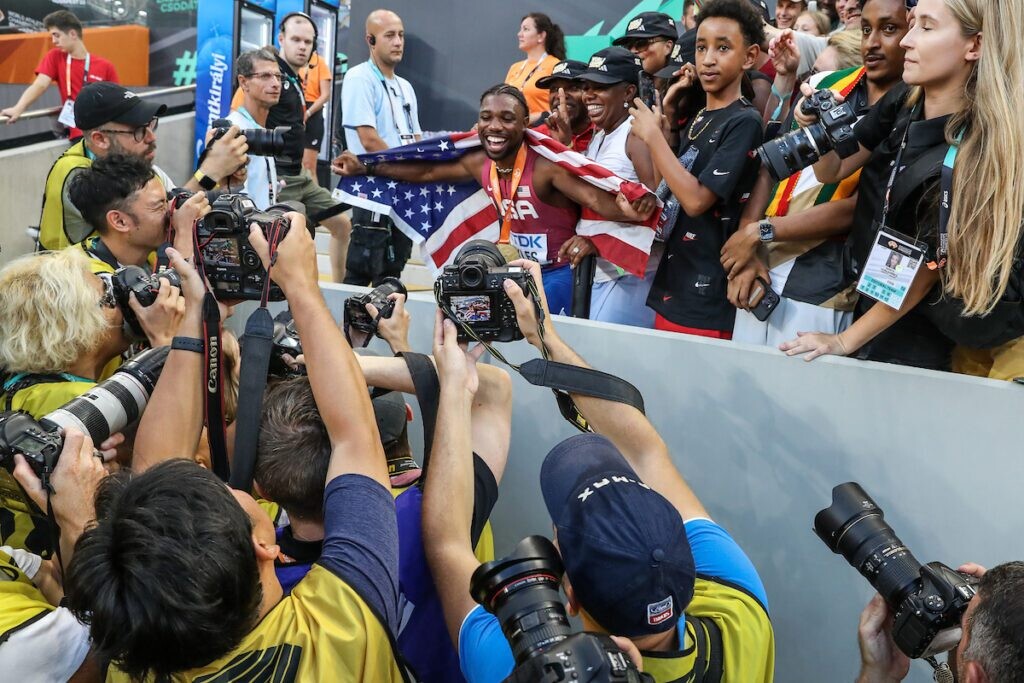
Only two athletes have won four medals at one Olympic Games: U.S. sprint icon Florence Griffith-Joyner won three golds and one silver medal (in the 4x400m) at Seoul in 1988. Fanny Blankers-Koen of The Netherlands is the only athlete to win four golds–at the 1948 Olympics in London, where she won the 100m, 200m, 4x100m relay, and 80m hurdles.
When Fallon asked Lyles why he wanted to put extra pressure on himself for Paris, Lyles said his goal is to win Olympic medals and break world records. “It’s been a long time since someone has done it, but growing up, I’ve always felt like that title belongs to me.” Bolt’s world records of 9.58 in the 100m, and 19.19 in the 200m have been untouched for the past 15 years.
Despite being the world champion in the 100m and 200m, Lyles’s first test will come at the USATF Olympic Trials from July 21-30 in Eugene, Ore., where he will aim to make his second Olympic team. The top three finishers in each event at trials will secure a spot on the U.S. Olympic team, provided they have met the Olympic standard or are in the World Athletics rankings quota.
by Marley Dickinson
Login to leave a comment
Paris 2024 Olympic Games
For this historic event, the City of Light is thinking big! Visitors will be able to watch events at top sporting venues in Paris and the Paris region, as well as at emblematic monuments in the capital visited by several millions of tourists each year. The promise of exceptional moments to experience in an exceptional setting! A great way to...
more...U.S. sprinter Fred Kerley calls out track meet for bad starting blocks
This was supposed to be Kerley's first 100m since he stated he'd break Usain Bolt's world record the next time he raced the distance.
Former world 100m champion Fred Kerley was slated to be a headliner at Sunday’s USATF New York City Grand Prix in the men’s 100m. However, Kerley did not end up racing after he slipped in the starting blocks twice. Despite these mishaps, he chose not to race.
In a post-race interview with Citius Mag, Kerley said that one of his starting block pads was broken, and he had requested new blocks. “I slipped the first time, and then I slipped the second time. I wasn’t about to let it happen a third time,” Kerley said.
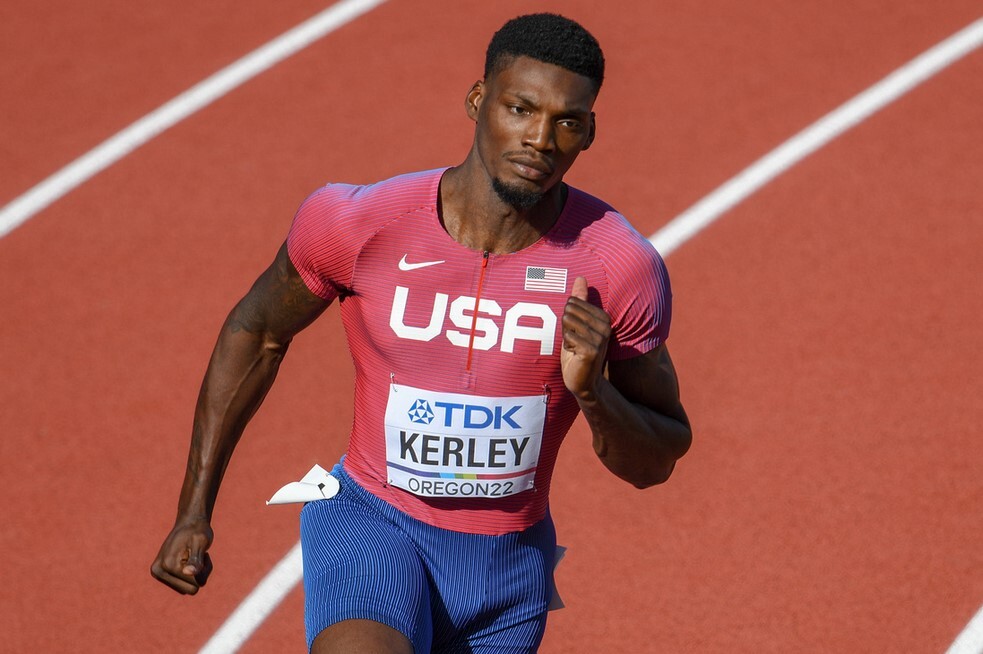
He took to Twitter after the race to criticize the World Athletics Continental Tour meet for using “high school level blocks.”
The 100m at the NYC Grand Prix ended up being won by Nigeria’s Udodi Onwuzurike, with a 10.24 second clocking into a -0.7 m/s headwind.
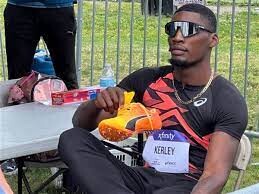
This race was supposed to be Kerley’s first 100m since he publicly stated he’d break Usain Bolt’s world record the next time he raced the distance. Kerley has not competed in the 100m since the Shanghai Diamond League on April 27 and has not yet broken the 10-second mark this season.
Kerley has a personal best of 9.76 seconds from the 2022 World Championships, which he won. He is also the reigning Olympic silver medalist in the 100 meters.
Before the race, Kerley drew attention in the warm-up area at Icahn Stadium, where he was spotted wearing Puma spikes (instead of his sponsor, Asics). It came out after the race that Kerley is now without a sponsor, as Asics announced that they had mutually parted ways with him after reaching a multi-year deal just last year. There has been no official statement on why the sponsorship ended, but Kerley was rumored to be frustrated with the custom “world champion” spikes the brand made for him.
The 29-year-old plans to compete in the 100m and 200m at the U.S. Olympic Trials in two weeks.
by Marley Dickinson
Login to leave a comment
Netflix’s track and field series, Sprint, to be released on July 2
We are 50 days from the start of the 2024 Paris Olympics, and if you aren’t excited about it yet, maybe this news will help. On Wednesday, Box To Box Films announced that their documentary series Sprint, focused on following the world’s top 100m and 200m sprinters, will be coming to Netflix on July 2.
Sprint will follow the journey of several elite sprinters, including world champions Noah Lyles, Sha’Carri Richardson, Fred Kerley and Dina Asher-Smith, providing a behind-the-scenes glimpse into their world of track and field.
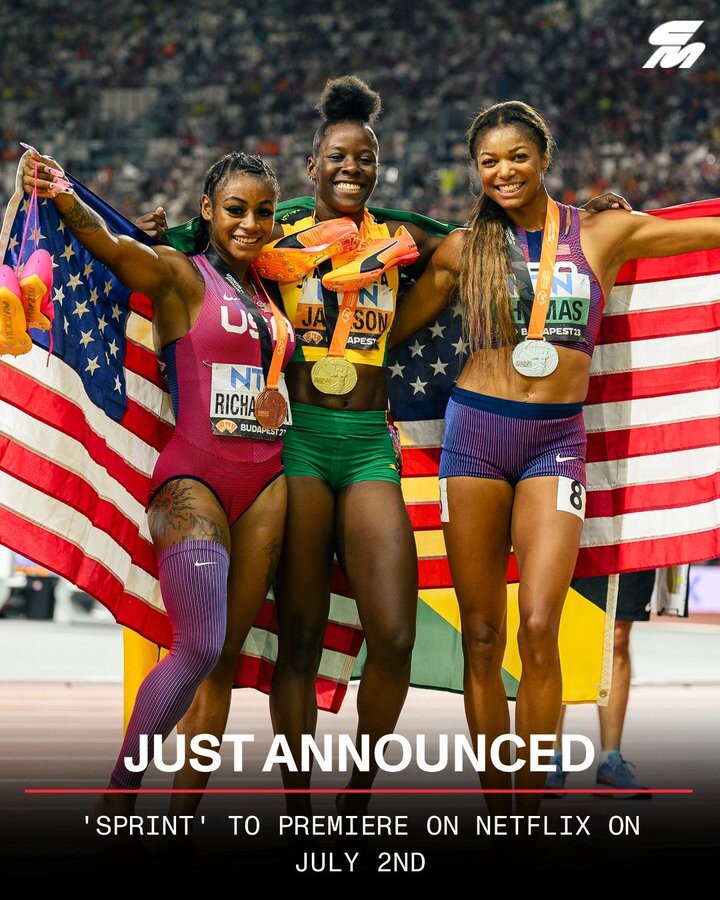
The series takes place over the summer 2023 season and captures the thrilling moments from the Diamond League and Continental Tour, with the final episodes taking place at the 2023 World Championships in Budapest, where Lyles won double gold in the 100m and 200m–the first athlete to do so at a world championship since Jamaica’s Usain Bolt in 2015.
Despite being the only track and field athlete to win six sprint medals at the last two Olympic Games, Canada’s Andre De Grasse is not one of the athletes featured in the series.
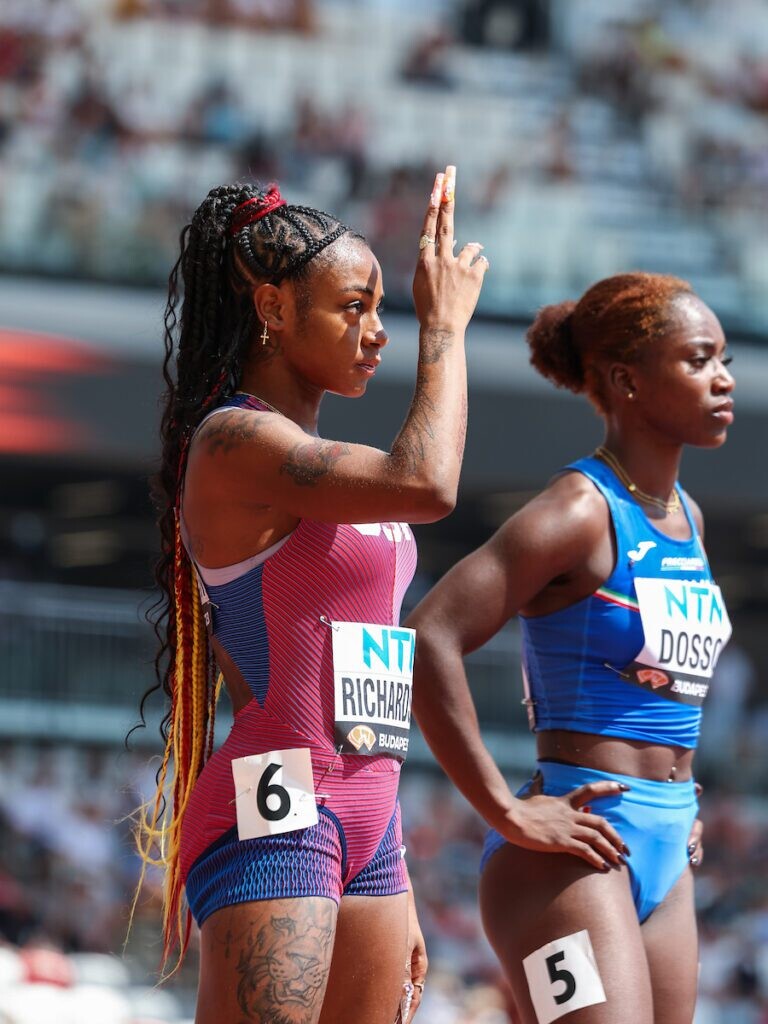
Box To Box Films is the same company behind the Formula One racing series Drive To Survive, the golf series Full Swing and the pro tennis series Break Point.
These series have resonated with existing fans and attracted new audiences to the respective sports. World Athletics hopes Sprint will have the same effect in the lead-up to the Paris Olympics.
If you are a Netflix account holder, you can search for Sprint now on the app, set a reminder and add it to your watch list. This is a series we will most definitely be bingeing, come July 2.
by Marley Dickinson
Login to leave a comment
Kenny Bednarek, Letsile Tebogo, and other top track athletes line up for the 200M sprint at the Prefontaine Classic
The 200-meter division is the subject of much discussion as the Olympic season develops further. While many athletes have talked about breaking the world record set by Usain Bolt, Kenny Bednarek is the one who recorded the fastest 200-meter time in 2024. However, he still has a long way to go and will be facing athletes of equal caliber at the Prefontaine Classic 2024.
Track Gazette took to X to post the list of athletes who will compete in the annual 200-meter sprint at the Prefontaine Classic 2024. It begins with Bednarek, who just won the Doha Diamond League, setting a world lead, a meet record, and a personal best. His time of 19.67 seconds has since become the standard, but the track world moves fast, and other athletes will soon be closing the gap.
Erriyon Knighton, a 20-year-old American prodigy, is also scheduled to compete at the tournament while being heavily favored for a spot in the Olympics. Furthermore, the list includes Botswanan sprinter Letsile Tebogo, who broke the 300-meter world record earlier this season. The 20-year-old has been confident since his ASA Grand Prix Tour and has not underperformed in any event.
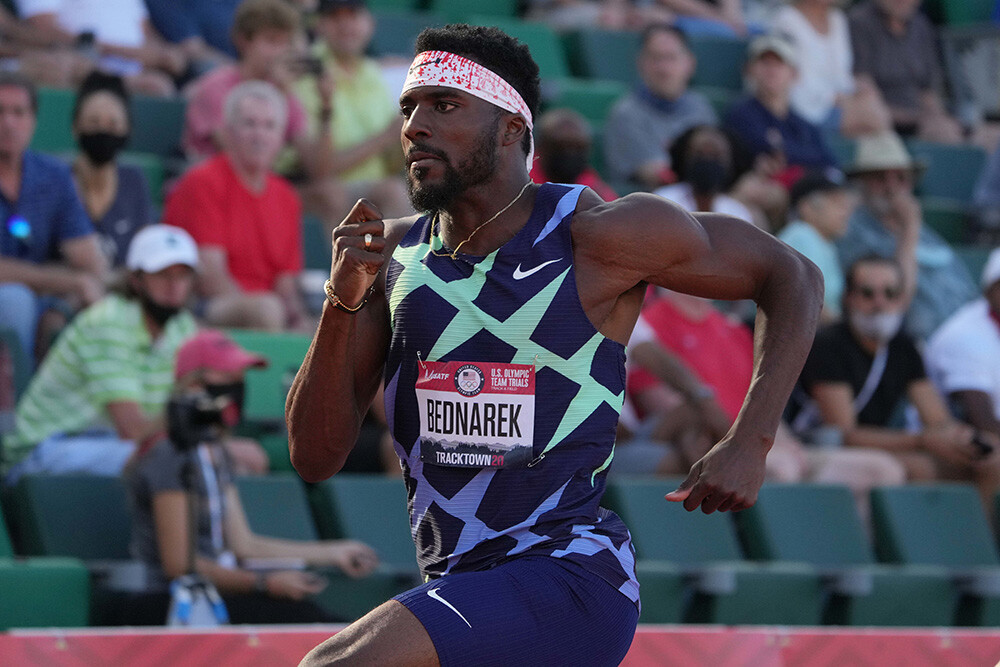
Even at the World Relays, Tebogo had the fastest time among all of the other teams in the finals and won the gold medal, making Botswana and the entire continent of Africa proud.
Meanwhile, Tebogo’s rival Courtney Lindsey will also compete in the Prefontaine Classic, as he was the first person to defeat the 20-year-old in the 200 meters at the Kip Keino Classic. On the other hand, Aaron Brown, a Canadian sprint standout, has registered for the tournament and hopes to have a successful 200-meter seasonal debut.
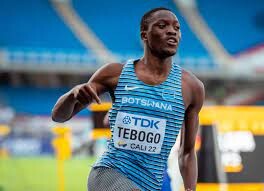
Another standout name on the list is Kyree King who ran an outstanding 20.21 with a +1.7 tailwind on the Qatari circuit and might pose a major threat to other runners, including his fellow Team USA athletes. In addition, Liberian sprinter Joseph Fahnbulleh, who delivered many inspiring words at the World Relays after securing his country’s ticket to the Paris Olympics, has also registered for the 200-meter sprint alongside Jeremiah Curry of the United States and Alexander Ogando of the Dominican Republic.
The event’s lineup of athletes with diverse talents has naturally gotten fans excited. The Prefontaine Classic has never disappointed and from the looks of it, 2024 will definitely take the legacy forward.
At the same time, fans can have varying expectations, and many took to X to make their feelings known.
American athletes Bednarek and Knighton will undoubtedly give their all, but for this fan, the Botswanan athlete appears to be the clear winner.
This season, the entire grid has demonstrated their prowess and this user believes there will be a new world lead.
by Rahul Goutam Hoom
Login to leave a comment
Prefontaine Classic
The Pre Classic, part of the Diamond League series of international meets featuring Olympic-level athletes, is scheduled to be held at the new Hayward Field in Eugene. The Prefontaine Classicis the longest-running outdoor invitational track & field meet in America and is part of the elite Wanda Diamond League of meets held worldwide annually. The Pre Classic’s results score has...
more...Usain Bolt eyes a comeback
The greatest sprinter of all time is set to make a brief return, after Paris Saint Germain superstar Kylian Mbappe accepted the challenge of facing the eight-time Olympic champion in a 100m race.
Usain Bolt might well lace up his spikes again, writes Vlad Andrejevic. Bolt, the greatest sprinter of all time, is set to make a brief comeback, after Paris Saint Germain superstar Kylian Mbappe accepted the challenge of facing eight-time Olympic champion Bolt in a 100m race, though he does not fancy his chances against the Jamaican icon.
Bolt, who is an avid football fan and participates in numerous charity football events, recently spoke about his admiration of the 25-year-old forward, admitting he was “inspired” by the French international and suggested that Mbappe should face him in a charity race.
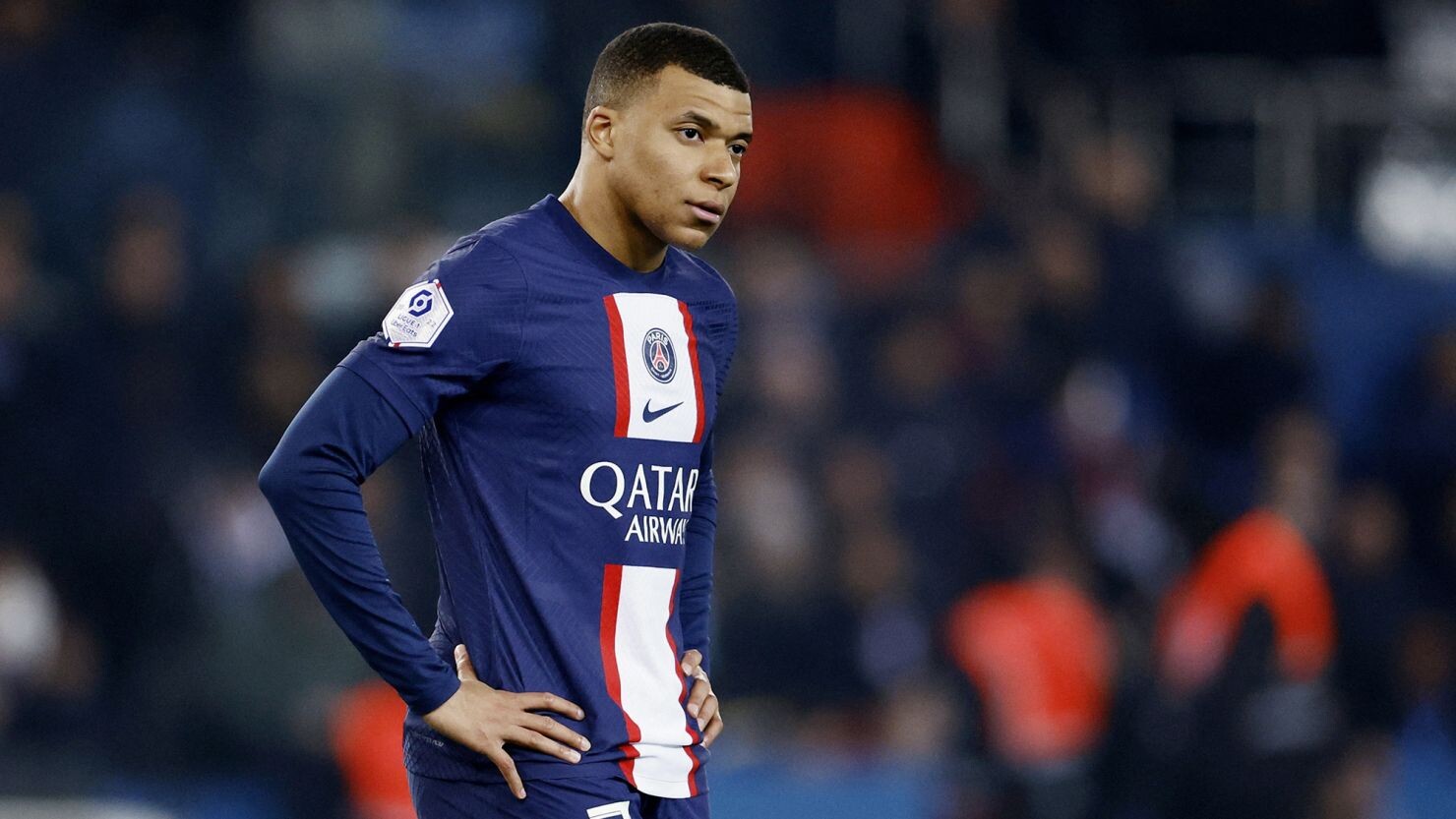
The World Cup winner responded warmly to Bolt’s comments at a recent promotional event organized by sponsors Nike and his ‘Inspired by KM’ foundation, offering fans the prospect of a tantalizing crossover event.
“It would be fun, why not one day if we both have the time? I don’t expect much from the result,” said Mbappe when asked about the potential matchup. “He inspired everyone, and I think everyone has woken up late in the night to watch one of Bolt’s races. I can say that it’s reciprocal and that I started to admire him first.”
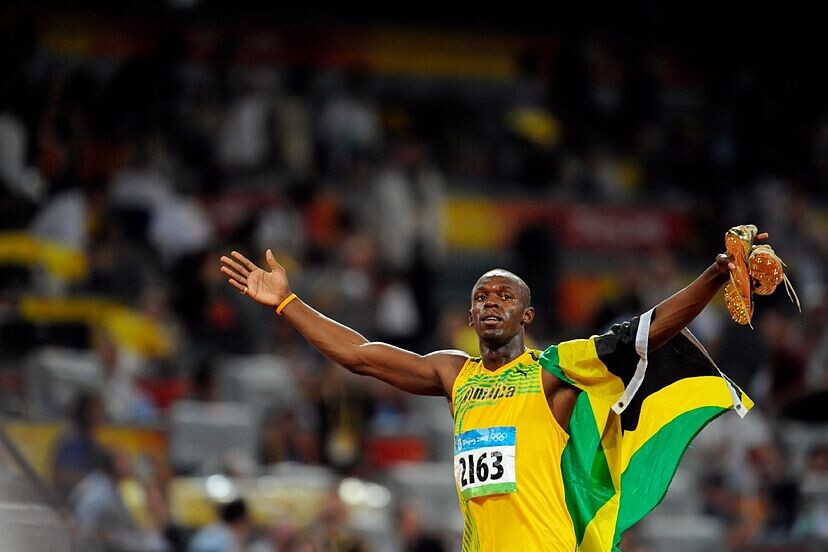
Despite retiring in 2017, Bolt remains the world record holder of the 100m, clocking a remarkable 9.58s in Berlin in 2009. He has since moved on from professional athletics and taken up a multitude of roles throughout sport, most recently becoming T20 World Cup 2024 Ambassador, however he would be willing to return to the track for this event.
His opponent, who is 12 years his junior, could prove to be a formidable opponent as he is widely regarded as one of the fastest players in the game. The World Cup winner, who is set to leave Paris this summer after 7 years at the club, has shown his devastating pace and ability at the highest level since he burst onto the scene in 2016, making him the most valuable player in world football.
With Olympic fever starting to pick up as the event this summer draws nearer, and with Mbappe possibly representing his country at the games, a charity race between the two sporting greats would garner a huge crowd.
by The Voice
Login to leave a comment
American youngster Quincy Wilson reacts after beating Usain Bolt's 400m record
Quincy Wilson has reacted after beating Usain Bolt's and Kirani James' records in the 400m.
American youngster Quincy Wilson has reacted after his scintillating run in the 400m at the Bullis Track sophomore where he was opening his outdoor season.
Wilson stopped the clock in an impressive Personal Best time of 45.19 to cross the finish line first. The time he clocked placed him in the books of records as a 16-year-old where he surpassed the times the fastest man in the world Usain Bolt ran when he was the same age.
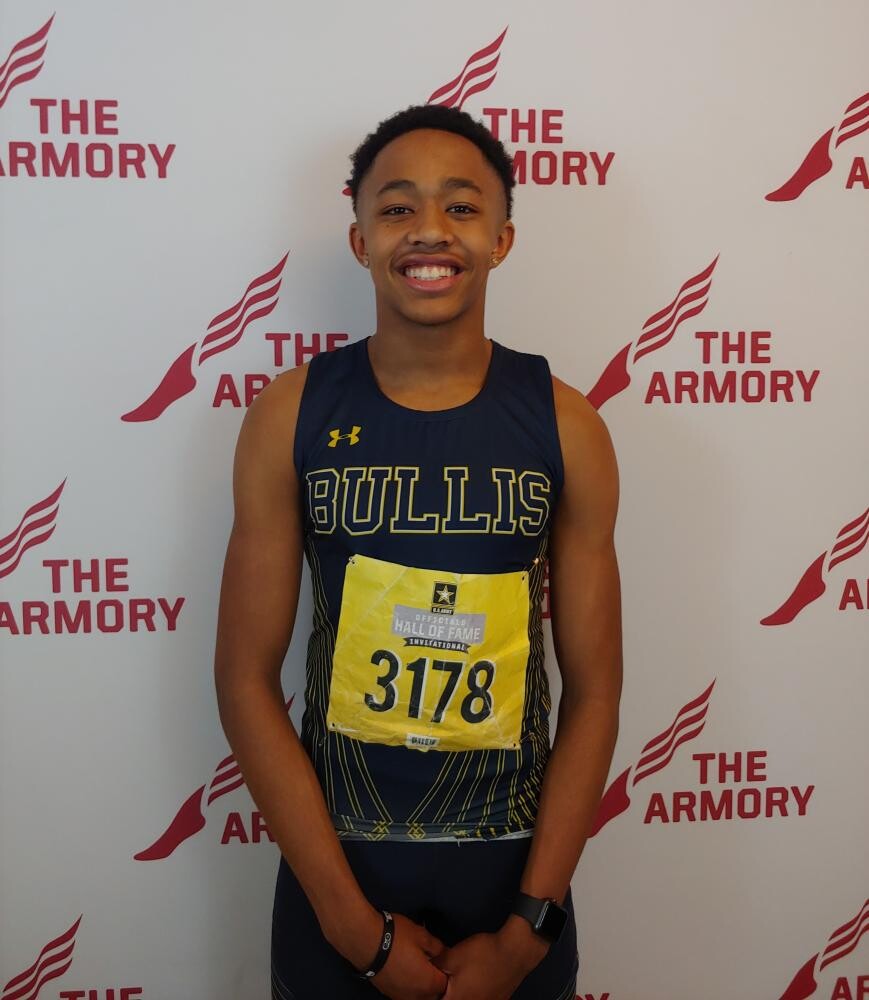
Wilson also beat former Olympic champion Kirani James’ record of the times he would run when he was the same age. At 16, Bolt’s Personal Best time was 45.35 while James had a Personal Best time of 45.24.
“I feel great…I feel like I executed the race pretty well but there are a lot of things that I have to work on. Coming up from one week of training since the indoor, I feel pretty good.
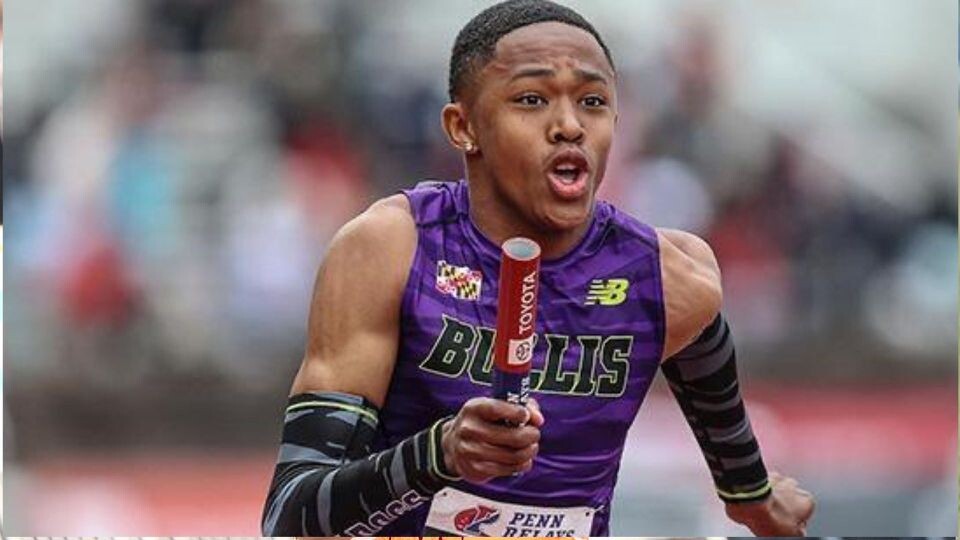
“It’s feeling great coming out here and trying to stay healthy until the end of the season because it’s a long season. I just want to stay healthy and be able to keep getting ready for my craft and things like that and just keep working hard towards the goal,” Wilson said.
He added that this season, he will be targeting the Olympic Games in Paris, France where he intends to make an impact.
“I also want to be able to just run a great race and remain thankful for what I’m able to do. I’ve been watching all those races, studying them, and breaking them down from 50m to 100m…I learn how to execute my race from those videos.
“I don’t really know where I’ll be racing next and I just want to go week by week learning different things and just executing so you never know. I just want to accept the challenge and go with it,” he added.
by Abigael Wuafula
Login to leave a comment
Why Noah Lyles prefers having gold medals to a world record
Noah Lyles has opened up on why he prefers winning many gold medals as compared to breaking world records.
Triple World champion Noah Lyles has admitted that he prefers having gold medals to world records despite being vocal about going for Usain Bolt’s 200m world record.
Lyles noted that having medals is a lifetime thing and they will be your forever unless one gets banned but world records usually come and go.
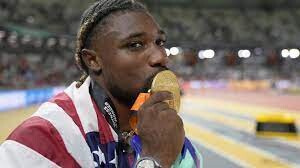
The two-time World champion explained that times are always shattered from time to time and they are not something he would prefer.
“I would rather have a gold medal because medals last forever as long as you don’t get banned but records will always be broken,” Lyles told the Letsrun.com podcast.
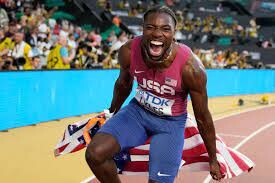
Follow the Pulse Sports X (Twitter) handle for more news.
Meanwhile, Lyles’ coach Lance Brauman also noted that he prefers gold medals to world records and explained that he also hopes Lyles thinks the same way.
“Once you’re an Olympic champion, you’re always an Olympic champion. World records are great, but it’s not what this sport should be about. The sport is a competition, the sport’s running against the other guys in the race,” said Brauman.
Concerning breaking the world record, Brauman believes that his 60m exploits in the indoor season open up the possibility of breaking Usain Bolt’s 19.19 world record in the 200m.
“Maybe he can run the world record, 19.15, 19.12, somewhere in that range, based on the same math, if I’m using it correctly.
“Will he do that? That’s hard to say. When you start talking that fast, there’s a lot of intangibles that you can’t control.
“Weather, time of year, environment, how tired are you from running three races before you get to that, which is five when you get to the final one,” the tactician noted.
by Abigael Wuafula
Login to leave a comment
The possibility is there- Usain Bolt discusses chances of Noah Lyles breaking his 200m world record
The world's fastest man Usain Bolt has opened up on the possibility of Noah Lyles breaking the 200m world record this season.
The world’s fastest man Usain Bolt, has for the first time opened up about the possibility of three-time World champion Noah Lyles breaking his 200m world record.
Bolt set the 200m world record of 19.19 at the 2009 World Championships in Berlin, Germany where he also set the 100m world record of 9.58, with both records yet to be broken.
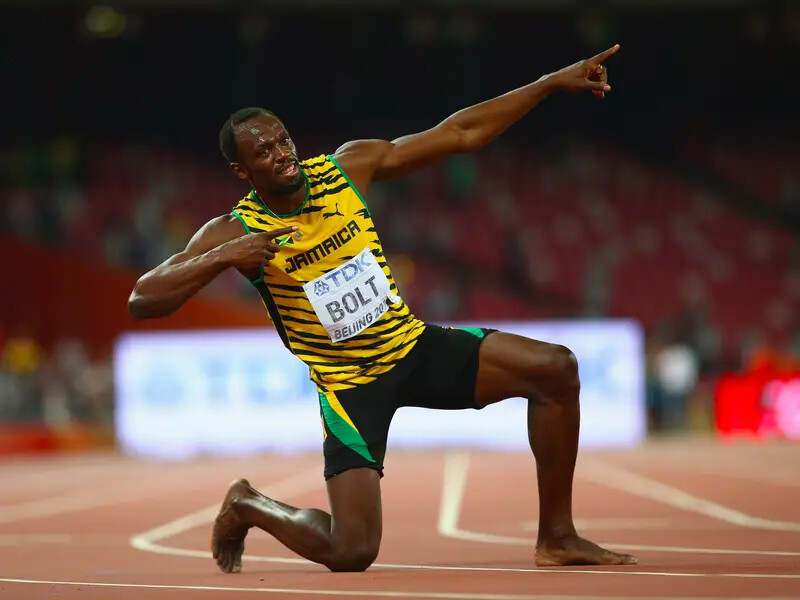
However, Lyles, the third-fastest man over the half-lap race wants to shatter the world record and make history this year. Lyles has become very vocal about going after the record and Bolt believes that the American is capable of breaking the record if he works on some things.
In an interview, the multiple Olympic champion admitted that there is a lot of competition in the 200m with the rise of other sprinters like wunderkind Letsile Tebogo and Erriyon Knighton, who are also forces to reckon with.
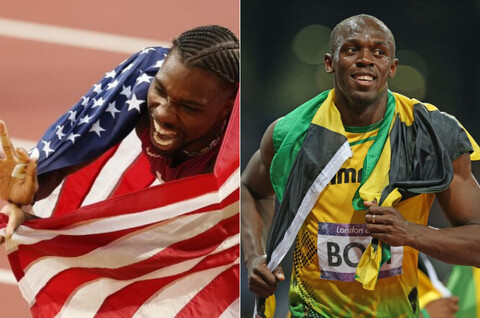
However, he admitted that it takes a lot of work to break a world record and if Lyles has to do it, he needs to put in more effort.
“I think the guys are really doing well and it’s intense…it’s not going to be easy because I think Noah feels like it was easy running two events but it wasn’t.
“I’ve said it before and I’m going to repeat that it’s never easy running back-to-back events and then going to break a world record because the body runs out of energy.
“I think the possibility is there because he came close to the world record at the World Championships.
“I feel like if he corrects a few things that I won’t say, he could get better because the possibility is there. I won’t tell you how to break the world record,” he said in an interview.
Lyles’s Personal Best time at the moment stands at 19.31 and he explained how he has been thinking about the 19.19 set by Bolt.
In a recent interview with CNN, Lyles said: “He was the fastest man ever to do it and soon, it’ll be me. When it was time to show up, he showed up, he got it done. I’m kind of more the guy who likes to assert his dominance throughout the whole year.”
by Abigael Wuafula
Usain Bolt, Noah Lyles
Login to leave a comment
Noah Lyles signs record-setting contract with Adidas
The world 100m and 200m champion, Noah Lyles, has signed a record-setting deal with Adidas that will run through the L.A. 2028 Olympics. The exact dollar figures have not been disclosed, but it has been dubbed the richest contract in track and field since the retirement of Usain Bolt.
Bolt’s contract with Puma in 2013 was estimated at around $10 million a year, and the deal took him to the end of his career, in 2017. Lyles’s new contract is likely in the ballpark.

Adidas has been Lyles’s sponsor since the 2016 U.S. Olympic Trials, when he finished fourth in the men’s 200m as a high school senior. Lyles has since become the world’s most dominant sprinter, winning three consecutive World Championships titles over 200m, breaking the 26-year-old American record in 2022 (19.31 seconds) and winning all three sprint gold medals in the 100m, 200m, and 4x100m relay at the 2023 World Athletics Championships in Budapest. He is only the fifth man to accomplish that feat, and the first since Bolt at the 2015 World Championships in Beijing.
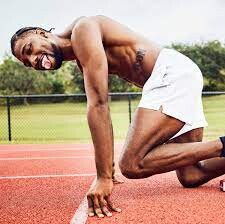
“When I first signed with Adidas in 2016 along with my brother, Josephus, it was like a dream come true for us,” Lyles said in a press release. “Today is just a continuation of that childhood dream.” Lyles shared his vision of achieving all he can on and off the track, and his goal to make a change for future generations. “This is what drives me,” he said.
Lyles has had a fast start to the 2024 season, clocking a new personal best of 6.45 at the New Balance Grand Prix earlier this month, then following up his performance with a 60m win at the U.S. Indoor Track and Field Championships in a world-leading 6.43 seconds, beating his compatriot and former 100m world champion Christian Coleman.
The 26-year-old is the favourite to win gold in the 100m and 200m at this summer’s Paris Olympics. (He has yet to win an Olympic gold medal.) He won bronze in the men’s 200m in Tokyo, losing to Canada’s Andre De Grasse and American Kenny Bednarek.
Along with Adidas, Lyles also has partnerships with Omega Watches, Celsius Fitness Drinks, Comcast and Visa.
by Marley Dickinson
Login to leave a comment
How change of shoes helped youngster Letsile Tebogo smash world record
Letsile Tebogo ran faster than Michael Johnson and Usain Bolt to set a new world 300m record but that would perhaps not have happened had he not changed his running shoes.
Botswana sprint sensation Letsile Tebogo is currently basking in the glory of his new world record after lowering the 300m mark last weekend.
Tebogo smashed the world 300m record following an incredible run at the Simbine Curro Classic in South Africa, running 30.71, to beat South African Wayde van Niekerk's mark of 30.81 set in Ostrava, Czech Republic in 2017.

In what was a world lead and his personal best over the distance, the 20-year-old obliterated the field to take a giant lead, leaving a big gape between him and the chasing pack as he sprinted to the finish line.
It has now emerged that things would have perhaps been different had he not opted for a change of shoes, having decided to ditch his trainers for spikes ahead of the race.
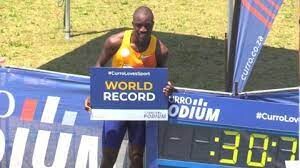
Since sustaining an injury that locked him out of the Zurich Diamond League 200m finals, Tebogo has not used spikes and wore trainers in his season-opening race in January, but his coach Dose Mosimanyane advised him to use spikes in last Saturday’s race in Pretoria only to yield a world record.
“The world record was not in the plan. But I am not surprised. With his training partner, Bayapo Ndori and other athletes in the mix, I knew he would do something but this is not what we came here for,” Mosimanyane said.
The world 100m silver medallist did not just break the seven-year world record but his time was faster than that of American great Michael Johnson, who clocked 30.85 at the same venue in 2000, and Jamaican sprint legend Usain Bolt, who timed 30.97 in 2010.
The world 200m bronze medallist had an impressive 2023 season when he became the first African to win a medal at the World Championships in 100m and also the first from his country to achieve such a feat.
He is hoping to go one better this during the Paris 2024 Games in France where he is seeking to make history by winning his country’s first ever Olympics gold.
by Joel Omotto
Login to leave a comment
Noah Lyles, Christian Coleman set for major showdown at US Track & Field Indoor Championships
Noah Lyles and former world 100m champion Christian Coleman are set for an epic clash will at the US Track and Field Indoor Championships in New Mexico this weekend.
Multiple world champion Noah Lyles is set for a thrilling battle with former world 100m champion Christian Coleman at the US Track and Field Indoor Championships taking place in New Mexico this weekend.
Lyles, Coleman and 2020 World Indoor tour winner Ronnie Baker will be the star attractions in the 60m sprint showdown that also has the likes of Demek Kemp, Ray Wells with, Kendal Williams, Brandon Carnes, Coby Hilton, Pjai Austin, Lawrence Johnson, Zachaeus Beard and Kasaun James.
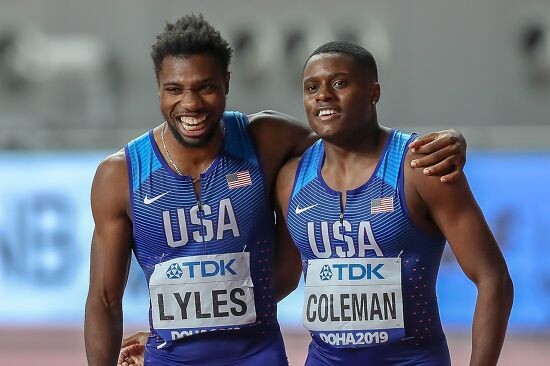
The three-time world 200m champion is fresh from winning the New Balance Indoor Grand Prix in Boston, where he clocked a personal best of 6.44 seconds, and will line up as the athlete with the best time over 60m from the lot.
Lyles clocked 6.34 seconds, a world record in the event at the US Indoor Championships in Albuquerque, New Mexico, in 2018 while Baker managed a personal best time of 6.40 seconds, finishing behind Coleman and the three are set for an epic clash once more.

The 27-year-old claimed he is in good shape after winning in Boston while revealing his lofty ambitions for the World Indoor Championships set to take place in Glasgow, Scotland next month.
“World lead, meet record. Now let’s go out there and get a world indoor medal in Glasgow. Last year I went out there and won three gold medals. This year I want to get four. And if I don’t get four, I am going after three world records," he told the Guardian after the race.
Lyles is seeking to stay in great shape as he gears up for the Paris 2024 Olympics where he has declared his intentions to win up to four gold medals while also eyeing Usain Bolt’s 200m world record.
by Joel Omotto
Login to leave a comment
2026 USAFT Indoor Championships
The 2026 USATF Indoor Championships, presented by Prevagen, are set to take place on February 22-23 at the Ocean Breeze Athletic Complex in Staten Island, New York. This premier event will feature the nation's top track and field athletes competing for national titles and spots on the U.S. team for the 2025 World Indoor Championships in Nanjing, China. The Ocean...
more...Kelvin Kiptum death: Seb Coe, Eliud Kipchoge and Mo Farah lead tributes to marathon star after horror crash
The world of athletics has come together to pay tribute to Kelvin Kiptum after he died in a horrific car crash in Kenya.
Kiptum died alongside his coach Gervais Hakizimana, 36, on Sunday after the car he was driving came off the road and hit a tree. Police said he had "lost control [of the vehicle] and veered off-road entering into a ditch on his left side" before he “drove in the ditch for about 60 metres before hitting a big tree”. A young woman was rushed to hospital after being injured in the crash.
The 24-year-old Kenyan is the men’s marathon world record holder, having run a staggering time of two hours and 35 seconds in Chicago in October. Kiptum had only run his first marathon in 2022 yet had rapidly emerged as a world-class talent to challenge the great Eliud Kipchoge.
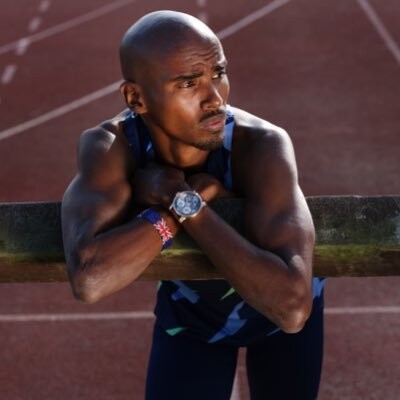
His loss has left the sport reeling and Sir Mo Farah was among those to pay tribute to the immensely gifted runner. "Kelvin was an amazingly talented athlete and had already achieved so much," Farah said.
"He truly had a special talent and I have no doubt he would have gone on to have had an incredible career. I send all my sympathies and condolences to his and Gervais' family and friends at this tragic time."
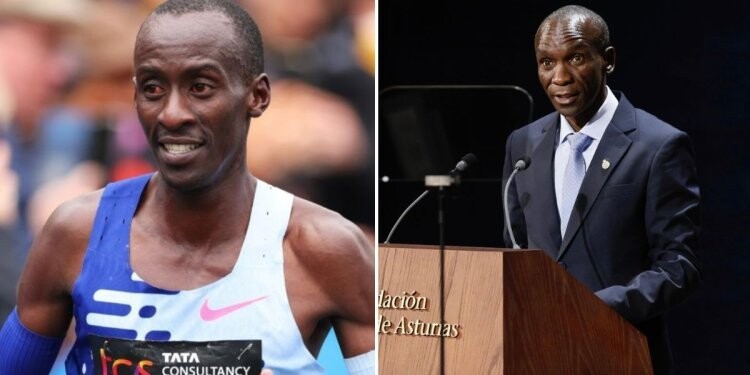
British running great and World Athletics president Seb Coe wrote on Twitter : “We are shocked and deeply saddened to learn of the devastating loss of Kelvin Kiptum and his coach, Gervais Hakizimana. On behalf of all World Athletics we send our deepest condolences to their families, friends, teammates and the Kenyan nation.
“It was only earlier this week in Chicago, the place where Kelvin set his extraordinary marathon World Record, that I was able to officially ratify his historic time. An incredible athlete leaving an incredible legacy, we will miss him dearly.”
Kipchoge is widely considered the greatest marathon runner of all time, yet Kiptum broke his world record in Chicago last year. The 39-year-old wrote: “I am deeply saddened by the tragic passing of the Marathon World record holder and rising star Kelvin Kiptum.
An athlete who had a whole life ahead of him to achieve incredible greatness. I offer my deepest condolences to his young family. May God comfort you during this trying time.”
Kiptum was a natural marathon runner and showed his talent right from the off when he ran fourth fastest time on record (2:01:53) to win the Valencia Marathon in 2022. He then set a course record of 2:01:25 at the London Marathon in April 2023 before taking a gigantic 34 seconds of Kipchoge’s world record time six months later.
London Marathon event director, Hugh Brasher, said: “Kelvin had the sport of marathon running in his feet and at his feet. He was a 'once in a generation' athlete who was set to redefine the boundaries of our sport.
“Three marathons, three wins. The fastest marathon debutant in Valencia, London's course record holder and the world record holder in Chicago, all within the space of less than 12 months. His was a flame that burned so bright and last night was tragically put out.
“As a sport we mourn for a life so tragically cut short, a talent and a work ethos that was only starting to be appreciated and a man that we had only just started to know. Our thoughts are with his family and friends and those of his coach Gervais. We hope that Sharon Chepkirui Kosgei, who was travelling with them, makes a full and speedy recovery.”
Kiptum had only recently announced his intention to run the marathon in under two hours in Rotterdam in April. Kipchoge has run a marathon in one hour 59 minutes 40 seconds, but that time does not count as an official record as it was in a specifically arranged sponsored event with pacemakers.
British marathon runner Emile Cairess said Kiptum could have become "Usain Bolt-esque" as a "figurehead of athletics". He told the BBC : "It's a massive blow because at his level, someone can really capture the attention of people outside of the sport.
"Many people thought they would never see a sub two-hour marathon in their lifetimes but since he came along, it's like it was just a given that he would do it because of his exceptional performances so far. It was almost certain that he would have done it. It's terribly sad and a real shame that we won't get to see him again or to attack that barrier."
Login to leave a comment
Inside Usain Bolt's little-known 11-year love story with Jamaican model
Usain Bolt and Kasi Bennett's journey, from a secret romance to proud parents, embodies love, support, and shared privacy.
Double 100m and 200m world record holder Usain Bolt has been in a long-standing relationship with Jamaican model Kasi Bennett since 2013, according to reports.
This couple's journey, filled with love, privacy, and the joy of parenthood, paints a picture of a partnership built on mutual respect and support.
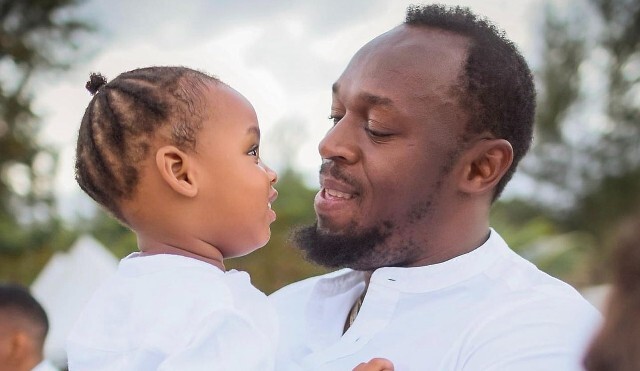
Bennett, who has been the anchor in Bolt's life through his career highs and lows, prefers to maintain a low profile, despite her partner's worldwide fame.
"Usain and I are very private when it comes to our relationship, but it's filled with love and mutual respect," Bennett shared in an interview with Vogue Jamaica.

Their love story began quietly in 2013, but it was not until a 2016 interview with People Magazine that Bolt openly expressed his happiness about the relationship.
“She’s happy, I’m happy!” he exclaimed, shedding light on their private life for the first time.
The birth of their daughter, Olympia Lightning Bolt in 2020, and twins Saint Leo Bolt and Thunder Bolt in 2021, marked new chapters in their lives.
Bennett, embracing motherhood, often shares glimpses of their family life on social media.
“Our babies are our greatest achievements,” she remarked in a heartwarming post on Instagram.
Despite their public figures, Bolt and Bennett have consistently strived to give their children a normal upbringing.
"We want our kids to grow up with the values we hold dear. Fame is fleeting, but family is forever," Bolt reflected in a candid discussion with The Guardian.
Fatherhood has been a new and challenging race for Bolt, as he humorously admitted that handling three children can be more daunting than competing in the Olympics.
Bennett, apart from being a supportive partner and a doting mother, is an advocate for women's empowerment in Jamaica.
Her efforts in various charitable causes have been a source of inspiration.
"It's important for me to use my platform to uplift other women," Bennett stated during a charity event in Kingston.
Their family dynamic is often showcased on Bennett's TikTok account, where she shares candid moments of their life, giving fans a peek into the everyday joys and challenges of being a family of five.
In a touching Father's Day post in 2023, Bennett celebrated Bolt as a father, highlighting his dedication and love for their family. "To the world, he's the fastest man, but to us, he's the world's best dad," she wrote, accompanied by a photo of Bolt with their children.
by Festus Chuma
Usain Bolt
Login to leave a comment
Usain Bolt "not worried" about his world records being broken
Although it feels like just a few years ago that Usain Bolt won his third consecutive Olympic double in the 100m and 200m at the 2016 Olympics, it’s been almost seven years since he last competed professionally. Bolt retired as the biggest star in athletics, and still considers himself a fan of the sport.
In a recent interview with World Athletics, the eight-time Olympic champion was asked if he thinks his 100m and 200m world records will fall anytime soon. Bolt replied that he is “not worried” about that possibility.Bolt’s world record marks of 9.58 seconds in the 100m and 19.19 seconds in the 200m were both set at the 2009 World Championships in Berlin.
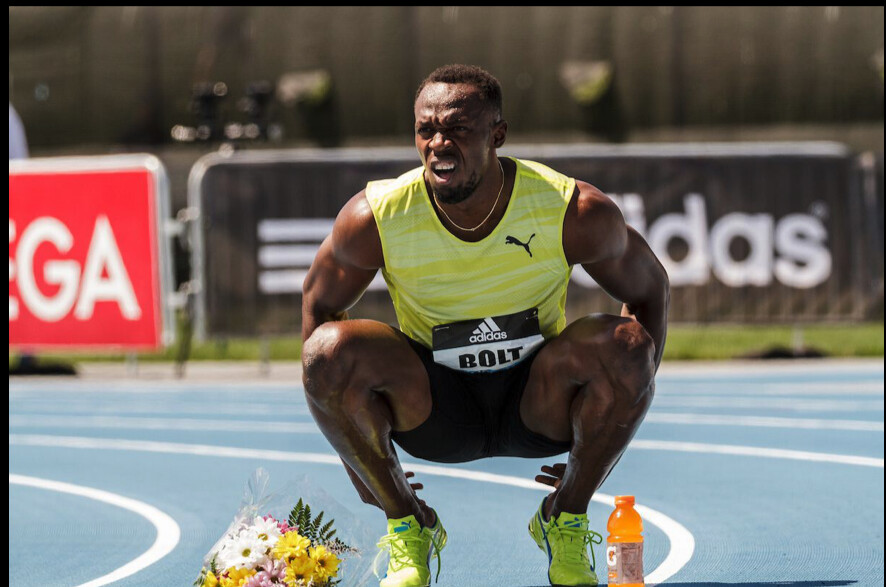
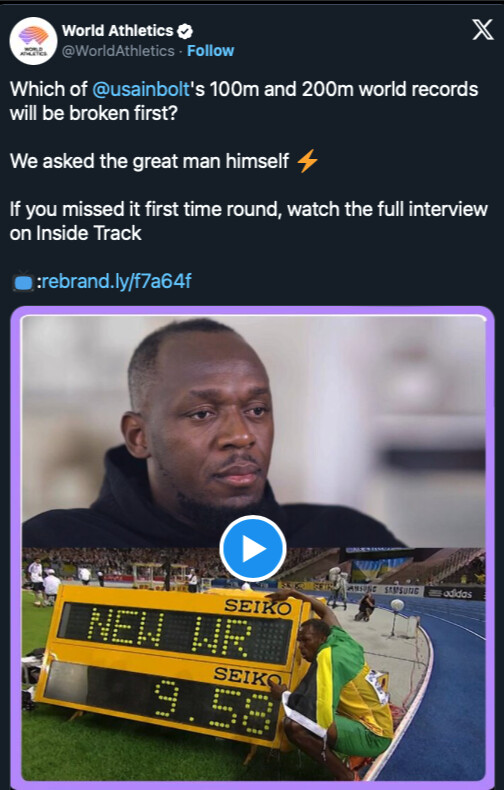
“I’m not worried about any of them,” Bolt said regarding the times. “I think the hundred will be harder (to break) because it’s quicker. If you make a mistake during the race, you’re not going to get it. It’s a lot more technical.” The Jamaican sprinting icon told World Athletics that he knew he was going to break the world record in Berlin, because he was in excellent shape at the time.The 2022 100m world champion Fred Kerley and the current world champion Noah Lyles have been vocal about trying to chase Bolt’s records, but neither has come close.
Lyles, who was named as the 2023 World Athletics Male Track Athlete of the Year after winning three gold medals in Budapest, came within a tenth of a second of the 200m world record at the 2022 World Championships in Eugene, Ore., running 19.31 seconds to win gold and set the American 200m record.
His time made him the third-fastest 200m runner in history behind the two Jamaicans: Bolt’s 19.19 and Yohan Blake’s 19.26.“Jamaica’s Yohan Blake to retire after Paris Olympics” — Canadian Running Magazine
Bolt’s 100m record of 9.58 has gone untouched for 14 years and 4 months, and on May 8, 2024, he will surpass U.S. sprinter Jim Hines to become the athlete who has held the 100m world record the longest. Hines was the first sprinter to break the 10-second barrier in 1968 and held the 100m world record for 14 years, 8 months and 19 days, until another American sprinter, Calvin Smith, lowered his mark by two-hundredths of a second in 1983.
No sprinter has run under 9.75 seconds since 2015. The 37-year-old said he enjoys still being referred to as the fastest man ever, and it’s something he will never get tired of hearing. “It’s a great title to have. It’s something that I enjoy hearing and I enjoy knowing,” said Bolt.
by Running Magazine
Login to leave a comment
Usain Bolt remains undaunted about his world records being broken
The world's fastest man Usain Bolt remains unfazed about any athlete breaking his two world records.
Double (100m and 200m) world record holder Usain Bolt remains unfazed about anyone breaking his world records.
The fastest man in the whole world set the 100m world record of 9.58 and the 200m world record of 19.19 at the 2009 World Championships in Berlin, Germany and they are yet to be shattered.
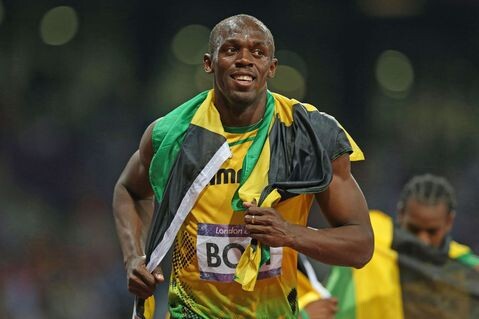
Many sprinters have been bullish about breaking the world records but Bolt believes it will be difficult to break his records. Some of the athletes targeting the world records include triple world champion Noah Lyles, Africa’s fastest man Ferdinand Omanyala, and former World champion Fred Kerley.
Kerley has a Personal Best time of 9.76 while Omanyala, the reigning Commonwealth Games Champion has a Personal Best of 9.77. On his part, Lyles ran his Personal Best of 9.83 in the semifinal of the 100m at the World Championships in Budapest, Hungary.
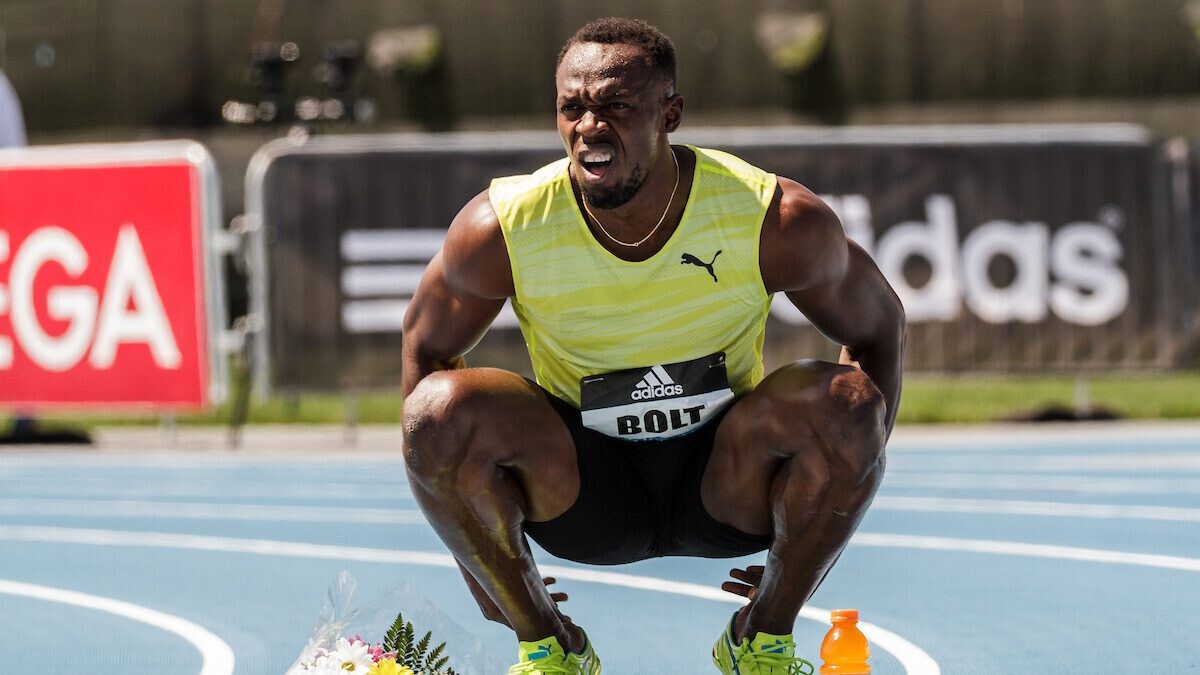
Follow the Pulse Sports Kenya WhatsApp Channel for more news.
“I knew I was going to break the world record because I was in such good shape at the time and I was running great throughout the season. Not worried about any of them.
"I think the hundred is going to be harder because it’s quicker and if you make a mistake during the race you’re not going to get it. It’s a lot more technical so I think maybe the hundred is going to go last,” Bolt said in an interview with World Athletics.
The multiple Olympic champion also commented on still being known as the fastest man ever as well as his relationship with the fans over the years.
“It’s a great title to have. It’s something that I enjoy hearing and I enjoy knowing. It’s always been so beautiful for me. They give me so much energy.
"I remember even through the World Championships in the pandemic I was like I could not compete in this. By myself in the stadium, I could not because I live so much for the energy and the vibes,” he said.
by Abigael Wuafula
Login to leave a comment
Usain Bolt sparks speculations of making sensational return to sprinting
Fans across the world are speculating that Bolt could make a comeback in the 2024 Paris Olympics.
World’s fastest man ever Usain Bolt has sent tongues wagging over a possible return to the track going by his latest post on his social media platforms.

Bolt was last in action back in 2017 when he competed at the Kingston Racers Grand Prix clocking 10.3 to win the race.
In a post on his Instagram handle, Bolt posted a video of himself going through the paces as he ran up the staircase of a stadium.
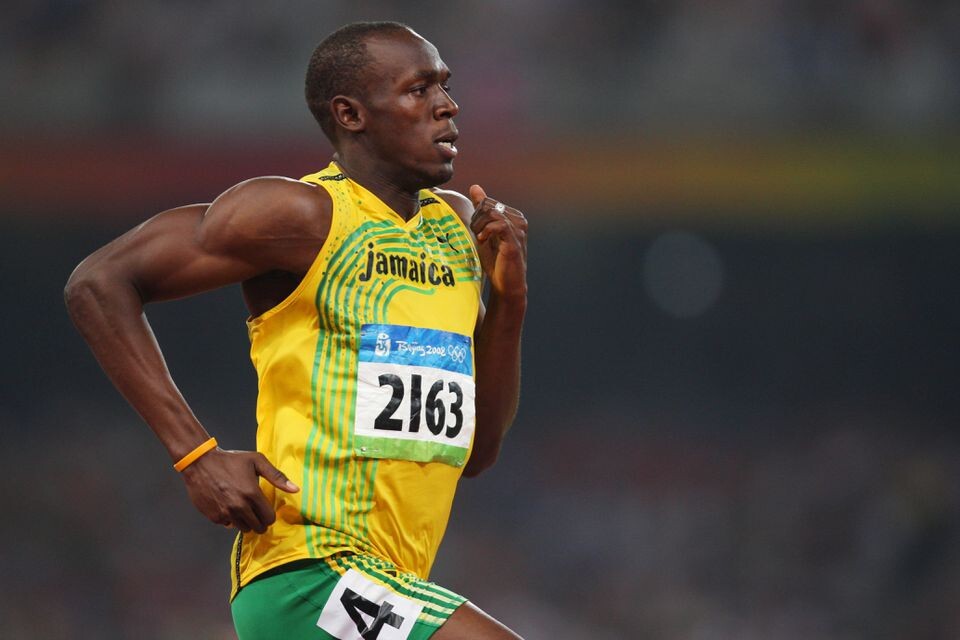
The speed demon accompanied the video with the caption, ”What we been through is more than tongue can tell.”
The post left a number of fans speculating whether Bolt is gearing up for the 2024 Paris Olympics after he was a surprise inclusion in the torch-bearing ceremony.
“Come on man! One more Olympics!!,” read one of the comments on the post. “What? Usain bolt coming in 2024 Olympics,” commented another Instagram user.
One of the users pinpointed to financial implications of Bolt’s return to the sport as the user called for the Olympic committee to hand him an active role in the games.
“His return even fa (for) one race would sell out any stadium but a deal would have work out tickets sale would have to split 50/50 plus tv network I believe the Olympic committee should have this man as a commentator are have something to do with sport,”
Bolt became a household name during his 13-year career that saw him etch his name into the annals of history, winning an impressive eight Olympic gold medals and 11 World titles.
The 37-year-old’s maiden World Championship gold medal will forever live in his memory and that of athletics enthusiasts after clocking a 100m record in a time of 9.58.
Since his retirement, Bolt has dipped his toes in a number of sports including football where he haboured the dream of signing for Manchester United.
The sprinter also once played NBA All-Star Weekend Celebrity Game and had an offer to join cricket side Melbourne Stars owing to his love for the sport from a young age.
by Imran Otieno
Login to leave a comment
American legend Michael Johnson shares how athletes can change the sport and earn more from it
The former 200m and 400m world and Olympic record holder has offered an advise to athletes on how they can change the sport for the better after years of earning low amounts
American sprint legend Michael Johnson has advised prominent athletes to lead from the front if they have to change the status of athletics and earn more from it.
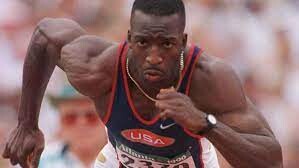
Johnson, who has been vocal about the ‘low amounts’ athletes earn from various events, shared how he had to ensure he earned what he deserved against strong resistance and thinks athletes are currently getting the short end of the stick because they do not speak out.
“My first exposure to pro track was Summer 1989 competing in Europe while still a college athlete,” Johnson pointed out on X.
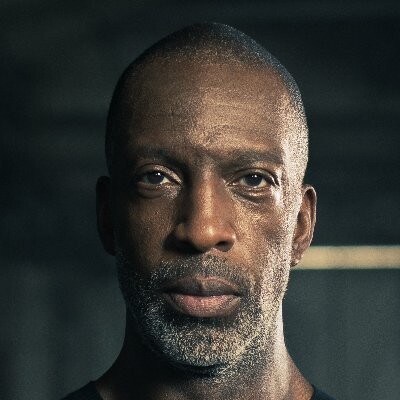
“Remember seeing Carl Lewis treated much better than everyone else. 1990 my first year as a pro I’m the top athlete in the sport. My appearance fee was skyrocketing and I’m being paid literally in cash. Customs was stressful! Had to eventually force meets to wire my funds.”
Johnson then explained how he had to fight to get paid in cash when IAAF (now World Athletics) decided to reward athletes cars for winning at the World Championships.
“1993 IAAF (World Athletics) finally decide to offer a prize for winning World Champs. But not cash. A Mercedes 190 ($30K value). Myself, Butch Reynolds, Mike Powell, Gwen Torrance, and Mike Conley tried to organize a boycott if they didn’t offer cash,” he added.
“Many athletes refused and wanted the car. So, my agent and I negotiated my own deal. After ‘96 I’m a global superstar and meets allow their sponsors kids access to the warmup area to ask me for autographs while I’m warming up and preparing to race.
“Had to ask them to stop it and organize proper autograph sessions for me to meet fans. One meet organizer tried to shame me in the media saying I didn’t appreciate fans.”
The former 200m and 400m world and Olympic record holder went on about how he, Carl Lewis and Usain Bolt forced the sport to change for them to earn what is right, something he feels the current crop of athletes can realize if they speak out strongly.
“My fee kept rising. Meets colluded and agreed none would pay me above $100K. They each violated their own agreement. Carl before me did his own thing, I did mine, and Bolt did his thing,” said Johnson.
“Each of [us] forced the sport to change for us, but neither of us were able to change the sport. Until a critical mass of prominent athletes work together there will be no change.”
Johnson has been a critic of World Athletics and the amounts they pay athletes from various competitions, saying not much has changed since he started running three decades ago.
by Joel Omotto
Login to leave a comment
World champion Noah Lyles wins award for best U.S. track and field athlete for third time
The world 100m and 200m champion is only the second U.S. athlete to win the Jesse Owens Award three times.
The 2023 season has been one to remember for double sprint world champion, Noah Lyles, who became the first sprinter since the renowned Usain Bolt in 2015 to win both the 100m and 200m events at a World Athletics Championships. On Wednesday, he added one more award to his impressive list of accolades, winning the 2023 Jesse Owens Award for the best U.S. male track and field athlete.
This is Lyles’s third time winning the prestigious award given annually by the U.S.A. Track and Field (USATF), putting him in elite company with only Michael Johnson as the only other athlete to win the award three times.

Lyles was the most dominant sprinter in the world this year, winning gold medals in the 100m, 200m and 4x100m relay this past summer at the 2023 World Athletics Championships in Budapest. The three world titles were added to the previous three he won at the 2022 World Athletics Championships in the 200m and in 2019 in the 200m and 4x100m relay.
“It’s an honor to receive my third Jesse Owens Award and to be associated with such a legendary athlete,” said Lyles in his acceptance speech. “I want to thank USATF for this award, as well as my coach, Lance Brauman, my family and everyone who supported me on this historic season. I couldn’t have done this alone and I can’t wait to pick up right where we left off for 2024.”

The Jackie Joyner-Kersee Award was also awarded by the USATF to the top female athlete of the year, which went to newly-crowned world 100m champion Sha’Carri Richardson. Richardson is the first female 100m sprinter to win the Jackie Joyner-Kersee Award since Carmelita Jeter in 2011.
Richardson and Lyles were both nominees for World Athletics’ Athlete of the Year. Lyles was announced as one of the five finalists for the award earlier this week.
by Marley Dickinson
Login to leave a comment


